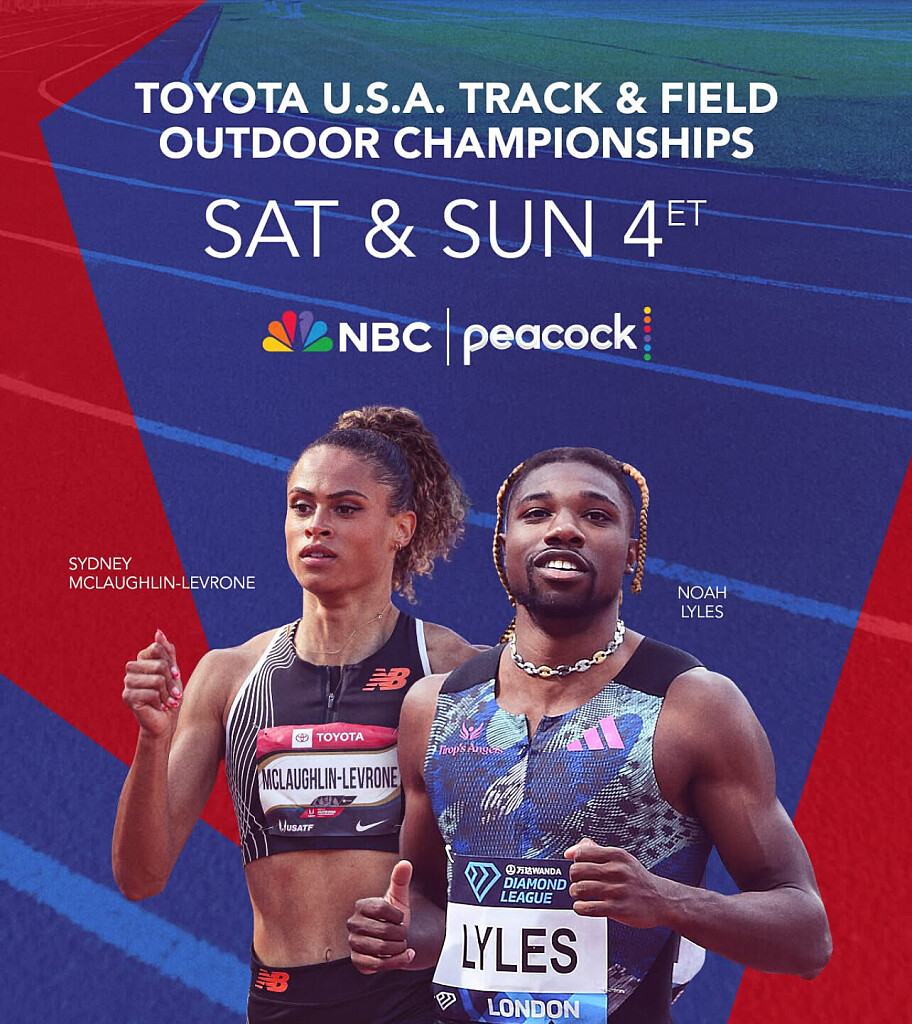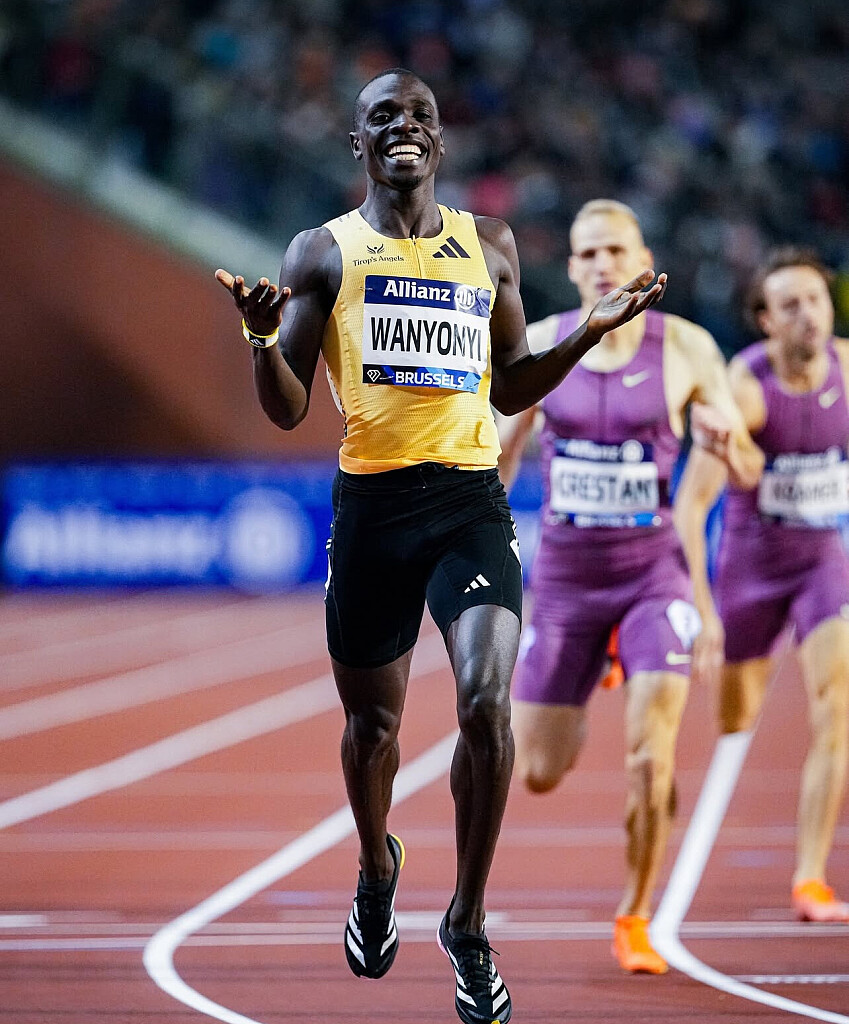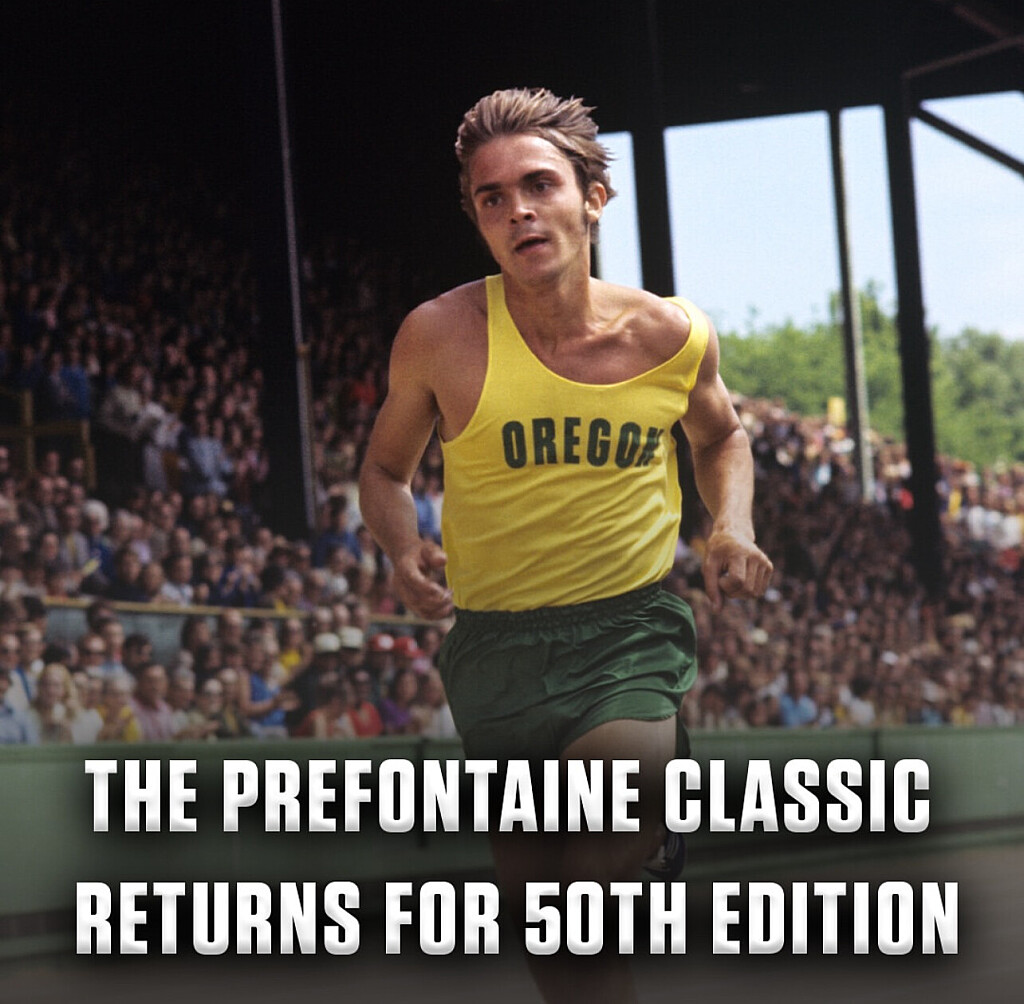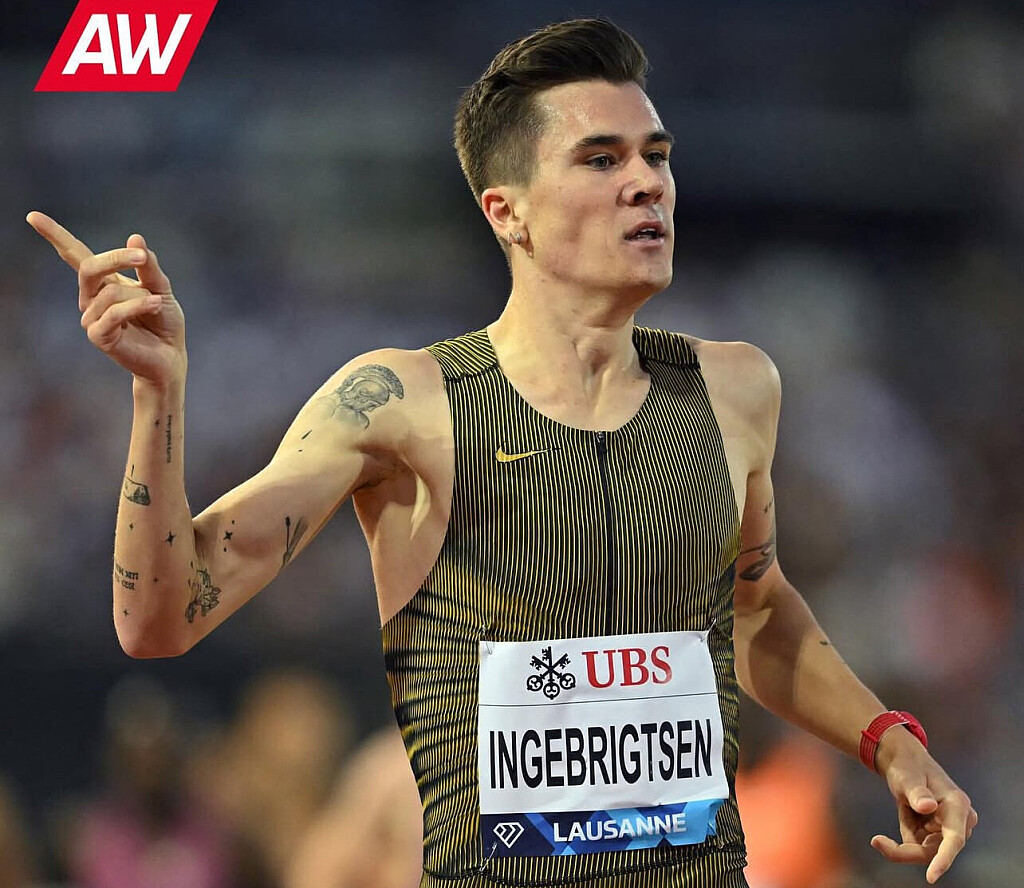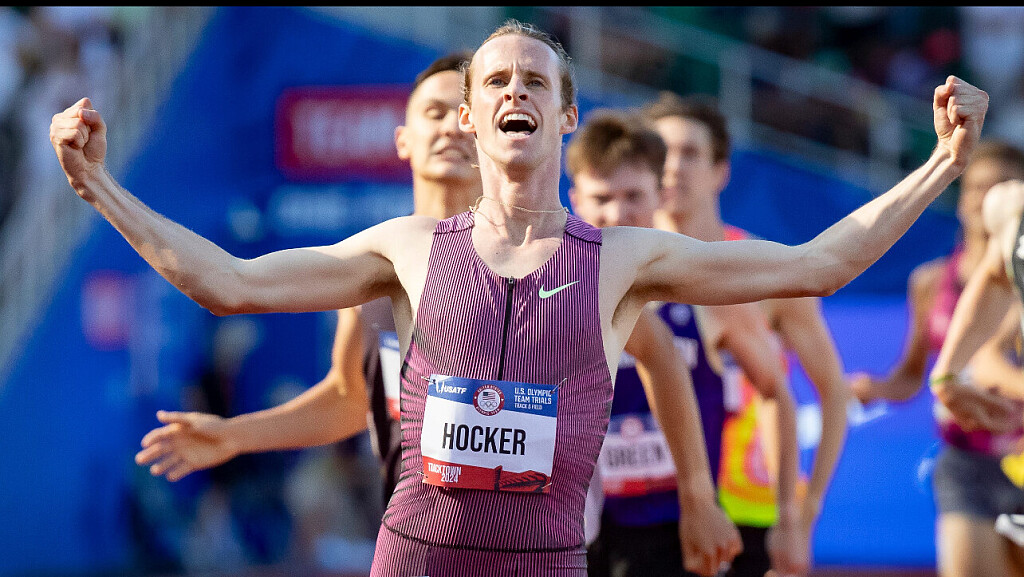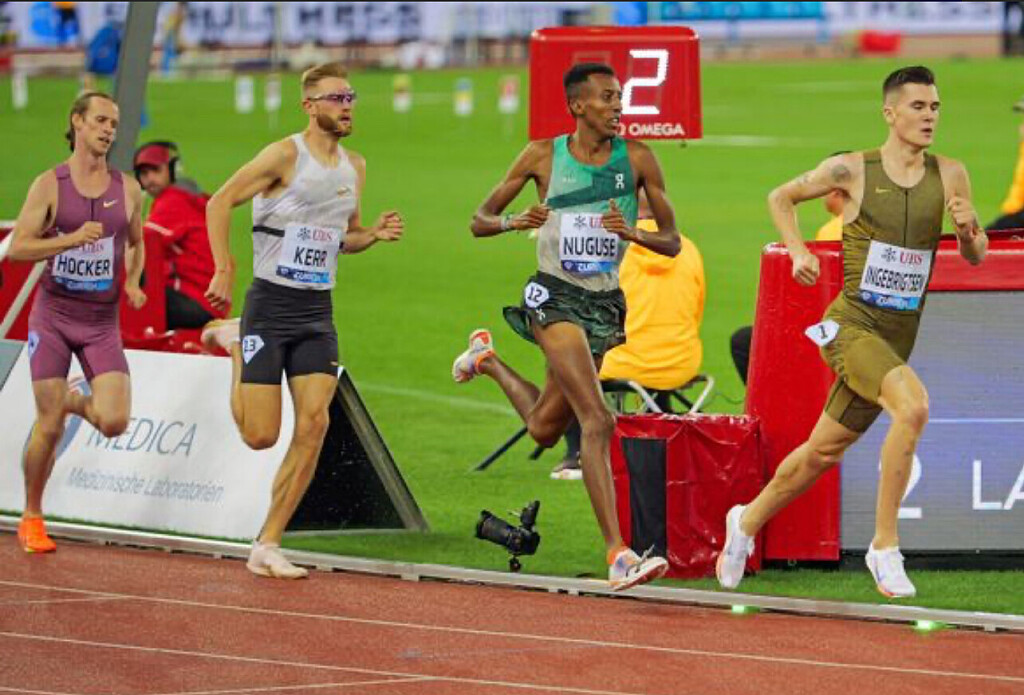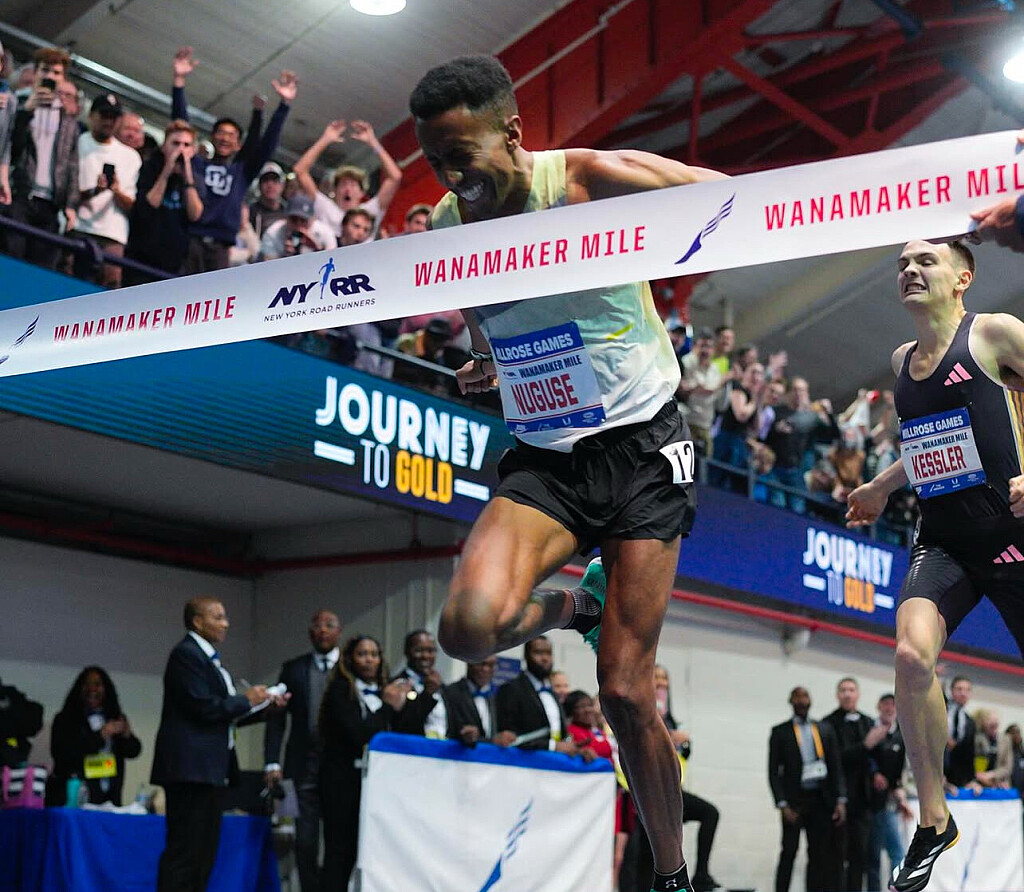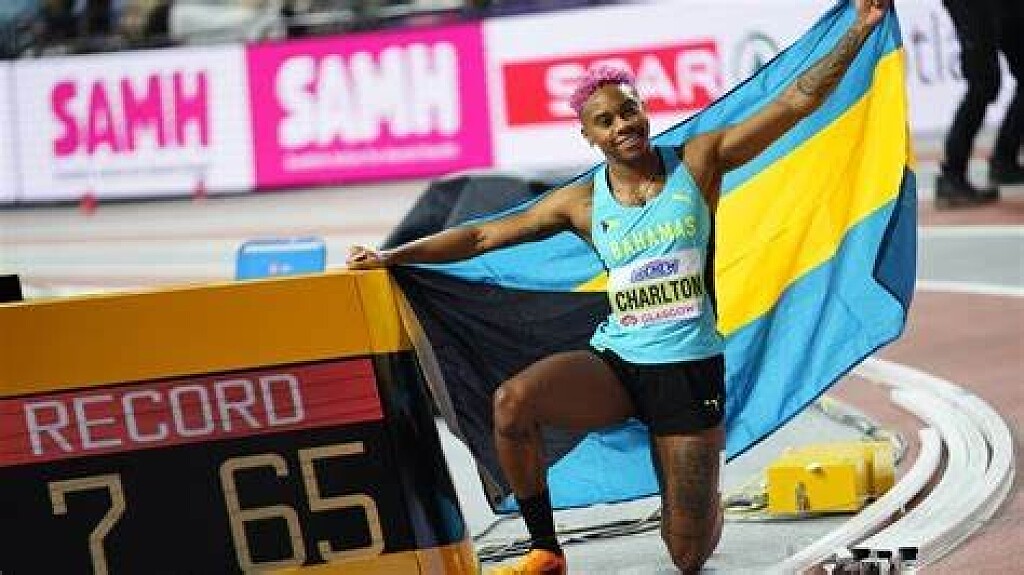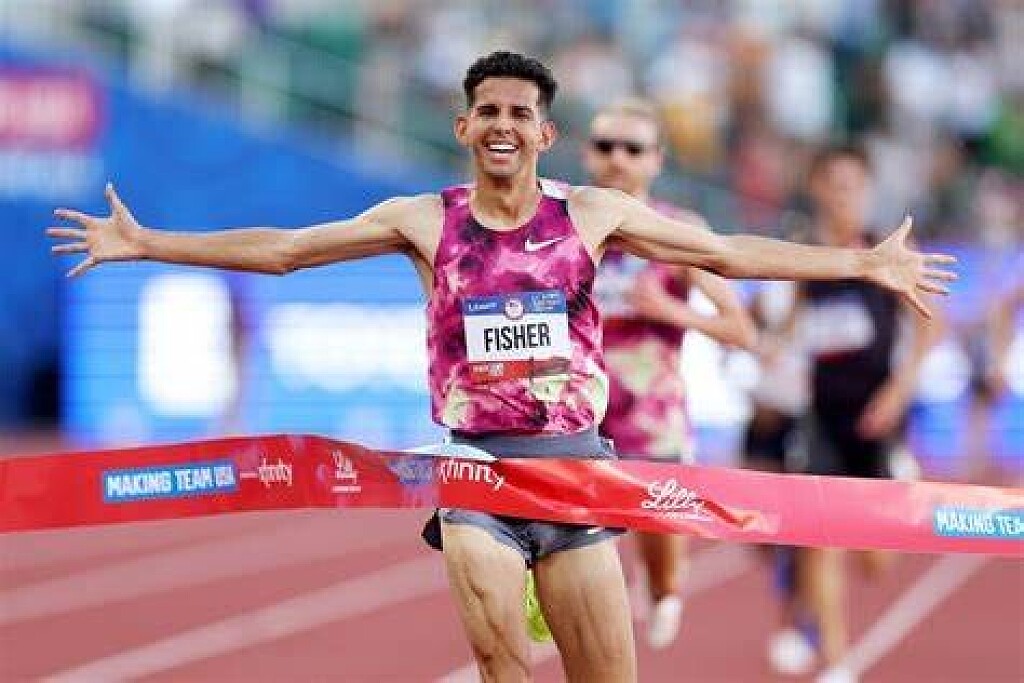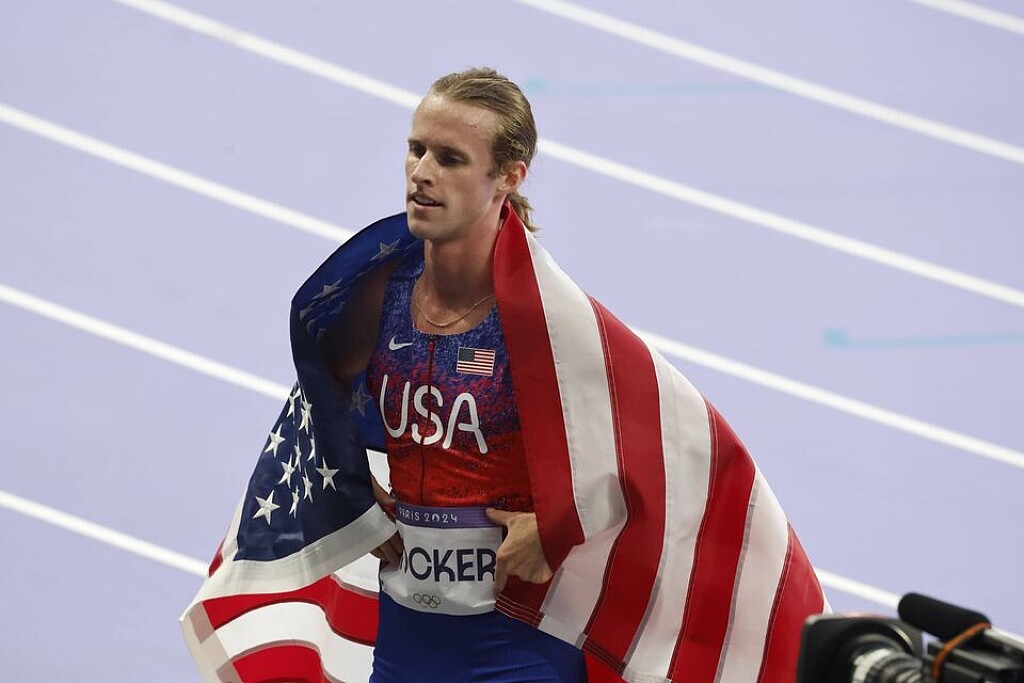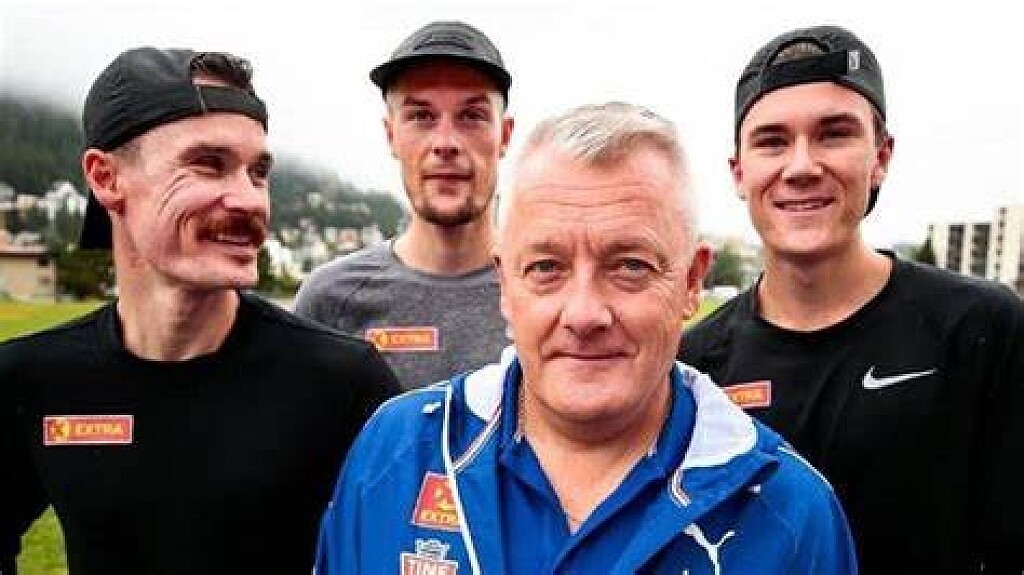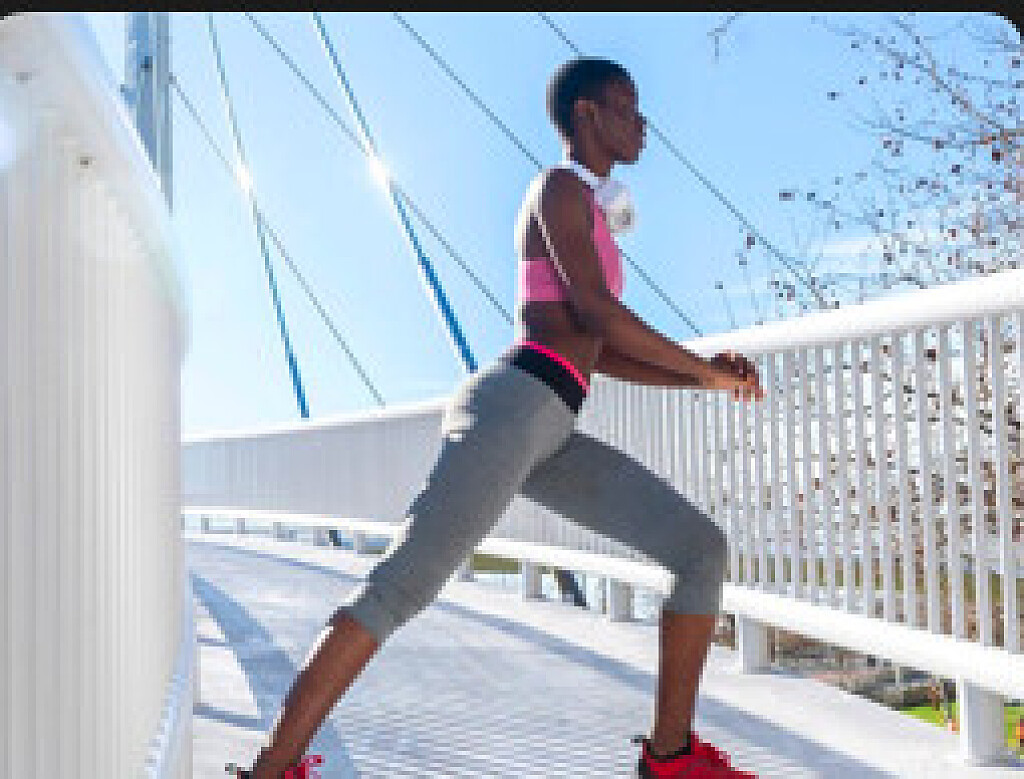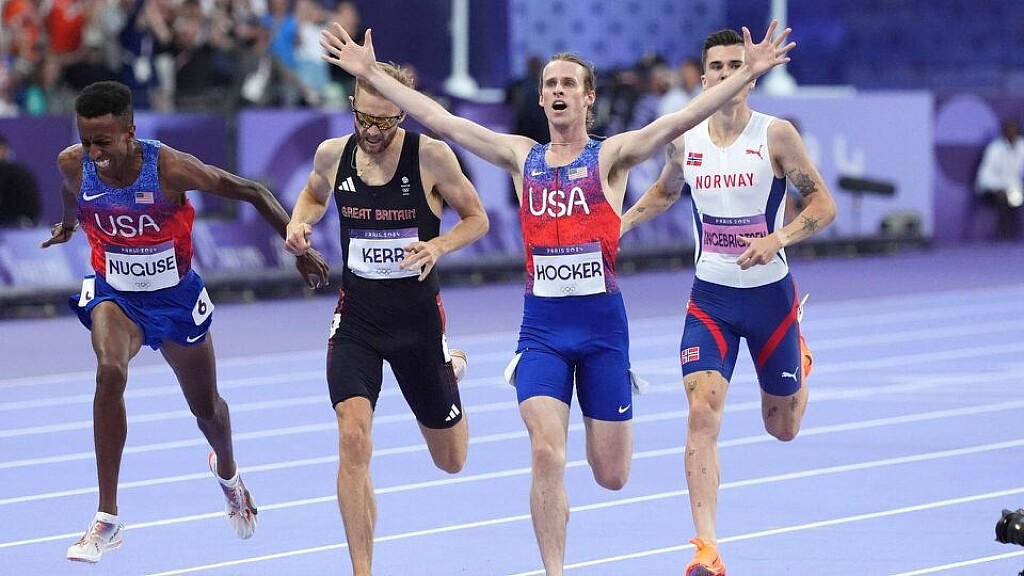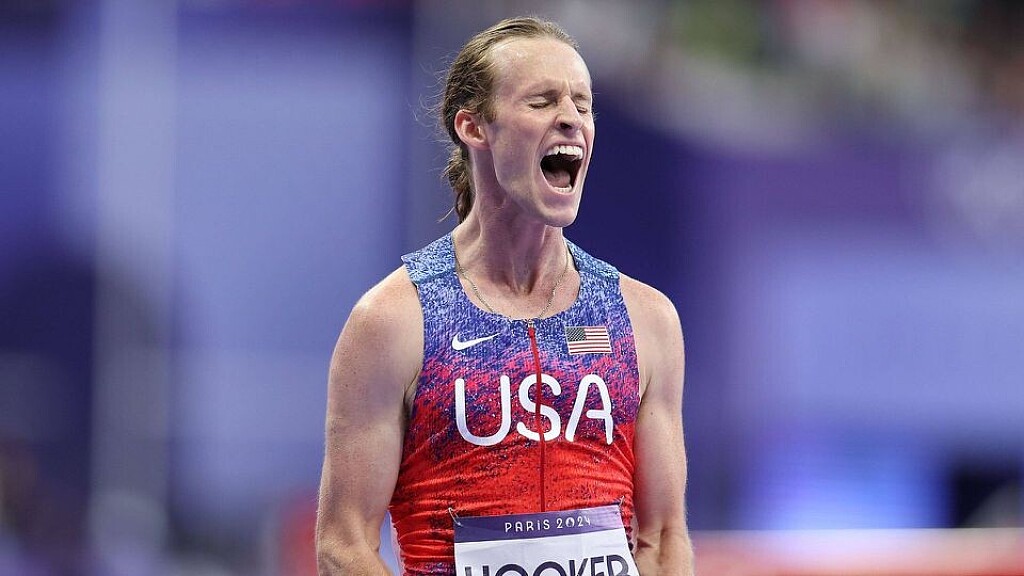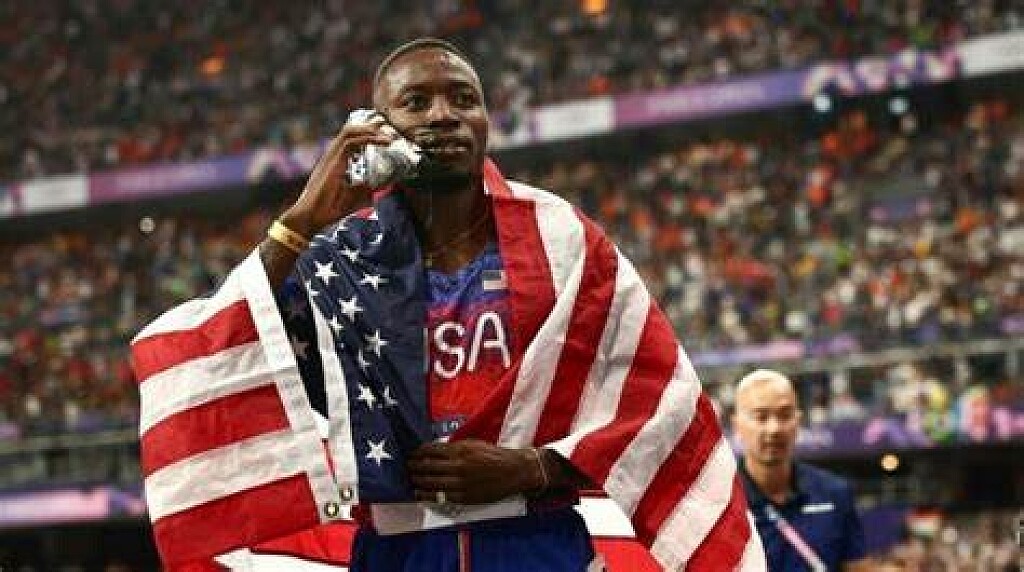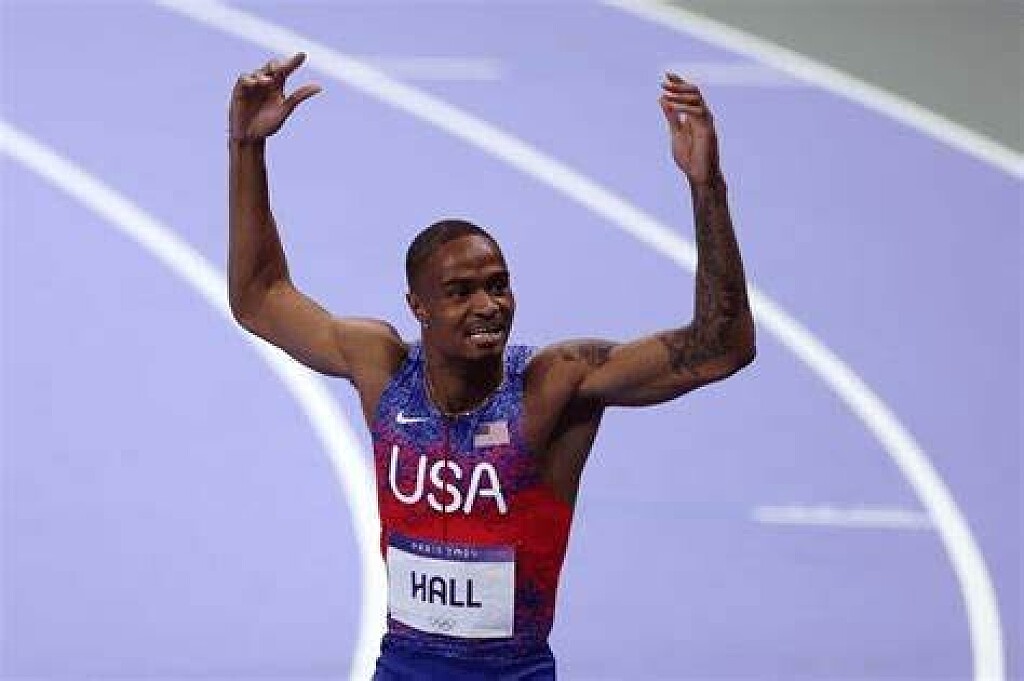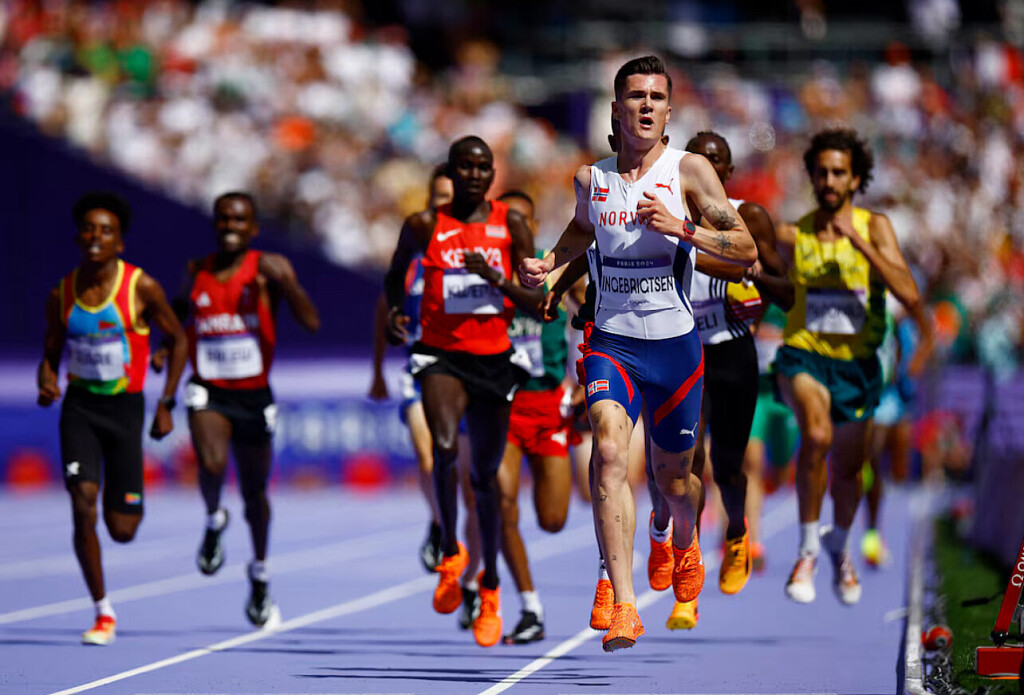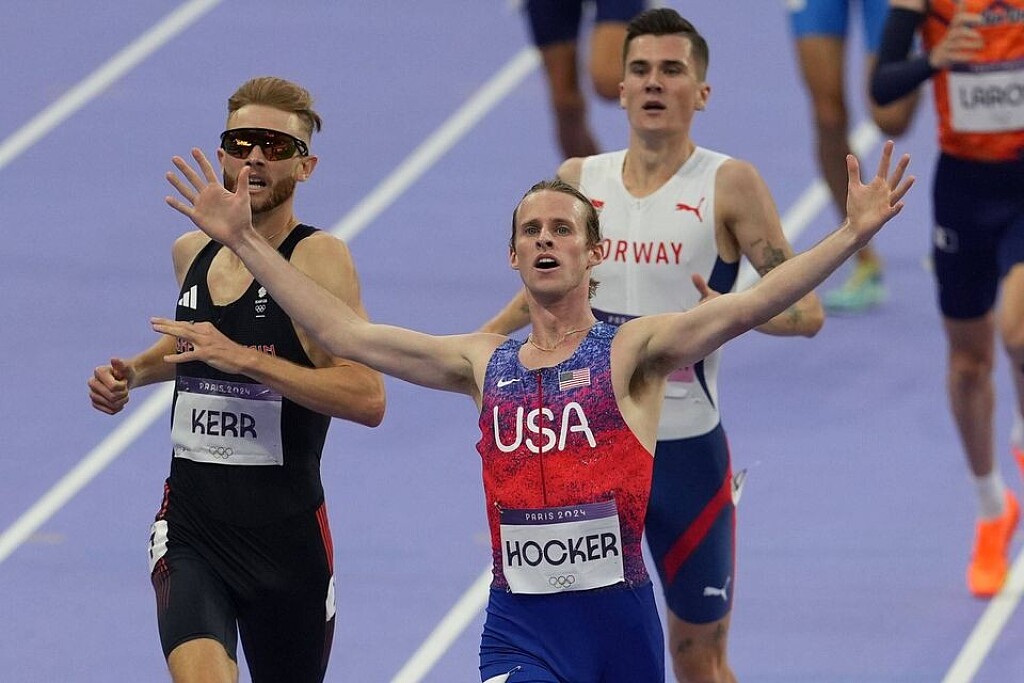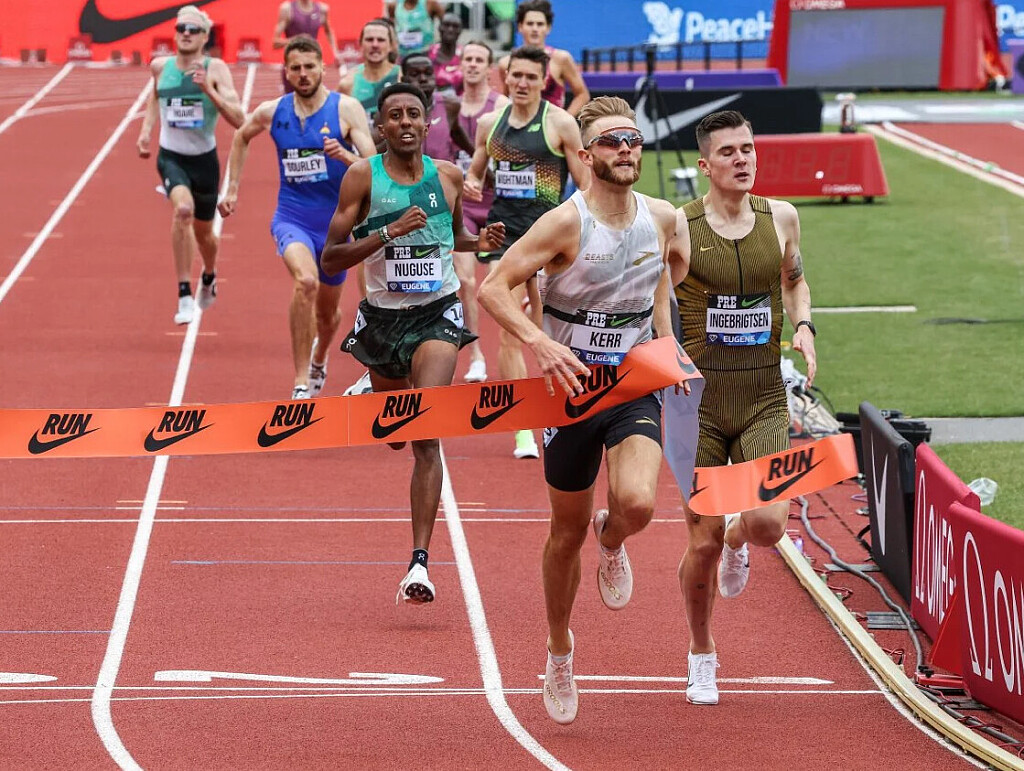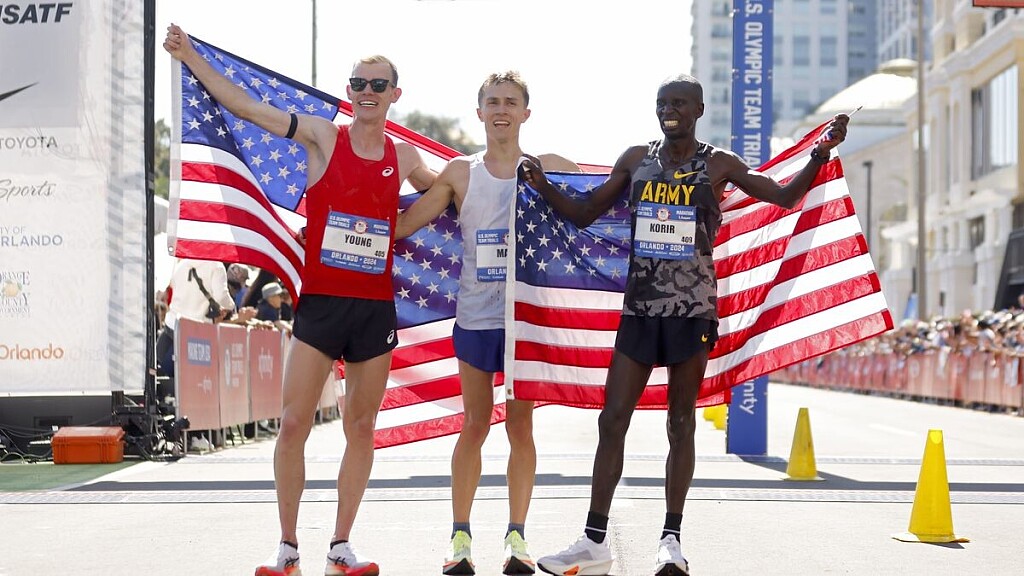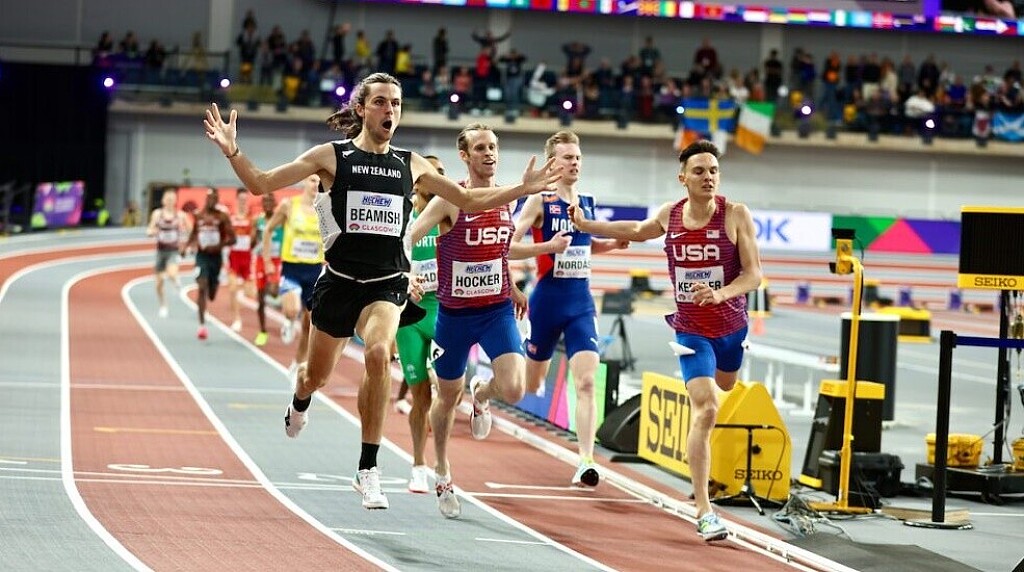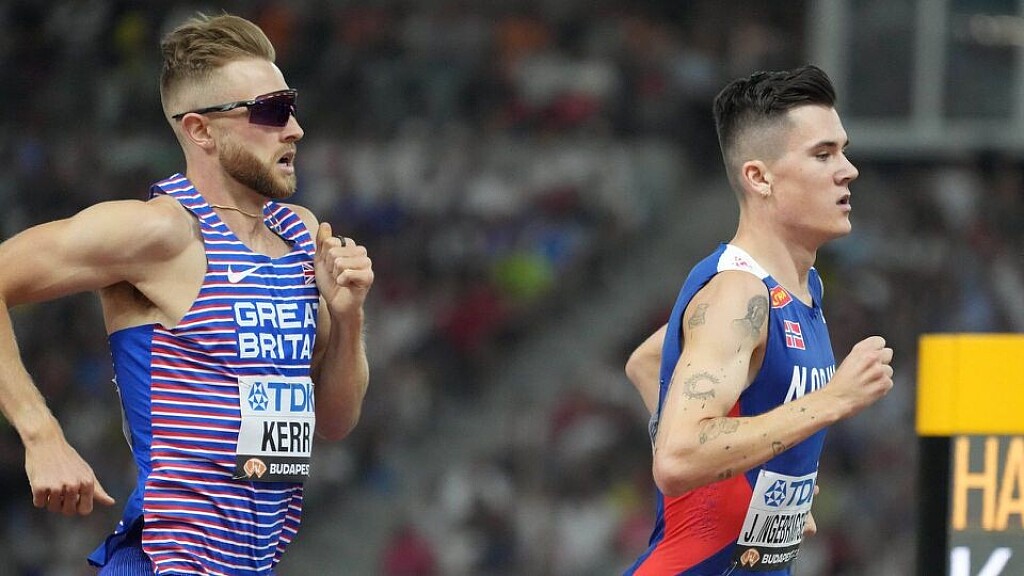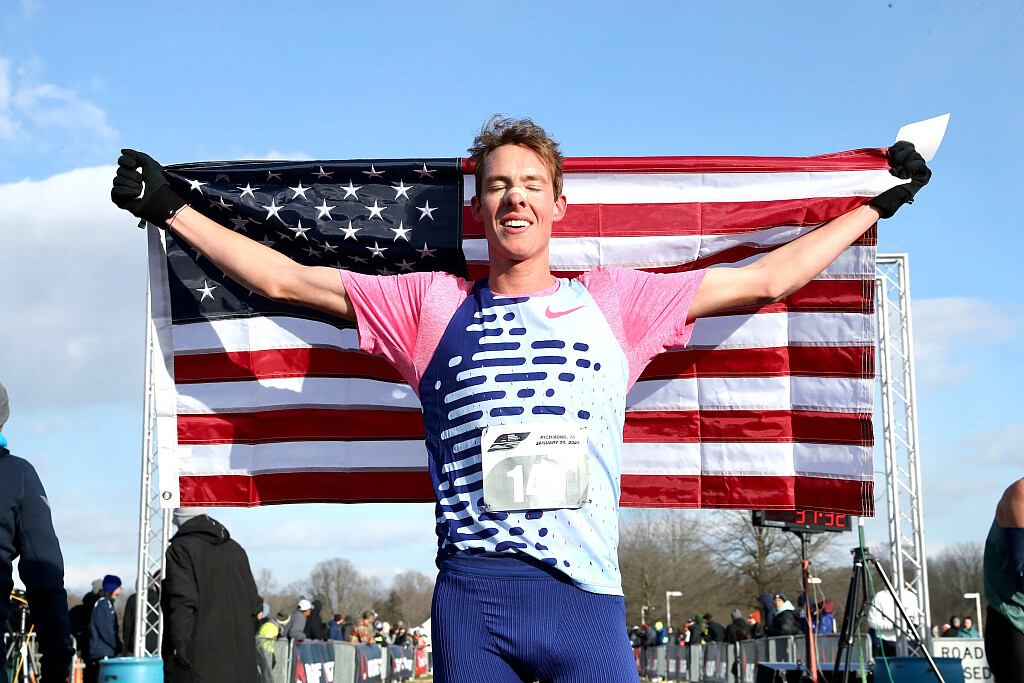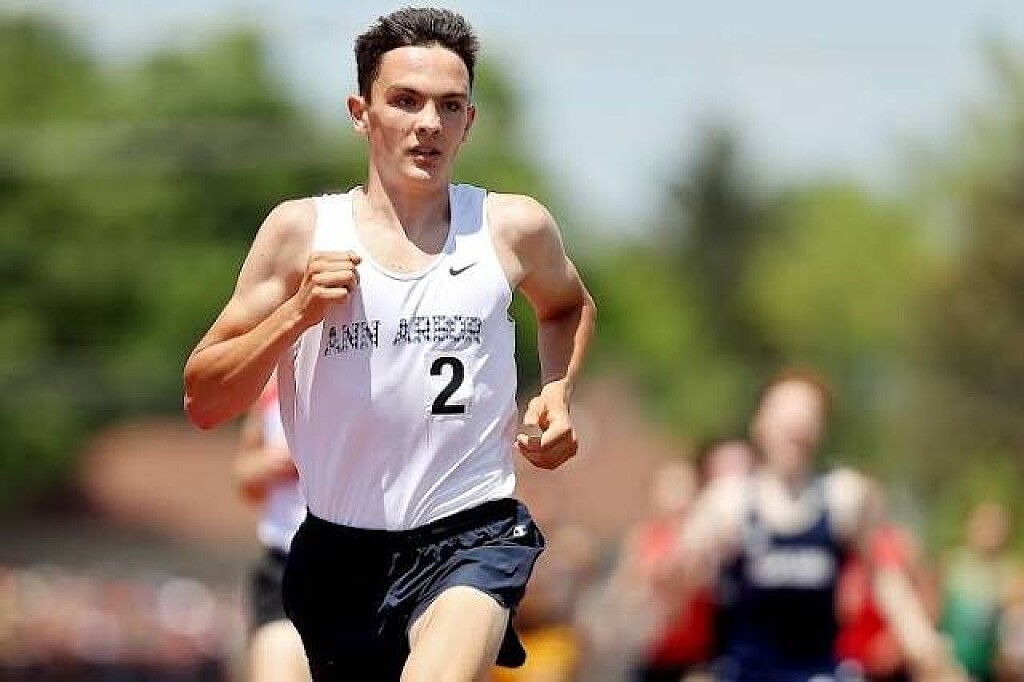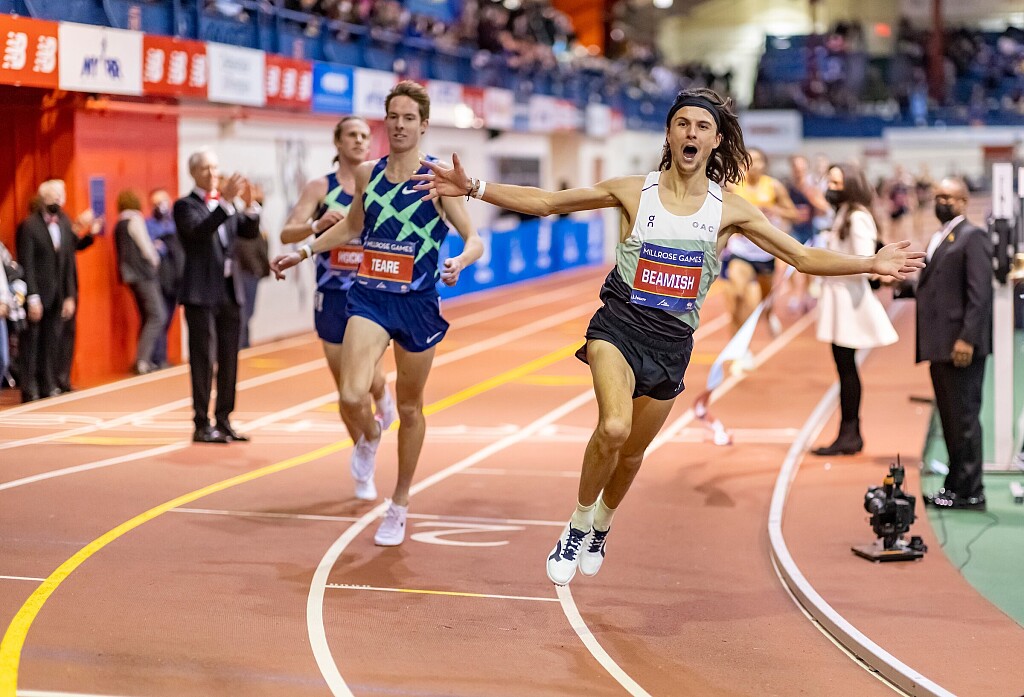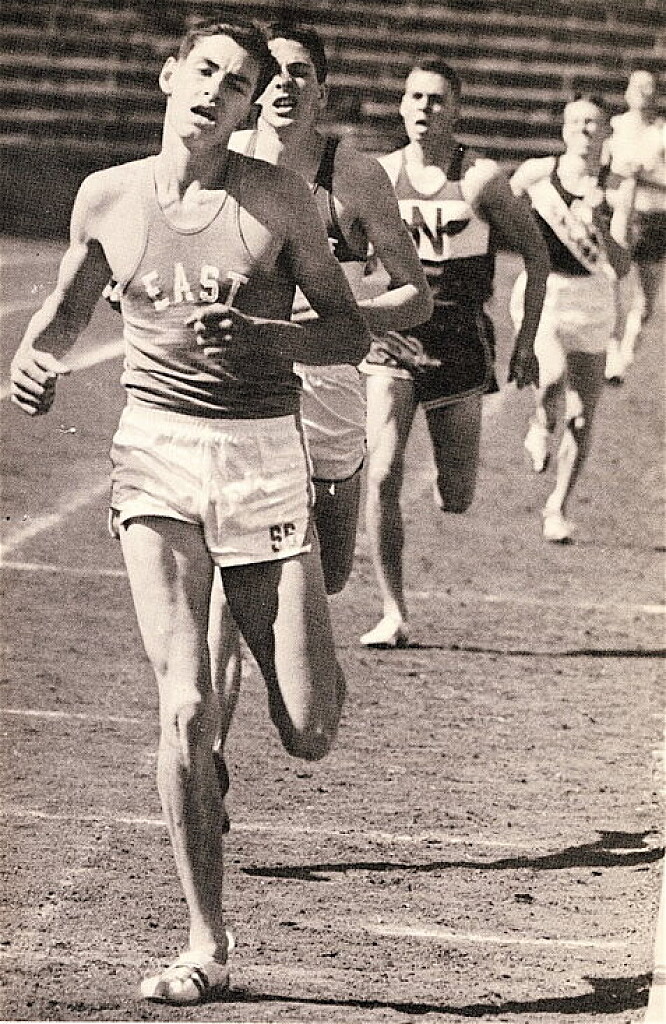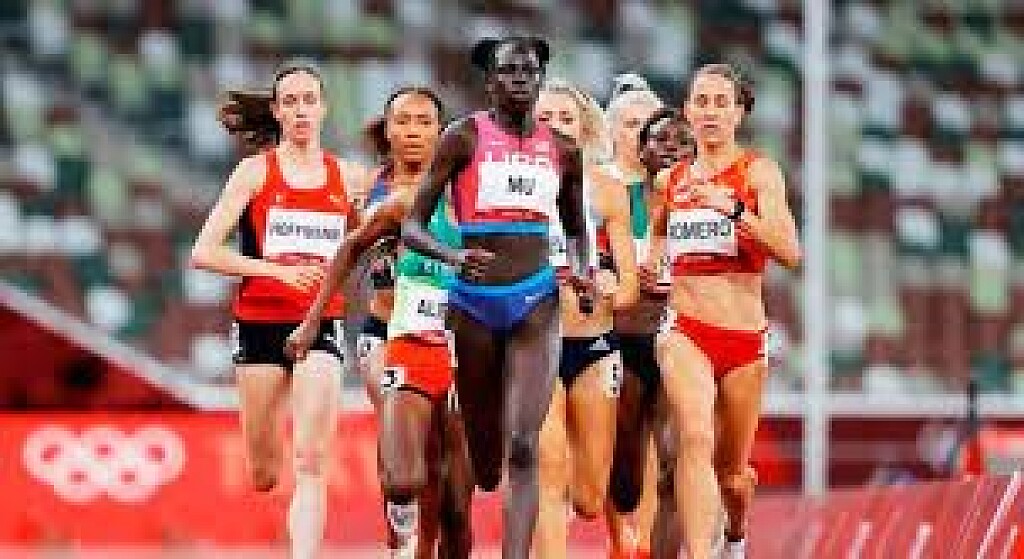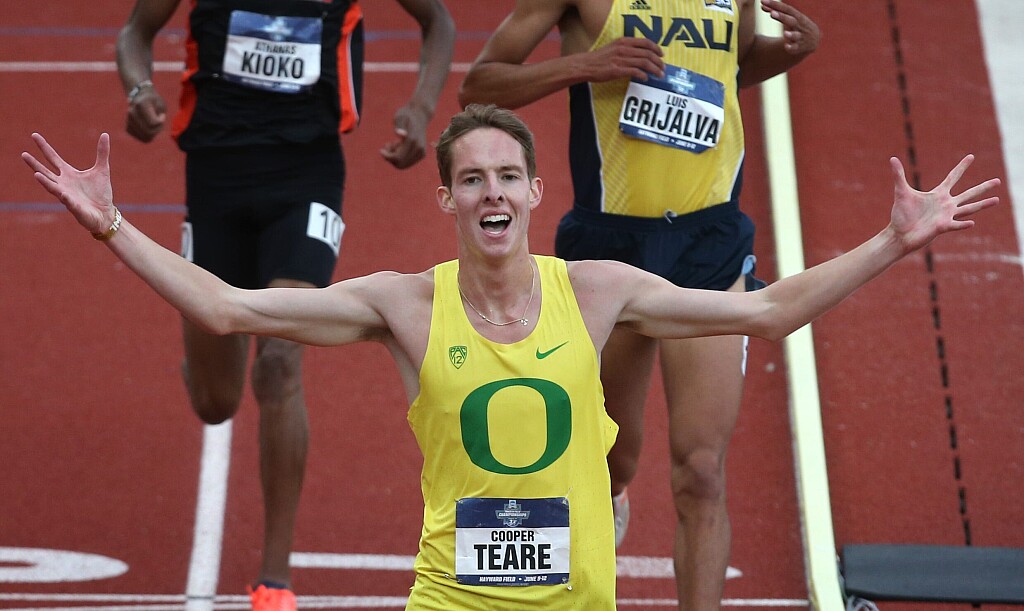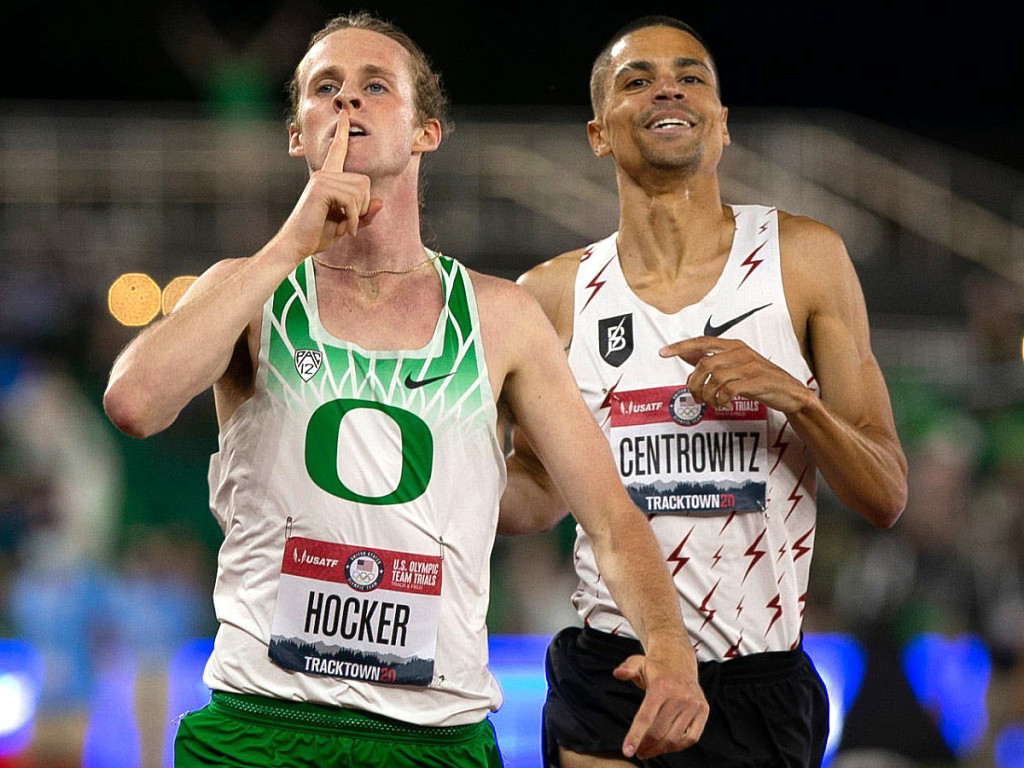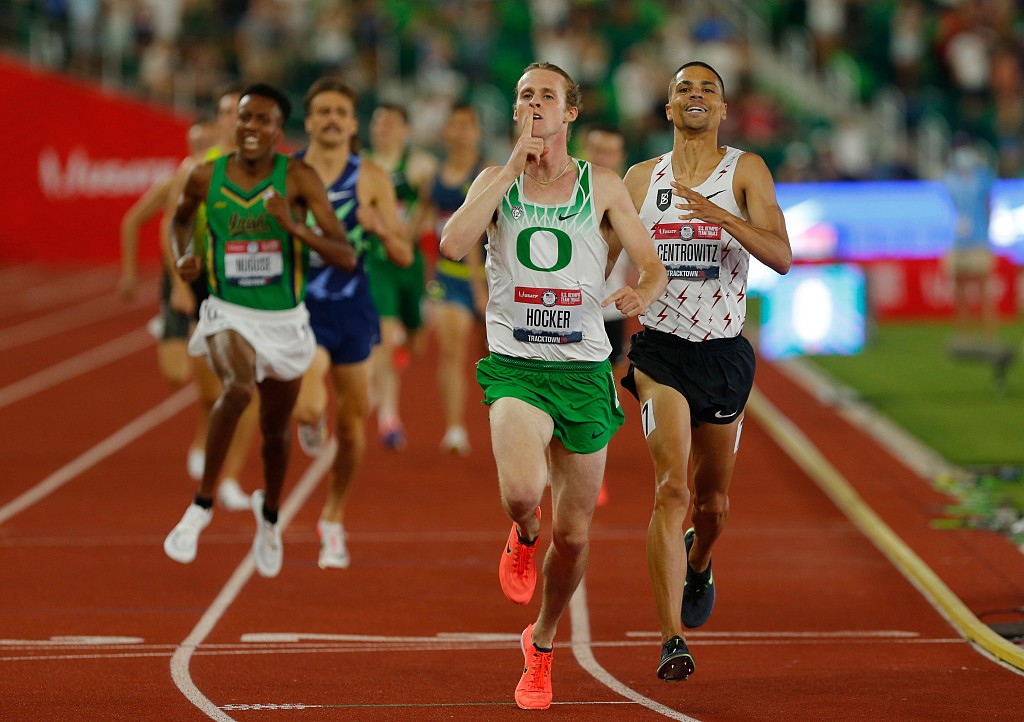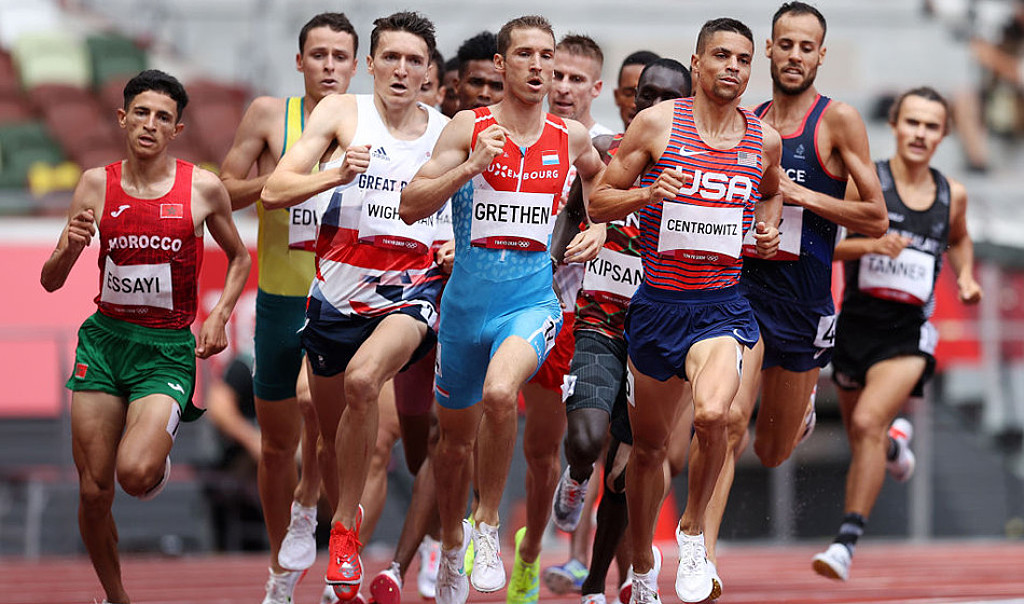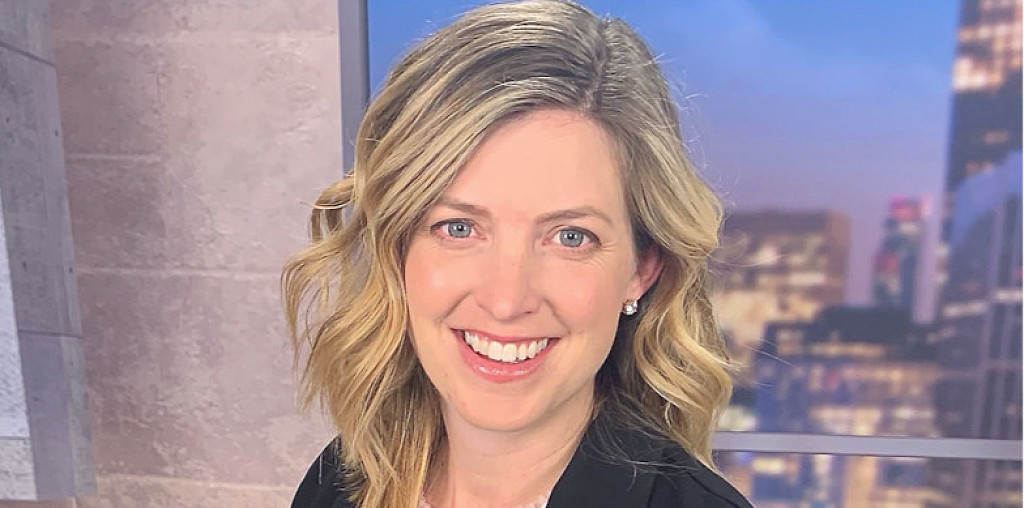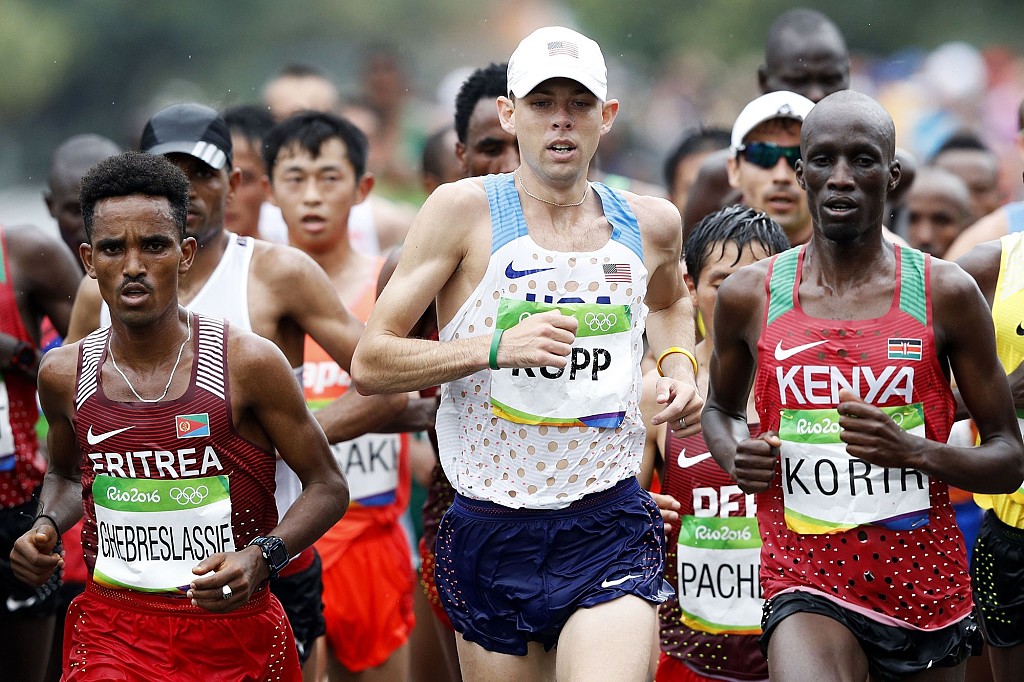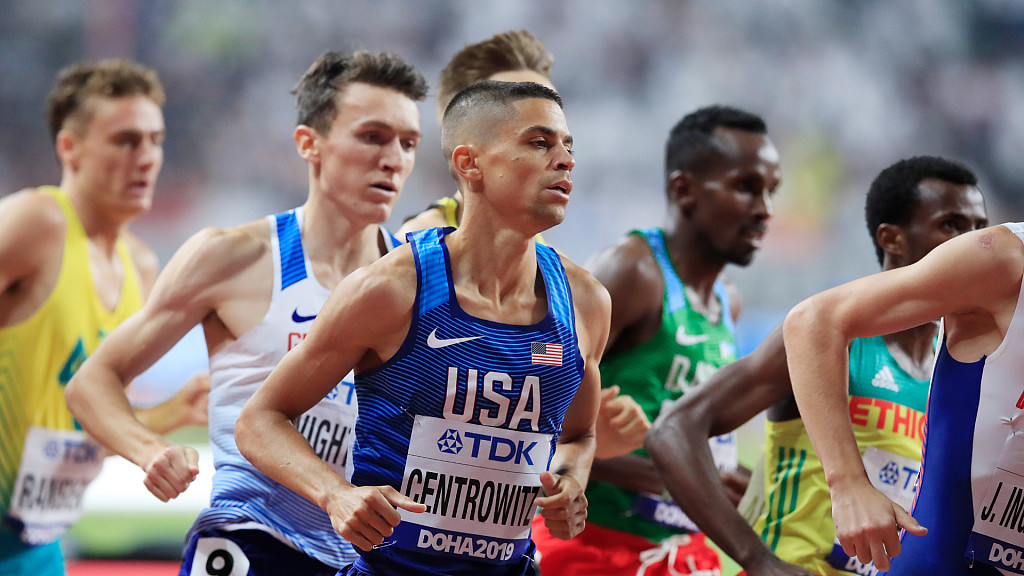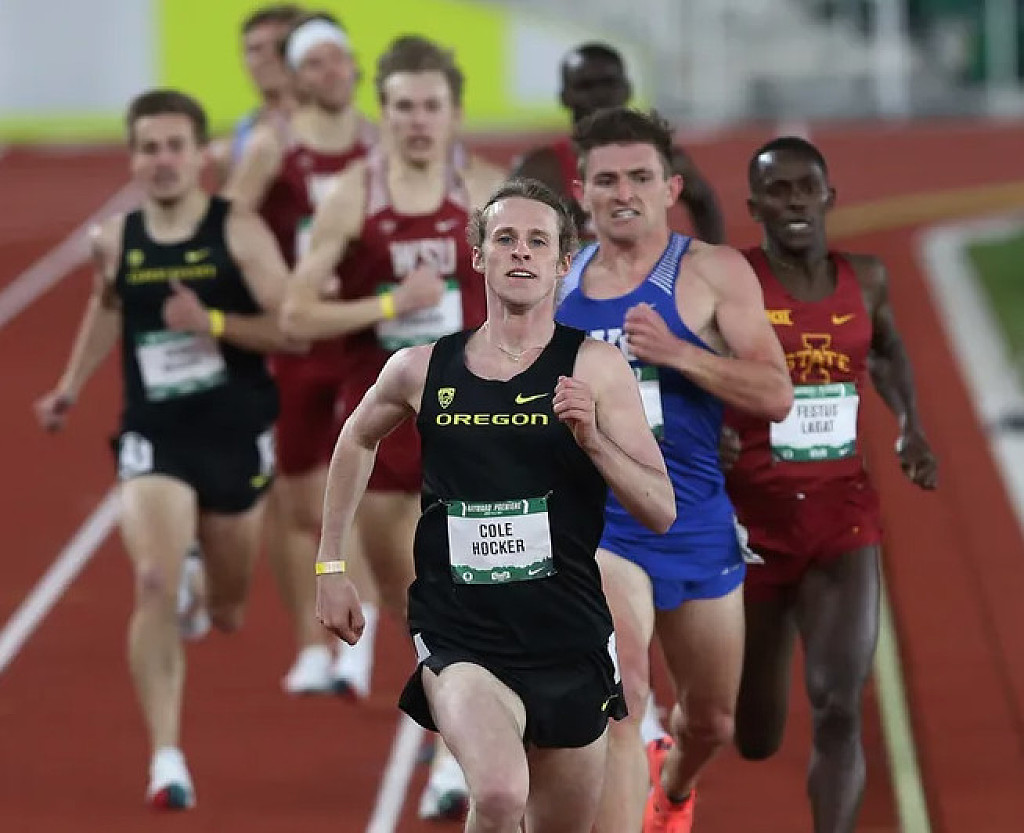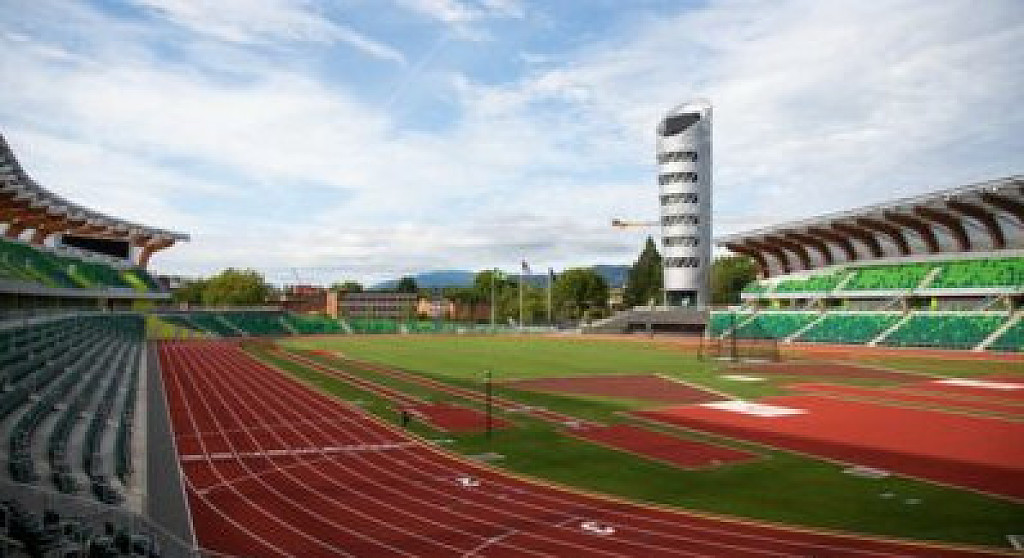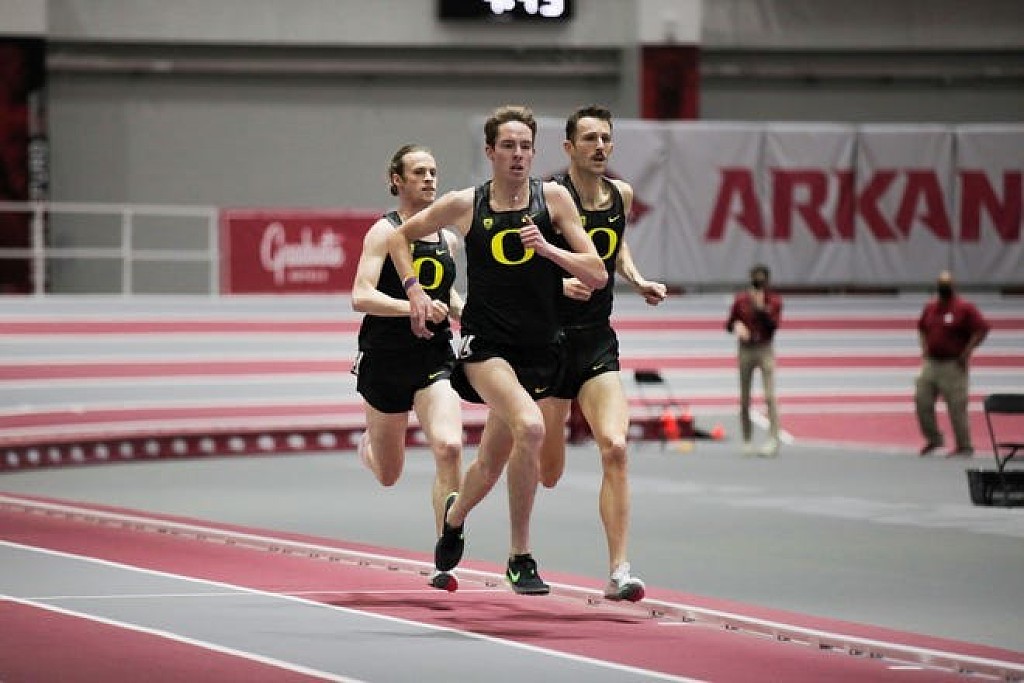Running News Daily
Running News Daily is edited by Bob Anderson. Send your news items to bob@mybestruns.com Advertising opportunities available. Train the Kenyan Way at KATA Kenya and Portugal owned and operated by Bob Anderson. Be sure to catch our movie A Long Run the movie KATA Running Camps and KATA Potato Farms - 31 now open in Kenya! https://kata.ke/
Index to Daily Posts · Sign Up For Updates · Run The World Feed
Articles tagged #Cole Hocker
Today's Running News
Cole Hocker’s World Championship Dream Ends in Disqualification
Tokyo, September 15, 2025 — Olympic 1500m champion Cole Hocker saw his World Championship hopes vanish in dramatic fashion after being disqualified in the men’s 1500m semi-final.
The American star, widely considered a contender for gold in Tokyo, found himself boxed in on the rail as the field entered the final straight. Spotting only the slightest opening, Hocker surged forward, leaning hard into the gap between two rivals in a desperate bid to qualify.
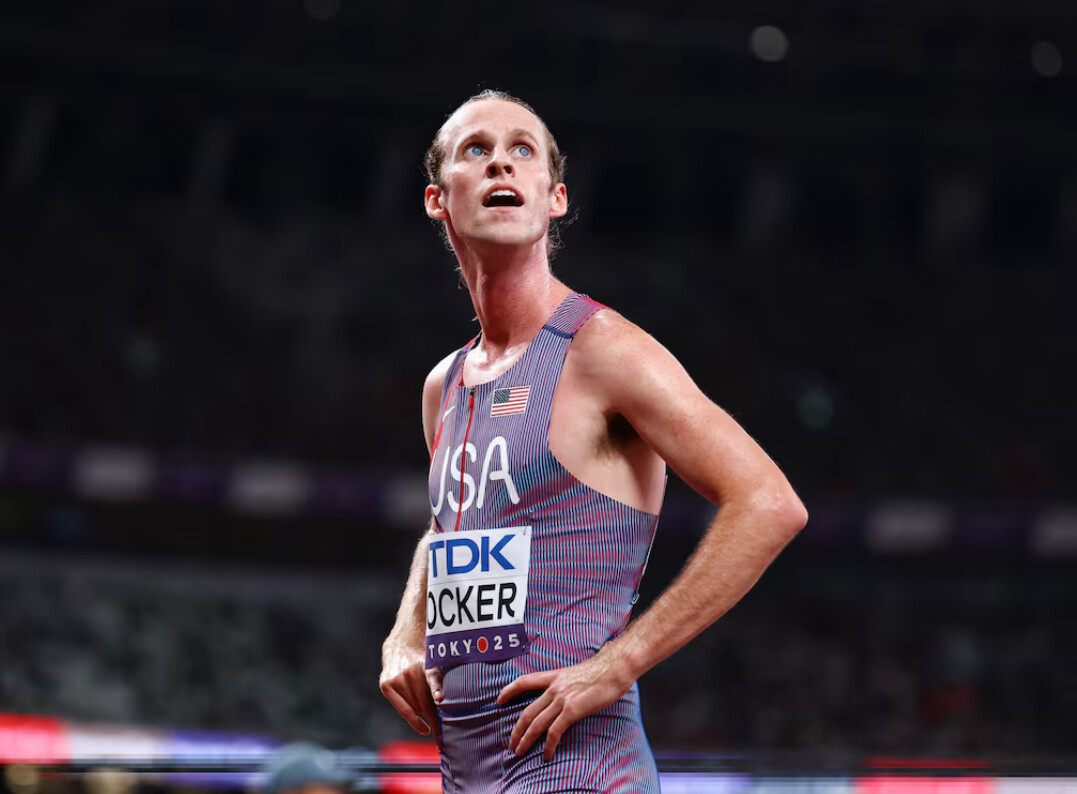
Officials, however, judged his move to be illegal under World Athletics’ jostling rule (TR17.1.2[J]). The ruling meant that Hocker, who crossed the line appearing to have secured advancement, was disqualified from the event. The U.S. team filed an immediate appeal, but it was denied.
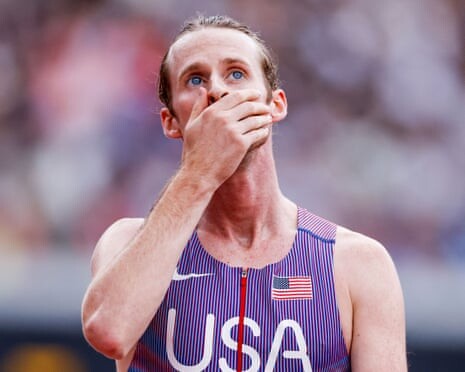
A Fine Line in Championship Racing
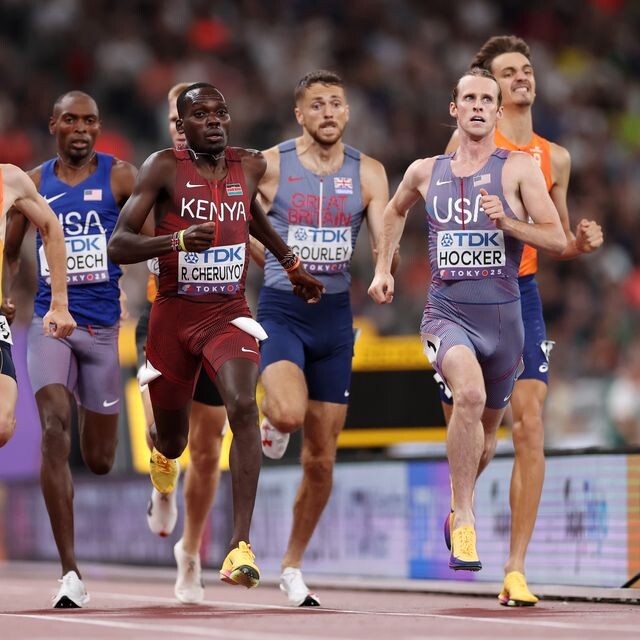
Championship 1500m races often hinge on positioning and split-second decisions. Hocker’s aggressive attempt to escape a tactical trap was the kind of risk seasoned racers often take. This time, it cost him dearly.
For the 24-year-old, who stunned the world by winning Olympic gold in Paris just a year ago, the result was a crushing reminder of how unforgiving middle-distance racing can be.
What's next
Hocker departs Tokyo without the chance to contest the 1500m final, but his career credentials remain undeniable:
• Olympic champion (2024)
• Personal best of 3:27.65, making him one of the fastest Americans in history
• Multiple U.S. titles and international medals
Despite the disappointment, Hocker’s trajectory still points skyward. With the Los Angeles 2028 Olympics on the horizon, this setback may only sharpen his focus for future championships.
by Boris Baron
Login to leave a comment
Track’s Biggest Stars Return to Hayward Field for U.S. Championships
Eugene, Oregon – The stage is set for another electrifying weekend at iconic Hayward Field, as the Toyota U.S.A. Track & Field Outdoor Championships take place this Saturday and Sunday at 4 p.m. ET, airing live on NBC and Peacock.
Some of the sport’s biggest stars will be headlining the meet, including Sydney McLaughlin-Levrone and Noah Lyles, two of America’s premier track and field athletes.

McLaughlin-Levrone, the reigning Olympic and World Champion in the 400m hurdles, is returning to the national spotlight after a strategic training and race schedule this season. Known for her graceful power and impeccable technique, Sydney has already redefined what’s possible in her event—shattering the world record multiple times. Fans are eager to see whether she’ll contest the 400m flat or return to the hurdles in Eugene.
On the men’s side, all eyes are on Noah Lyles, the reigning World Champion in the 100m and 200m. Lyles has made it clear he’s aiming for greatness this year, with both Olympic gold and world records on his radar. His recent performances on the Diamond League circuit suggest he’s peaking at the right time.
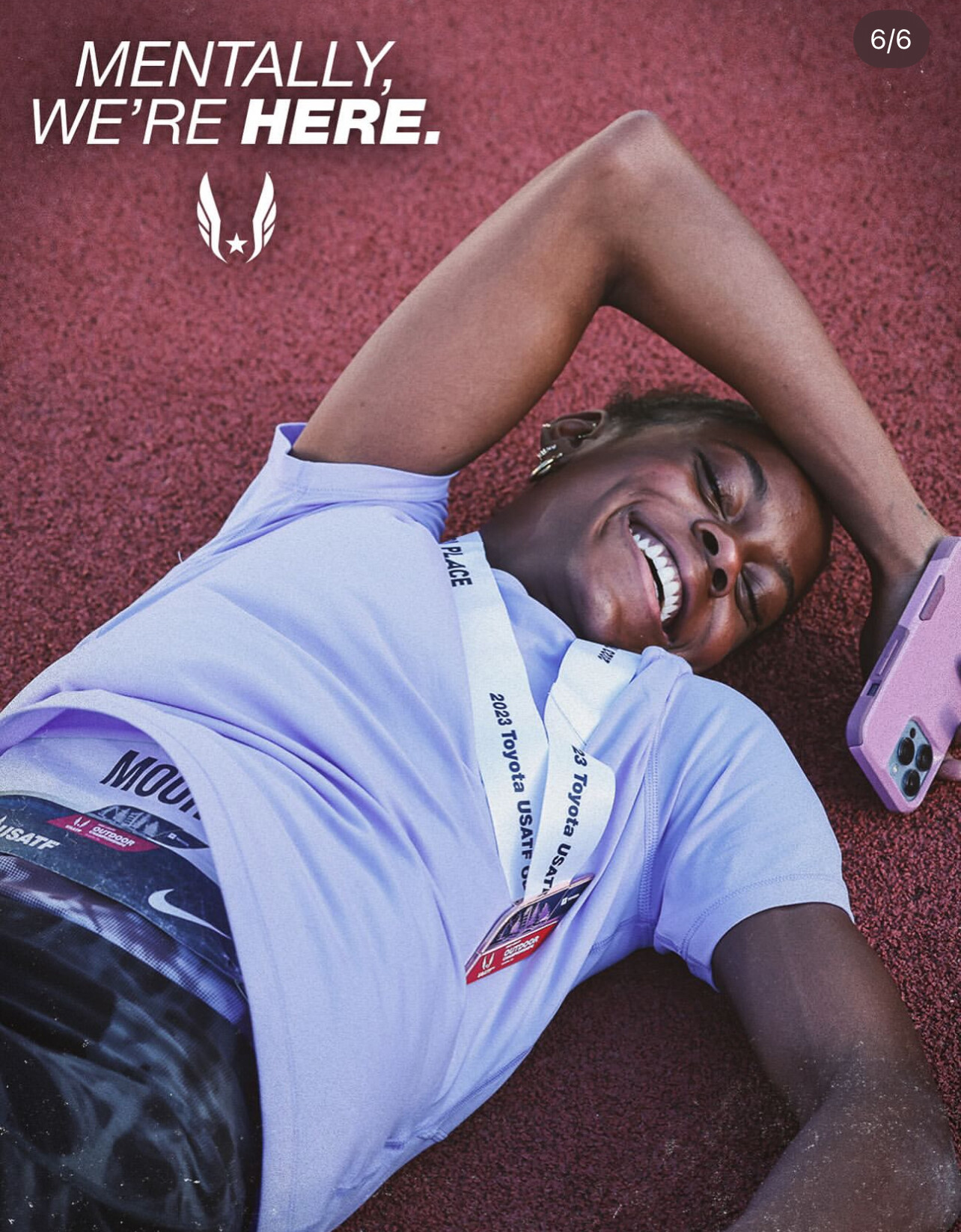
Distance Running Update: Eyes on the 1500m, 5000m, and 10,000m
The distance events promise fierce battles and major implications for Team USA selection.
In the men’s 1500m, all eyes will be on Yared Nuguse, who owns one of the fastest times in American history. He’ll be challenged by Cole Hocker, who famously stormed to an Olympic team spot in 2021, and NCAA standout Hobbs Kessler, who continues to climb the ranks.
The women’s 1500m will feature Nikki Hiltz, Emily Mackay, and Sinclaire Johnson, with Hiltz in standout form after their impressive road mile performances this season.
In the 5000m, American record holder Woody Kincaid will take on Grant Fisher, who’s back after injury and hungry to reclaim his place at the top. The women’s 5000m will include Elise Cranny, Karissa Schweizer, and Parker Valby, in what could be one of the most tactical races of the meet.
The 10,000m has already been contested earlier in the season, but the championship weekend will set the tone for the athletes’ final preparations ahead of international competition.
As always, Hayward Field brings the best out of American distance runners—expect fireworks as the fields chase not only titles, but Olympic dreams.
Catch the action live on NBC and Peacock.
Event: Toyota U.S.A. Track & Field Outdoor Championships
Location: Hayward Field, Eugene, Oregon
Broadcast: Saturday & Sunday at 4 p.m. ET on NBC & Peacock
by Boris Baron
Login to leave a comment
Emmanuel Wanyonyi Is Redefining Middle-Distance Greatness at Just 20
At just 20 years old, Emmanuel Wanyonyi has emerged as one of the most electrifying talents in middle-distance running. From humble beginnings herding cattle in Kenya’s Trans-Nzoia County to Olympic gold in Paris, Wanyonyi’s rise has been nothing short of extraordinary—and 2025 is shaping up to be his most dominant season yet.
A Champion’s Origin
Born on August 1, 2004, Wanyonyi’s athletic journey began far from stadiums and stopwatches. He left school at age 10 to help support his family, working as a cattle herder. But fate intervened when a local teacher recognized his talent and encouraged him to return to school—and to running.
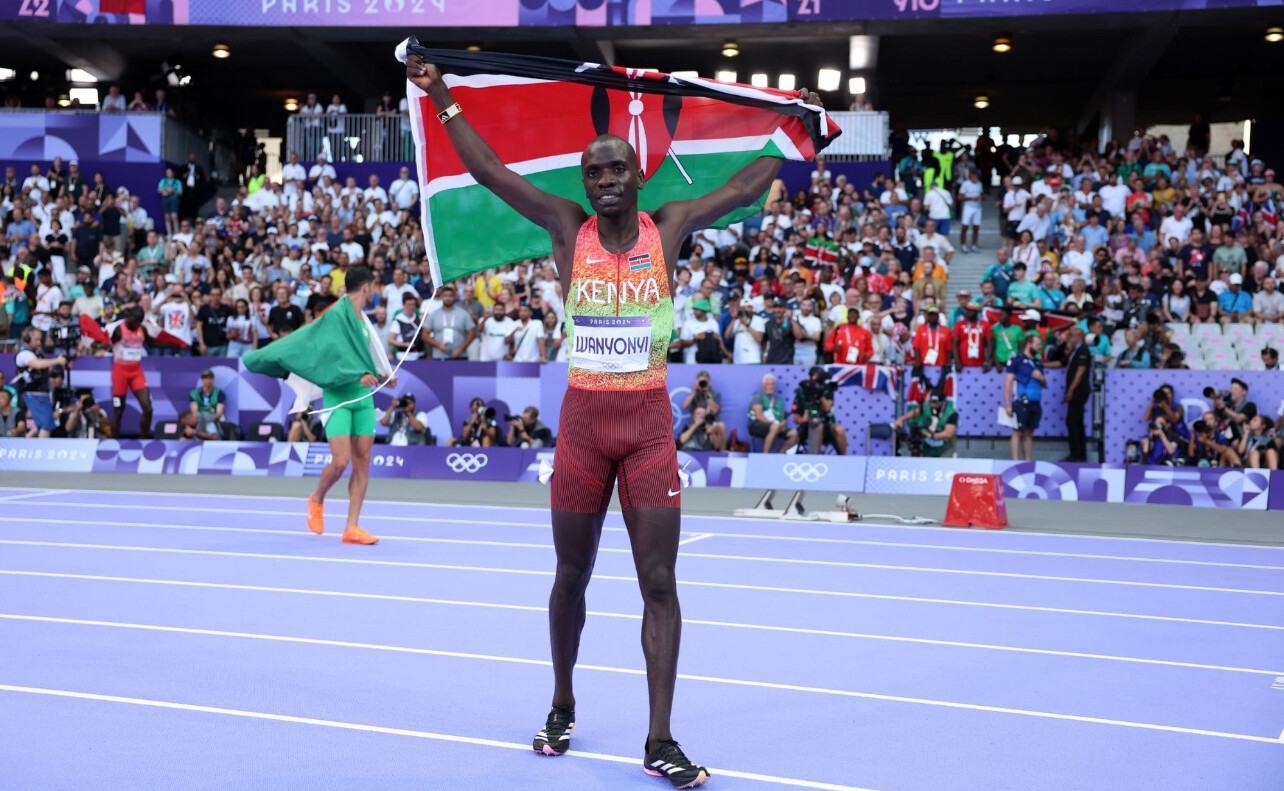
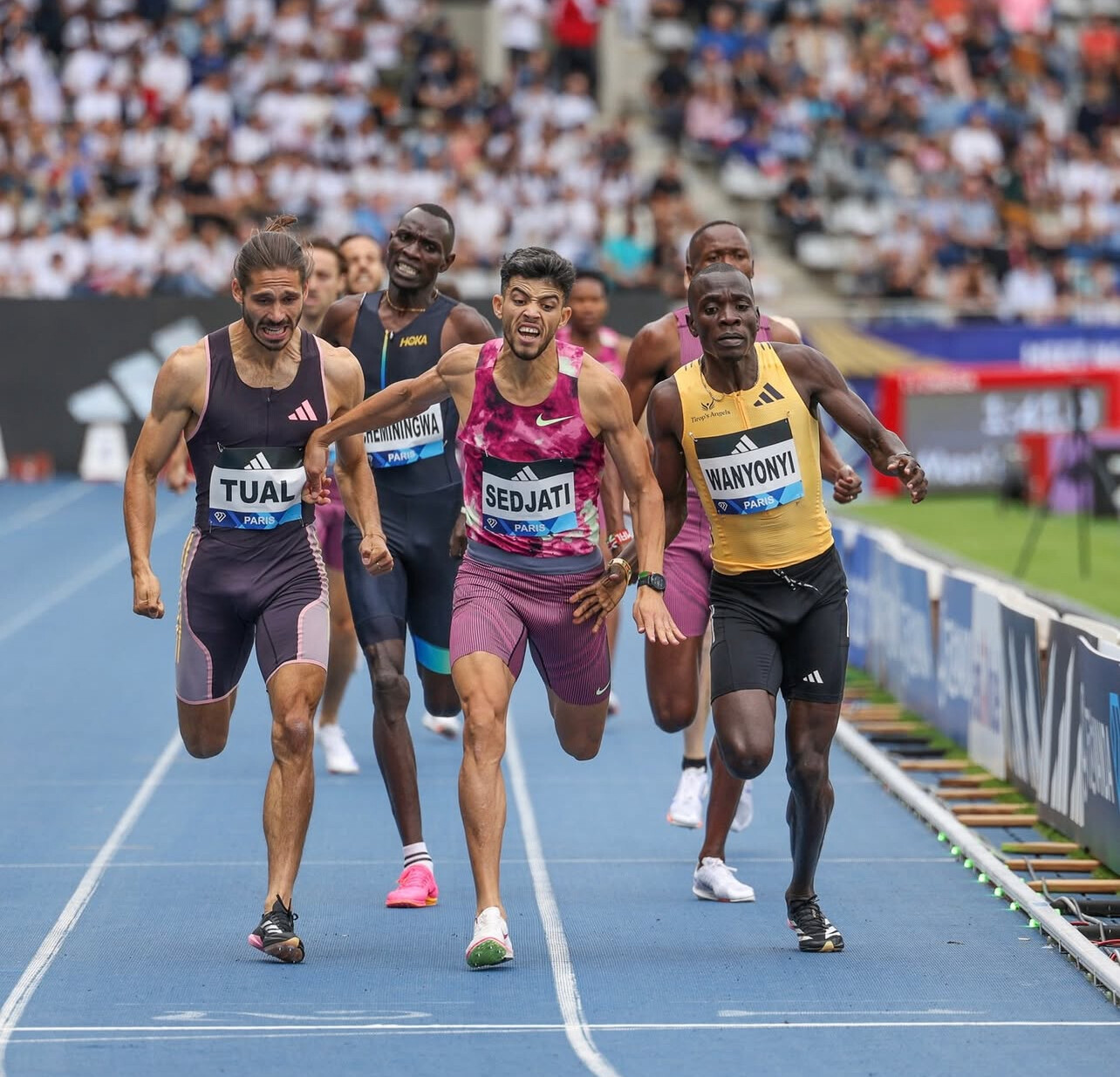
Mentored by 2007 world 800m champion Janeth Jepkosgei and coached by Claudio Berardelli, Wanyonyi made his international debut in style. At the 2021 World U20 Championships, he won the 800m in a championship record time of 1:43.76.
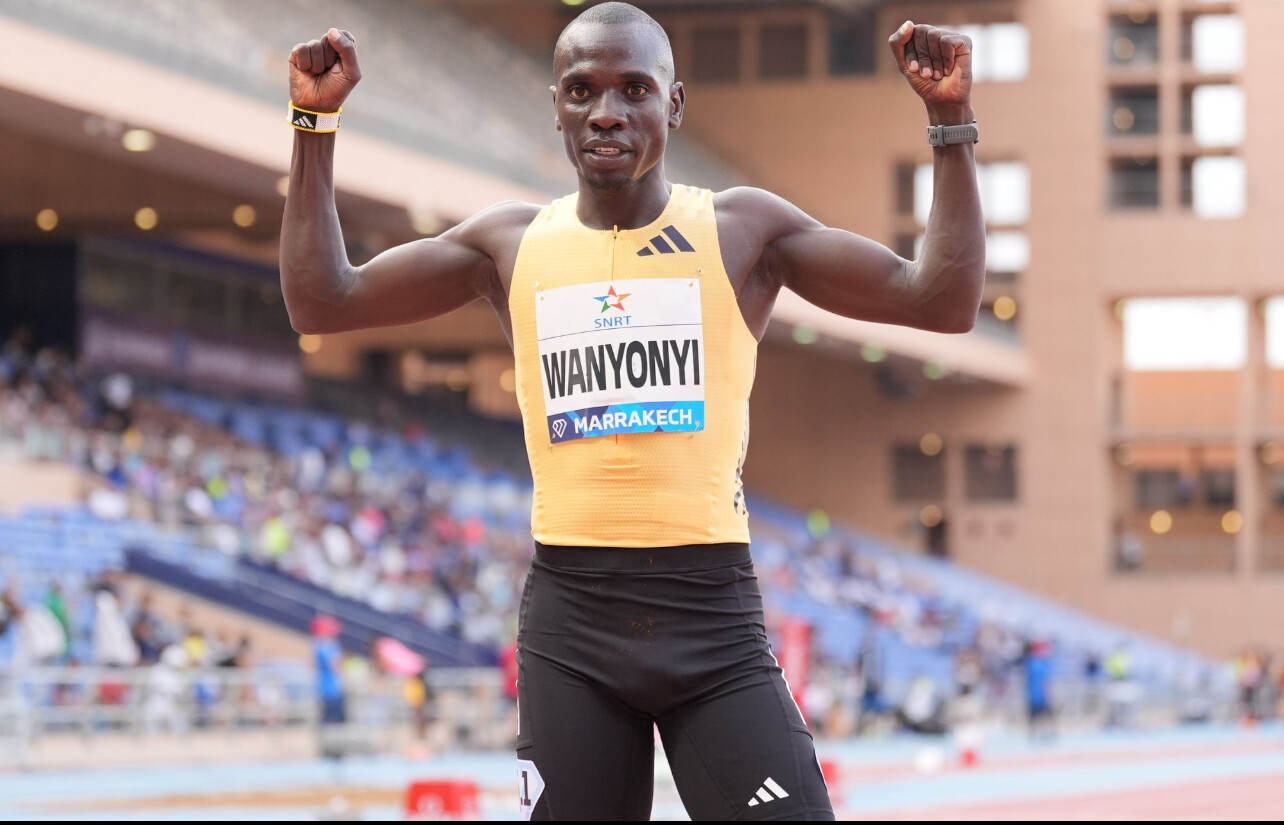
Since then, he has steadily climbed the ranks, placing fourth at the 2022 World Championships, winning silver in 2023, and claiming the ultimate prize—Olympic gold in the 800m at Paris 2024. His time of 1:41.19 was not only a personal best but also the third-fastest in history.
A New Level in 2025
Wanyonyi has wasted no time building on his Olympic success. At the Grand Slam Track event in Kingston this April, he stunned the field in the 1500m, taking down a world-class lineup that included Olympic medalists Josh Kerr, Cole Hocker, and Yared Nuguse. His time of 3:35.18 secured victory and confirmed his elite range beyond the 800m.
The next day, he returned to the track and finished second in the 800m, narrowly beaten by world champion Marco Arop. Wanyonyi’s combined performance earned him the men’s short-distance Slam Champion title and a $100,000 prize.
Just days later, he returned to the top step of the podium at the Adizero Road to Records event in Germany. Running the road mile, he clocked 3:52.45—his fastest time yet and the third-fastest road mile in history.
What’s Next
Wanyonyi’s next major test will come at the Stockholm Diamond League on June 15, where he’s slated to race the 800m against top international competition, including Djamel Sedjati and Gabriel Tual.
His official 800m personal best is 1:41.11, tied for the second-fastest mark ever alongside Wilson Kipketer. Only David Rudisha has run faster.
With his combination of tactical intelligence, powerful finishing speed, and increasing range, Wanyonyi is not just a rising star—he’s a generational talent already reshaping the middle-distance landscape.
Keep an eye on him. Emmanuel Wanyonyi isn’t just running races—he’s rewriting history.
by Boris Baron
Login to leave a comment
Faith Kipyegon and Jakob Ingebrigtsen Headline Historic 2025 Pre Classic
The 50th edition of the Prefontaine Classic, set for July 5 at Hayward Field in Eugene, Oregon, promises to be one of the most exciting track meets of the year. Headlining the event is three-time Olympic gold medalist Faith Kipyegon, who returns to the Pre Classic in search of her seventh career victory in the women’s 1500m.
Kipyegon, the world record holder in both the 1500m (3:49.04) and the mile (4:07.64), shattered the 1500m mark in Paris on July 7, 2024. Now, nearly a year later, she’ll look to reassert her dominance in front of a packed crowd at one of the sport’s most prestigious meets.
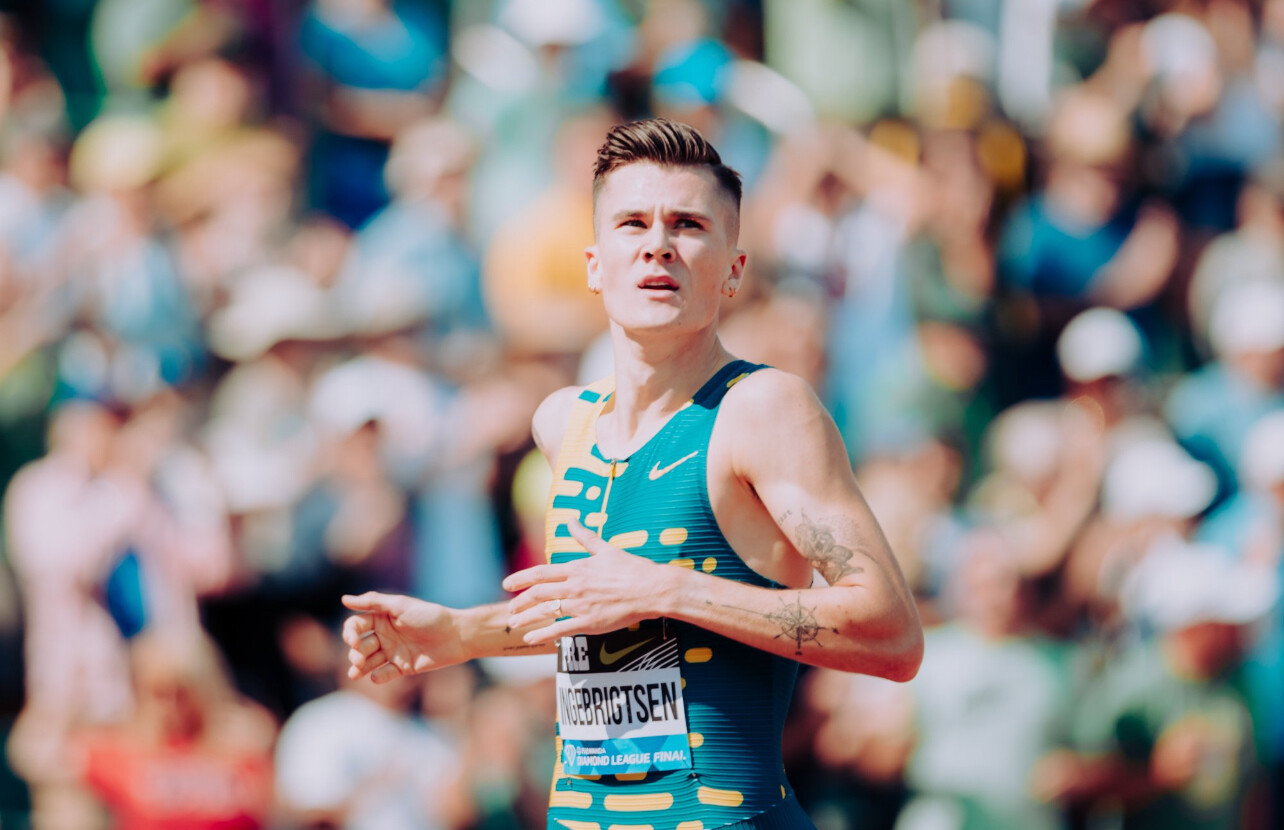
Joining Kipyegon in the 1500m are her fellow 2024 Olympic medalists—silver medalist Jessica Hull of Australia and bronze medalist Georgia Bell of Great Britain. Hull, a former University of Oregon standout, also holds the current world record in the 2000m.
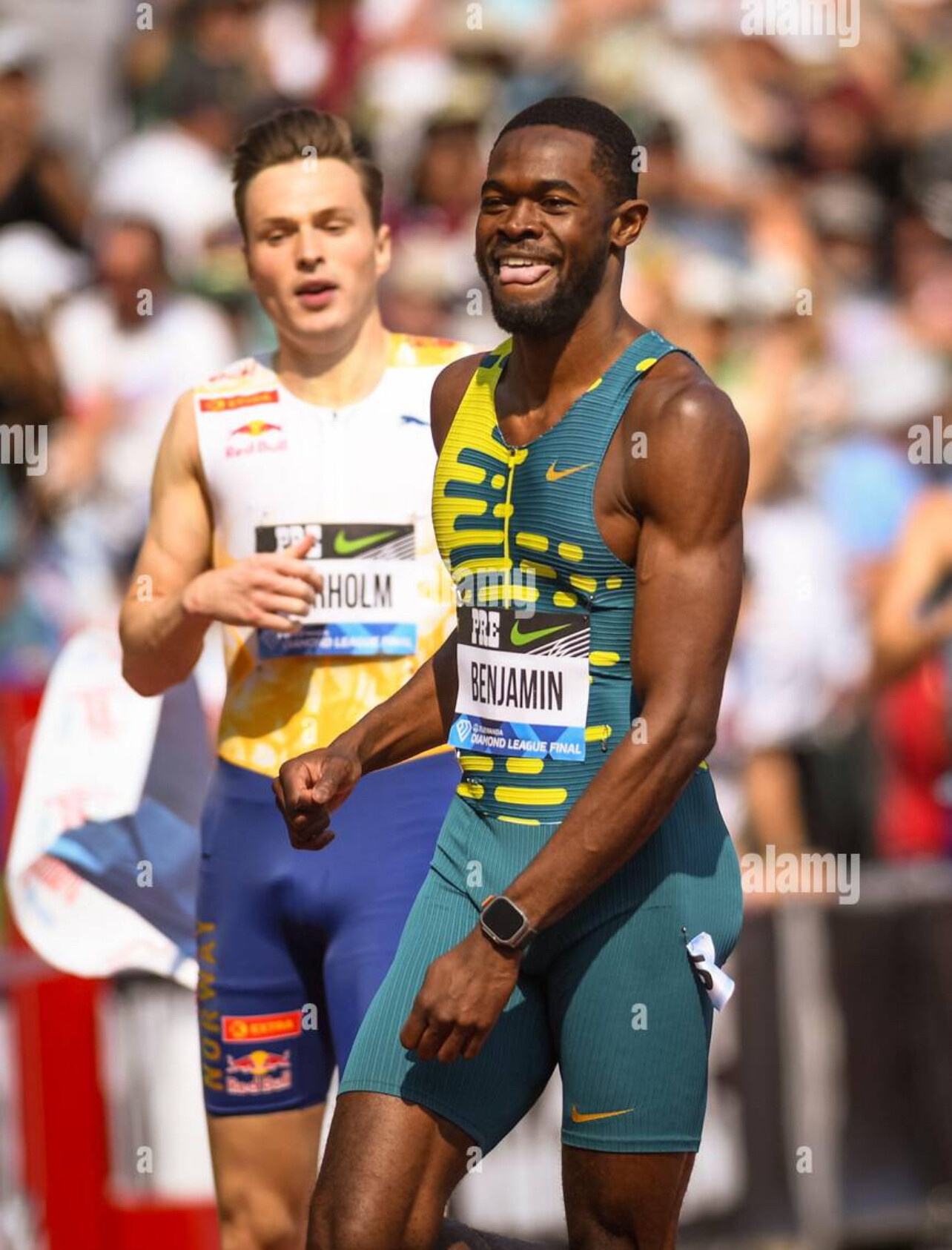
But Kipyegon isn’t the only big name set to thrill fans in Eugene. The men’s Bowerman Mile will feature a stacked lineup that includes:
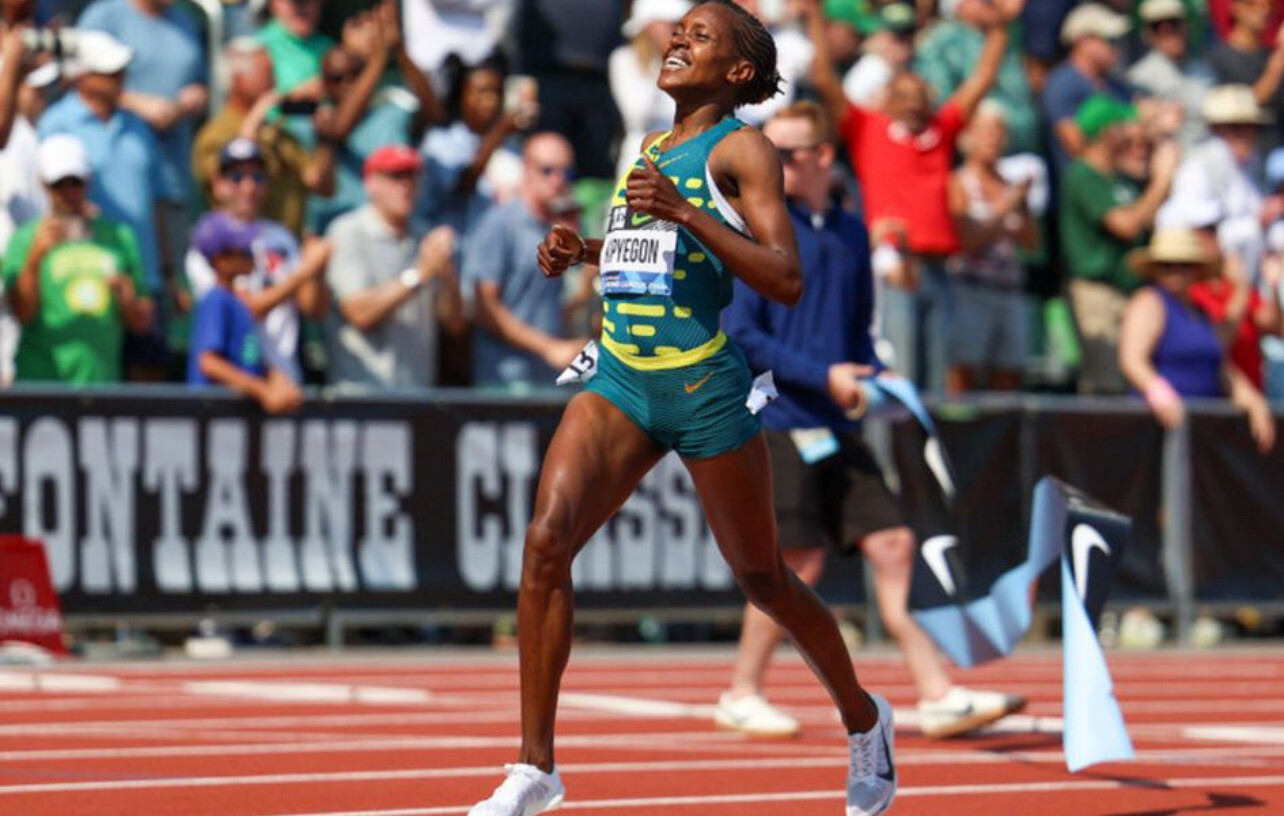
• Jakob Ingebrigtsen (Norway) – Olympic gold medalist and multiple-time Bowerman Mile champion

• Cole Hocker (USA) – 2024 Olympic 1500m champion
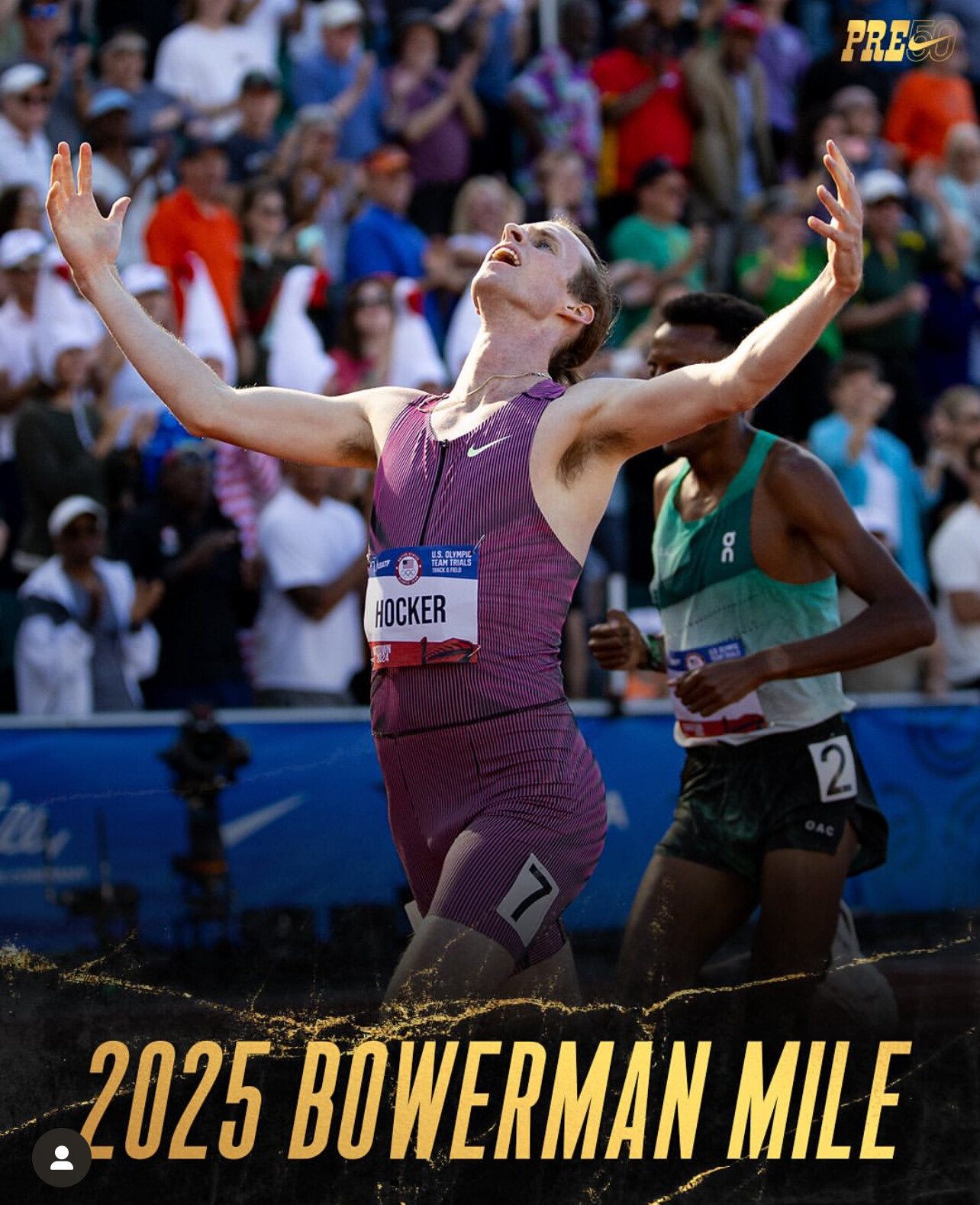
• Yared Nuguse (USA) – Olympic bronze medalist and former indoor mile world record holder
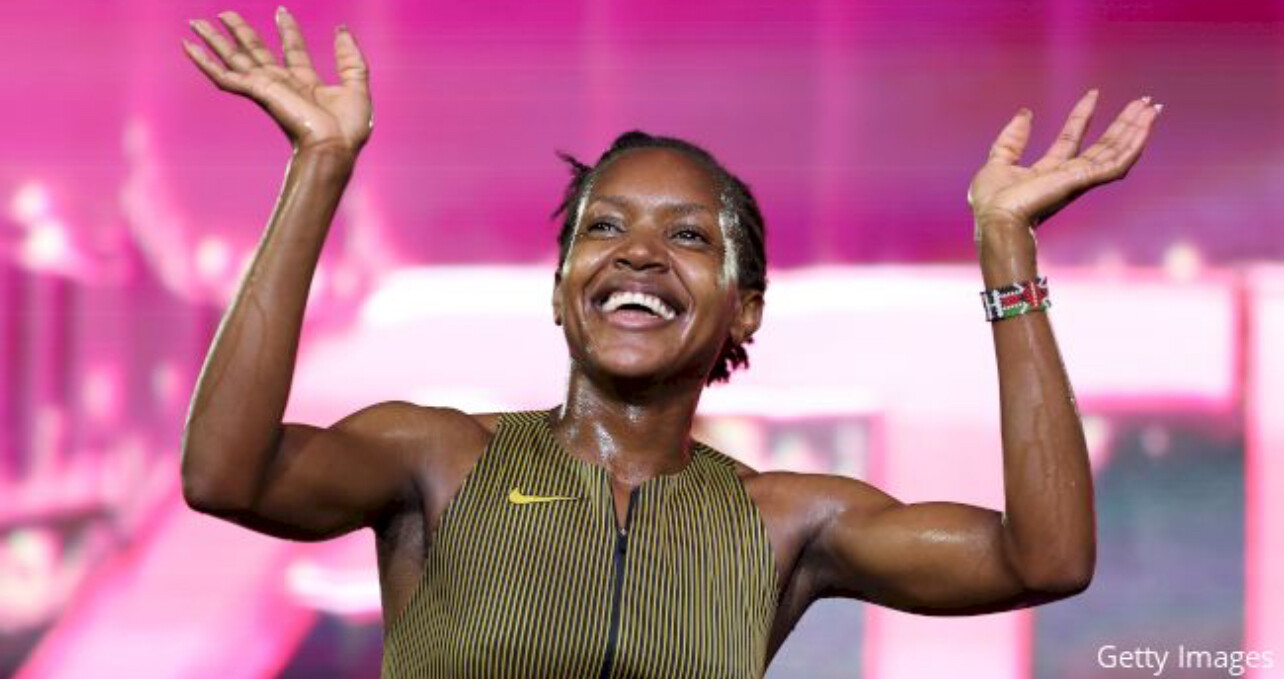
• Timothy Cheruiyot (Li Kenya) – Former world champion
• Jake Wightman (Great Britain) – 2022 world champion
• Grant Fisher (USA) – Olympic bronze medalist in both the 5000m and 10,000m
• Plus rising stars including Oliver Hoare, Neil Gourley, Azeddine Habz, Hobbs Kessler, Niels Laros, Cameron Myers, Stefan Nillessen, and Reynold Cheruiyot
In the men’s 400m hurdles, Olympic silver medalist Rai Benjamin will headline a competitive field that also includes CJ Allen, Trevor Bassitt, Clement Ducos, Malik James-King, Abderrahman Samba, and Assinie Wilson.
The 2025 Prefontaine Classic will feature 14 Diamond League disciplines, including the women’s 800m, 5000m, and 3000m steeplechase—each with world-class fields expected to be announced soon.
As the sport celebrates this milestone edition of the Pre Classic, the meet is shaping up to be not just a tune-up for global championships, but a showcase of track and field at its absolute best.
by Boris Baron
Login to leave a comment
Records Fall on Day One at Grand Slam Track Miami
The opening day of the Grand Slam Track meet in Miami lived up to its billing as one of the most exciting events on the global track calendar. Held at the Ansin Sports Complex on May 2, the meet delivered fast times, dramatic finishes, and a new American record—all under sunny Florida skies.
Masai Russell Breaks American Record in 100m Hurdles

Olympic gold medalist Masai Russell stole the spotlight by breaking the American record in the women’s 100m hurdles, clocking an incredible 12.17 seconds. The performance makes her the second-fastest woman in history behind Nigeria’s Tobi Amusan. In a race stacked with talent, Tia Jones followed closely in 12.19—now the third-fastest time ever—and Jamaica’s Ackera Nugent rounded out the podium with 12.34.
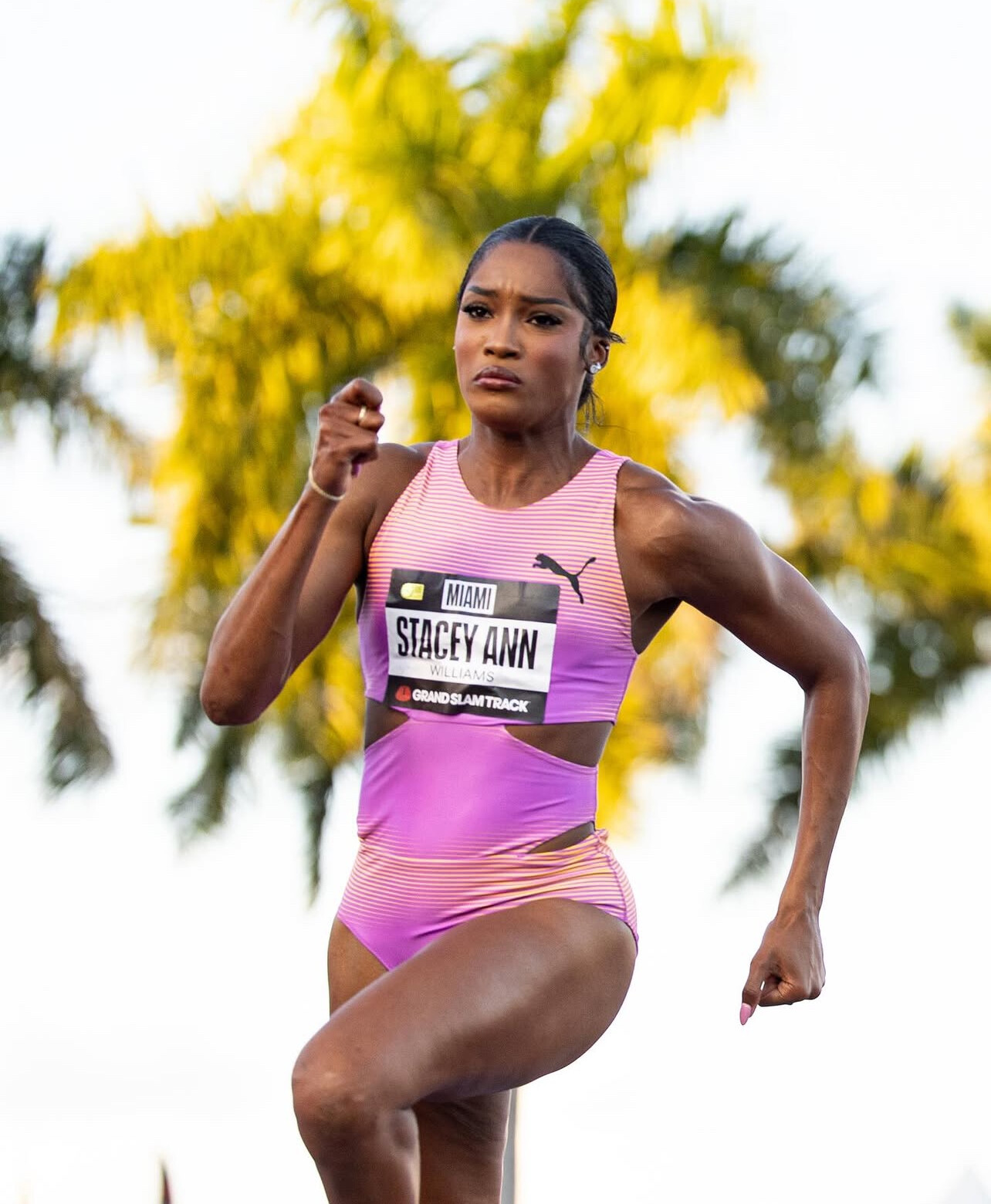
Melissa Jefferson-Wooden Sprints to 100m Win
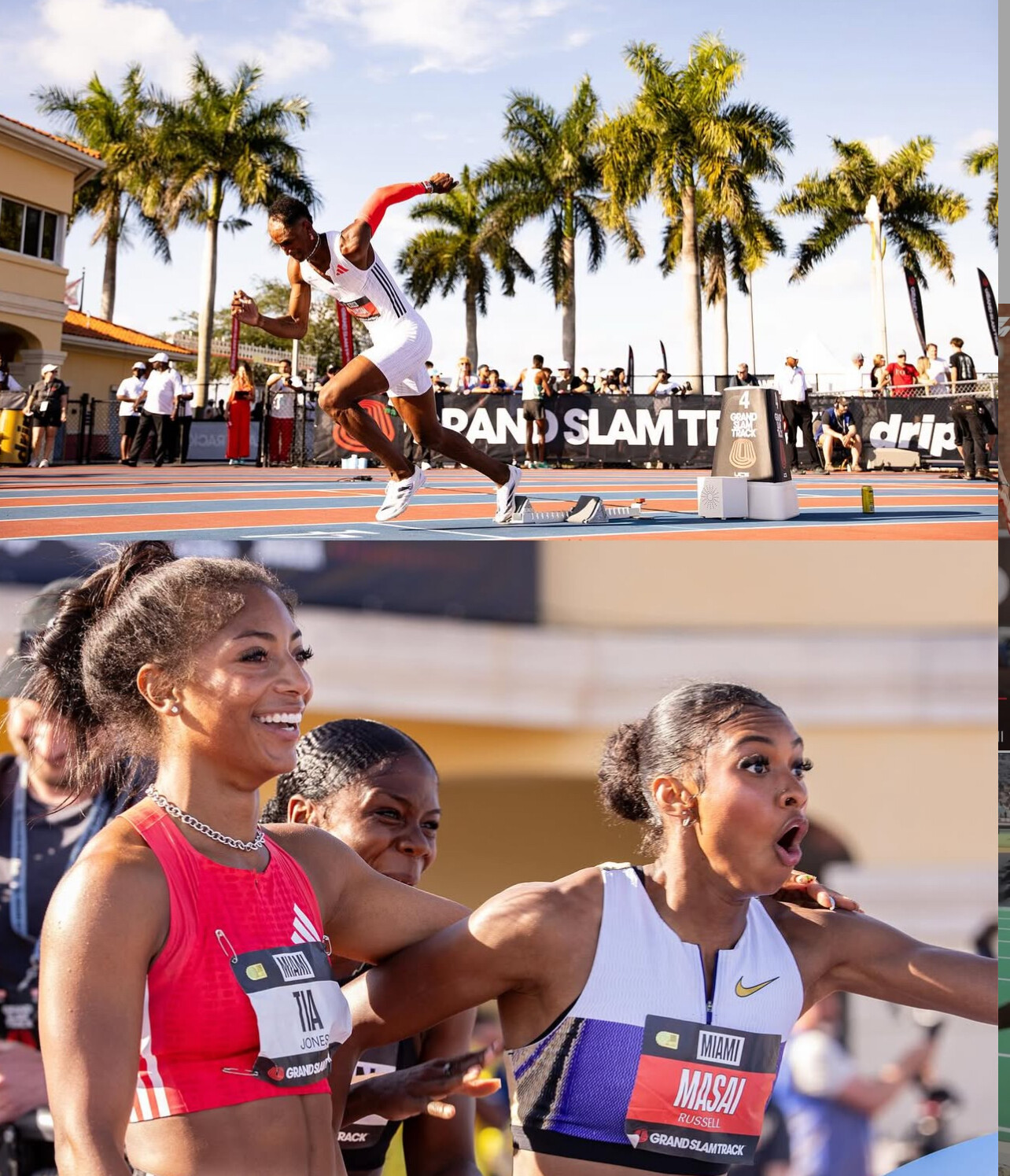
In the women’s 100m, Melissa Jefferson-Wooden delivered a statement win with a wind-aided 10.75, continuing her strong 2025 campaign. Tamari Davis and Favour Ofili followed in a fiercely contested race that highlighted the depth of American sprinting.
Josh Kerr Outkicks Nuguse in 1500m Showdown
Great Britain’s Josh Kerr triumphed in a thrilling men’s 1500m, edging out top Americans Yared Nuguse and Cole Hocker with a 3:34.51 finish. Kerr’s victory marked a confident return to form after a quieter performance in Kingston earlier in the season.
World Lead for Jereem Richards in 200m
Trinidad & Tobago’s Jereem Richards ran a world-leading 19.86 in the men’s 200m, narrowly holding off Alexander Ogando of the Dominican Republic. Meanwhile, Marileidy Paulino continued her dominance in the women’s 400m, winning in 49.21 over Salwa Eid Naser.
Irish Victory in the 3000m
Ireland’s Andrew Coscoran claimed the men’s 3000m title with a time of 8:17.56, edging out American Grant Fisher and Great Britain’s George Mills. The distance event proved to be one of the day’s most tactical and tightly packed races.
Ngetich Leads Kenyan Charge in 5000m
Kenya’s Agnes Jebet Ngetich controlled the women’s 5000m from the gun, finishing in a commanding 14:25.80. Ethiopia’s Medina Eisa and Hirut Meshesha gave chase, but couldn’t close the gap—another chapter in the ongoing Kenya-Ethiopia distance rivalry.
What’s Next
With more events set for the weekend, the Grand Slam Track’s Miami stop is already shaping up to be one of the season’s most memorable. The combination of elite talent, fast conditions, and prize money incentives has brought the very best to the starting line—and the fans are reaping the rewards.
by Boris Baron
Login to leave a comment
Showdowns Set to Define 2025 Diamond League Season with over 9 million in prize money
With the season opener just days away, rivalries from 800m to 10,000m are heating up on the Road to Zurich
The 2025 Wanda Diamond League kicks off on April 26 in Xiamen, China, launching a new season of high-stakes track and field action. For the world’s best middle- and long-distance runners, this marks the beginning of the Road to the Final—a journey that will culminate in Zurich on August 27–28.
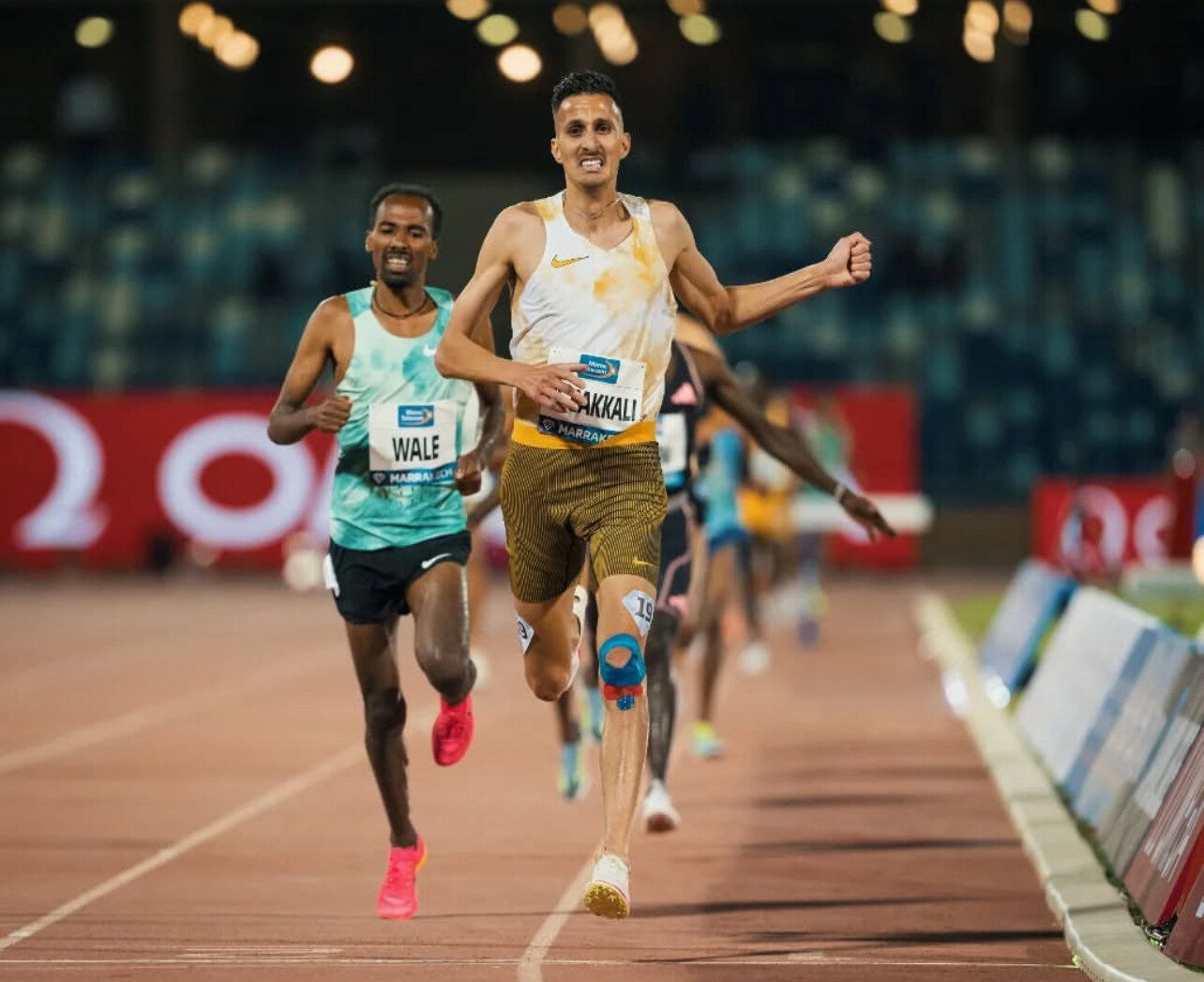
And if the early headlines are any indication, the upcoming season will be nothing short of electric.
Ingebrigtsen vs. Kerr: A Rivalry Rekindled
One of the fiercest rivalries in the sport will light up the men’s 1500m once again as Jakob Ingebrigtsen and Josh Kerr go head-to-head at the London Diamond League on July 19.
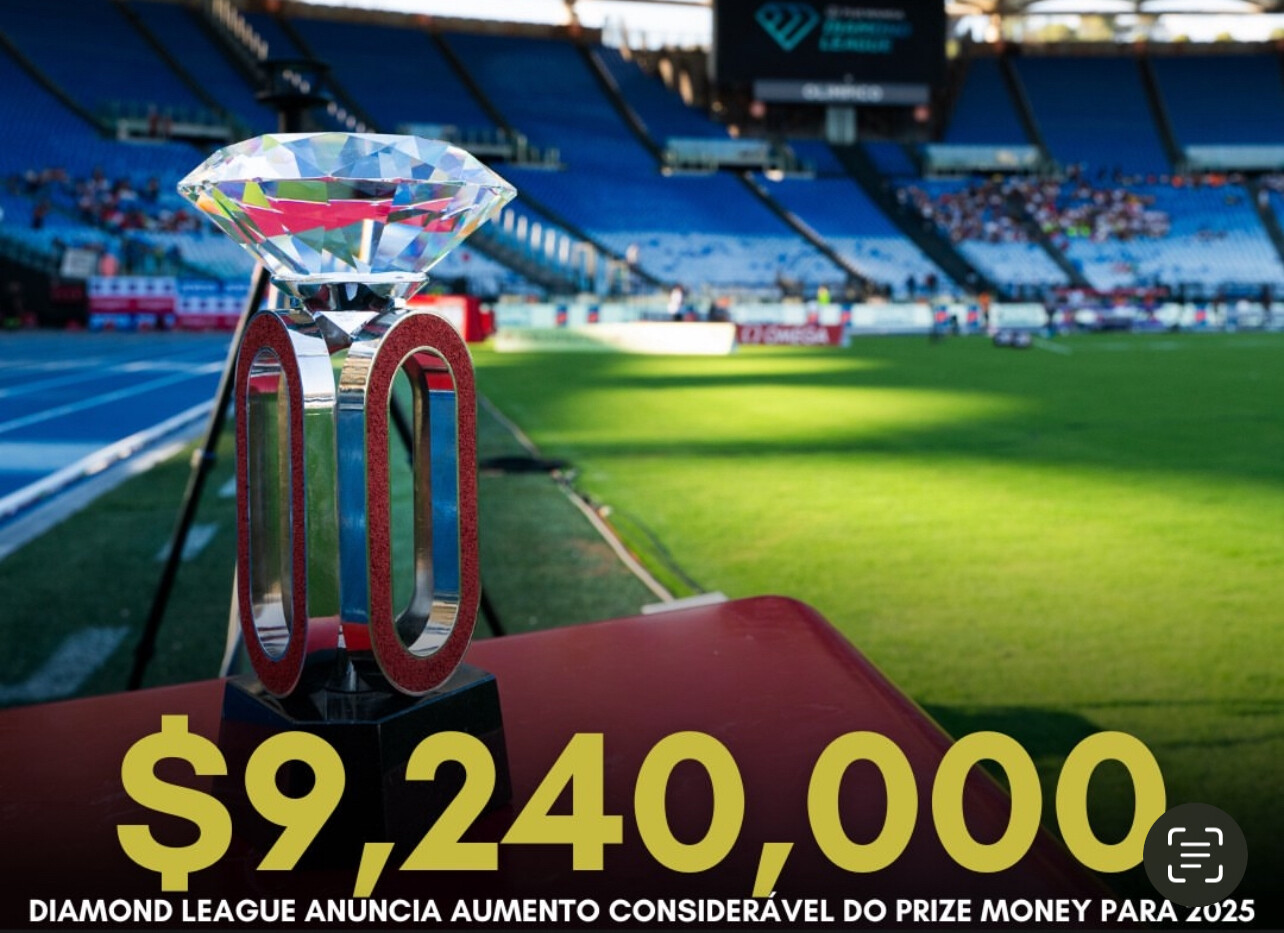
Their tension has been simmering since Kerr stunned Ingebrigtsen to win the world title in Budapest in 2023. The Norwegian responded with a strong victory in Zurich, but the scoreboard is far from settled.
Ingebrigtsen, now chasing his fifth career Diamond League title, will also line up against Olympic medalists Yared Nuguse and Cole Hocker in the Bowerman Mile at the Prefontaine Classic in Eugene on July 5, setting up another world-class clash.
Doha’s Steeplechase Rematch
The women’s 3000m steeplechase promises a rematch of Olympic proportions in Doha, where Winfred Yavi will face off against fellow medalists Peruth Chemutai and Faith Cherotich.
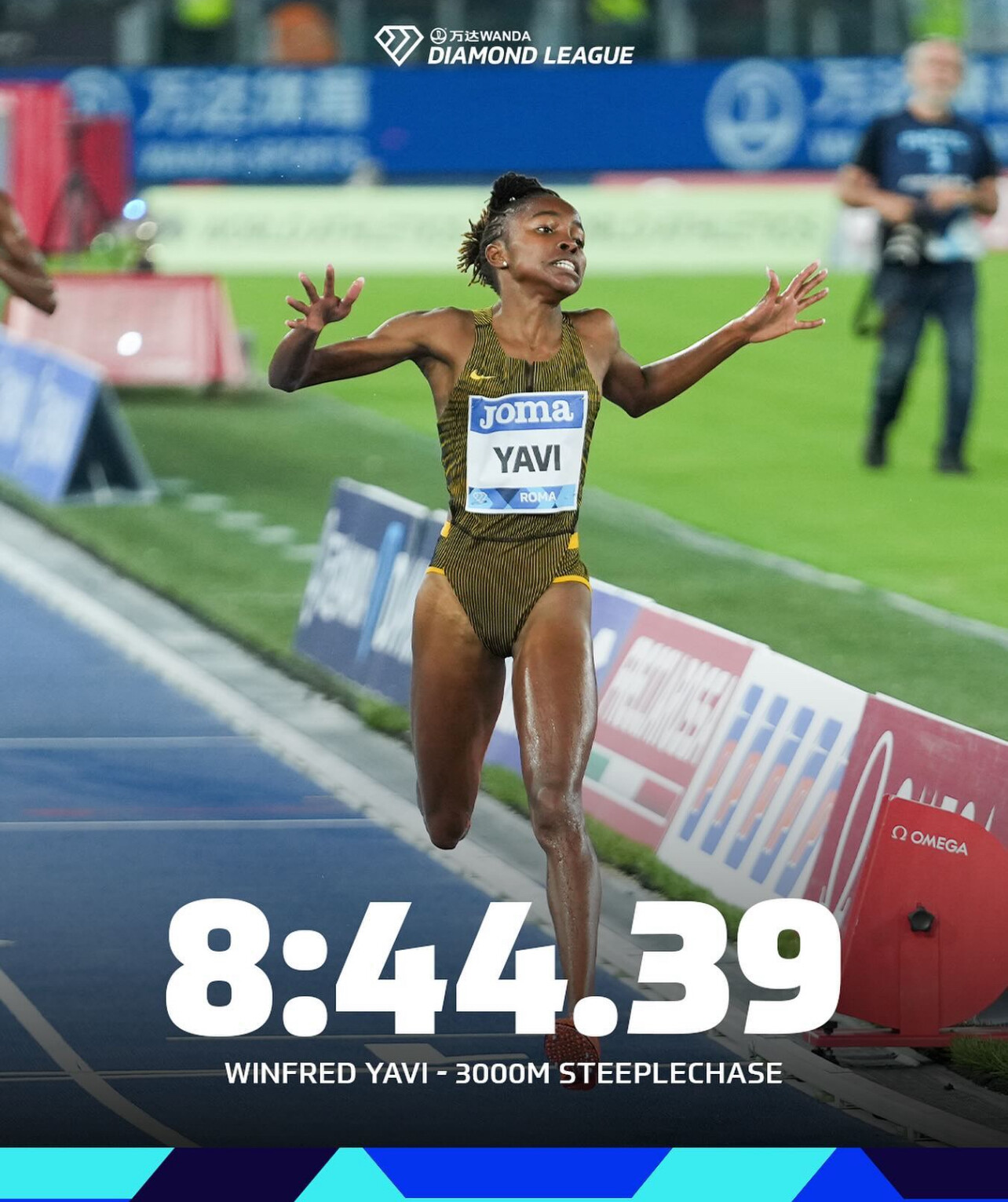
Yavi, the reigning Olympic champion, came within a whisker of the world record in Rome last season, while Cherotich enters 2025 as the Diamond League titleholder. Their early-season clash in Qatar could set the tone for one of the most compelling storylines in women’s distance running.
Eyes on Rome: A Distance-Lover’s Dream
The Pietro Mennea Golden Gala in Rome on June 6 is already shaping up to be one of the key middle- and long-distance showpieces of the year.
While final entries are still being confirmed, the women’s 800m is expected to feature a powerhouse lineup, potentially including Keely Hodgkinson, Athing Mu, and Mary Moraa. On the men’s side, stars like Emmanuel Wanyonyi, Marco Arop, and Djamel Sedjati are expected to battle for points in a crowded field of Olympic contenders.
Rome, known for producing fast times and historic finishes, could once again deliver career-defining performances.
2025: A Season Built for Distance Drama
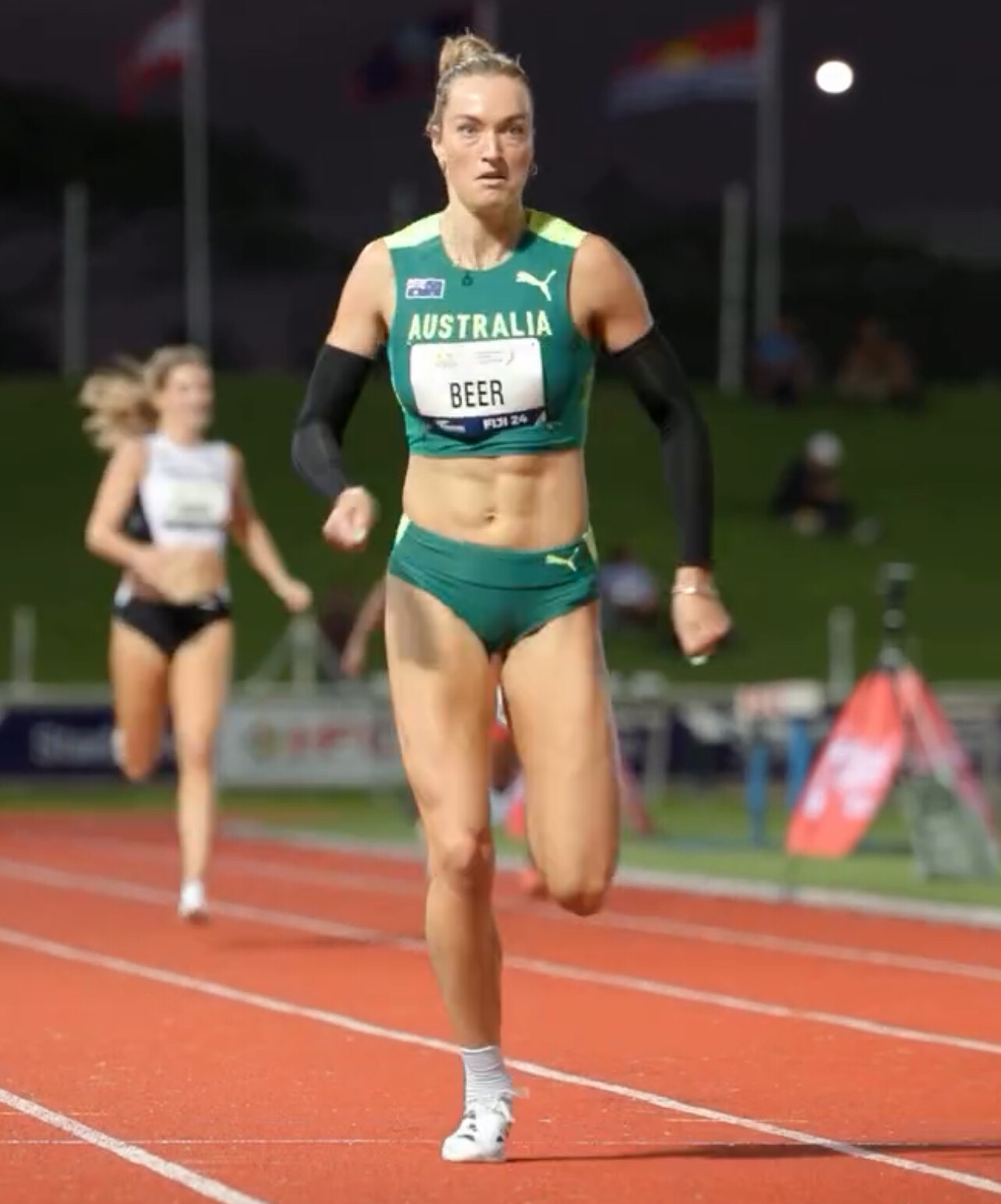
The Wanda Diamond League includes 14 series meets across four continents, leading to the two-day Final in Zurich, where only the top point-earners will compete for the Diamond Trophy. With increased prize money—ranging from $30,000 to $50,000 per discipline at series meetings and $60,000 to $100,000 at the Final—and millions watching worldwide, every race matters.
2025 is already shaping up to be a banner year for middle- and long-distance running. With fierce rivalries, Olympic-level fields, and rising stars chasing career breakthroughs in the 800m, 1500m, mile, steeplechase, 5000m, and 10,000m, the stage is set for one of the most thrilling Diamond League seasons yet.
by Boris Baron
Login to leave a comment
Cole Hocker Is Just Getting Started
Cole Hocker’s rise from NCAA standout to Olympic champion has been anything but conventional. After winning gold in the 1500 meters at the 2024 Paris Olympics with a stunning 3:27.65—an Olympic record—Hocker has emerged as one of the most formidable middle-distance runners in the world.
Training in the Shadows
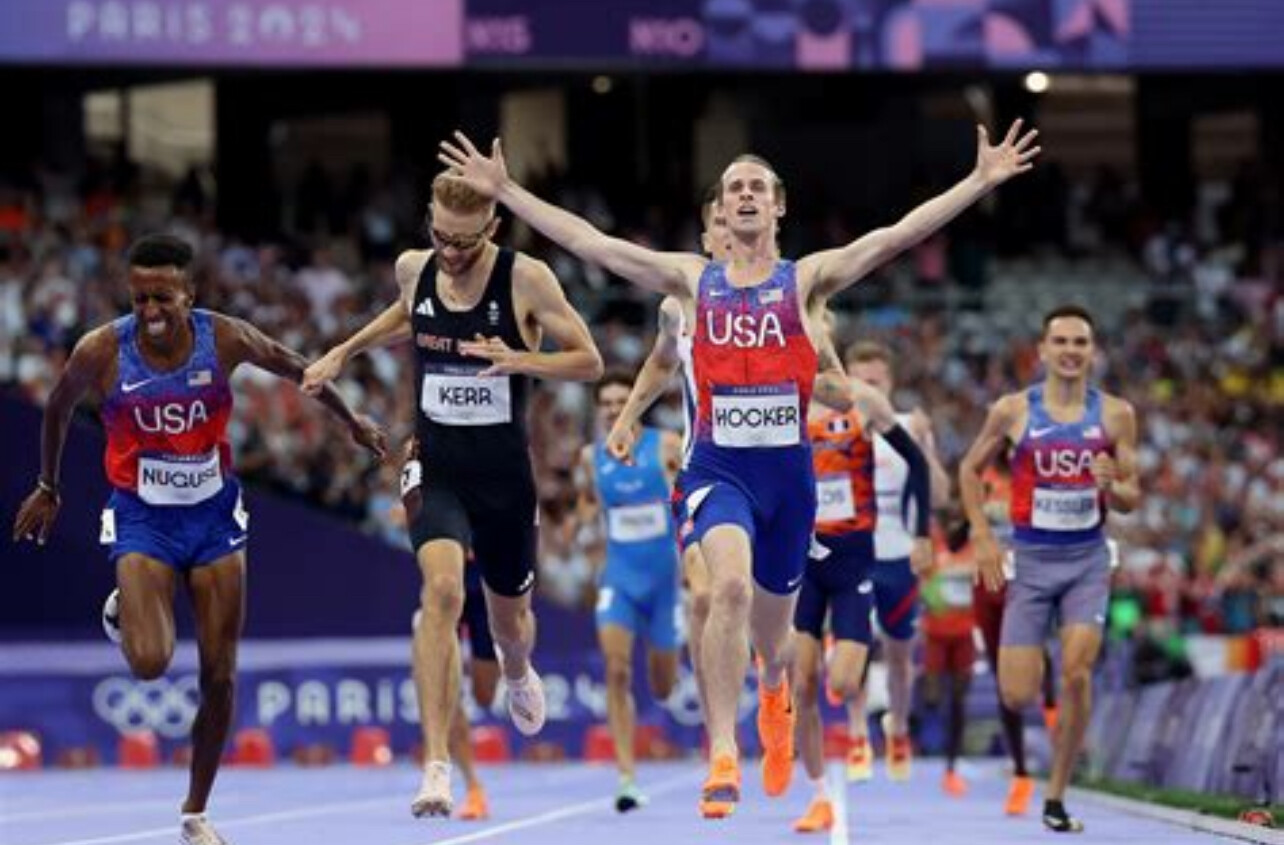
While many elite runners chase the spotlight, Hocker has chosen a different path. He trains in the quiet town of Blacksburg, Virginia, under the guidance of longtime coach Ben Thomas. Alongside training partner Cooper Teare, Hocker focuses on a regimen that emphasizes quality over quantity, rarely exceeding 80 miles per week. Their workouts often include hill repeats, pace variability, and strategic rest days, fostering both physical endurance and mental resilience.
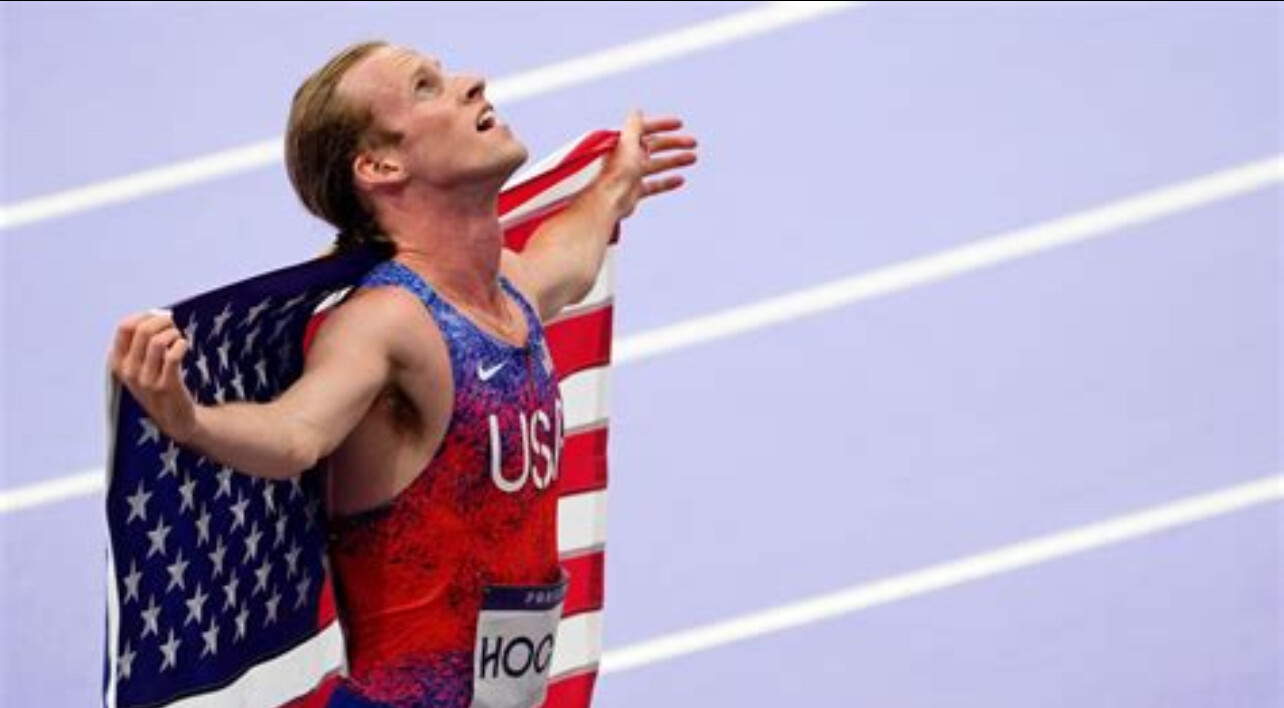
Expanding His Range
Hocker isn’t content with dominating just the 1500 meters. In 2025, he has set his sights on longer distances, competing in the 3000 meters at the Millrose Games and clocking a personal best of 7:23.14, making him the second-fastest American ever at that distance. He also achieved a 5000-meter personal best of 12:57.82 at the BU Terrier DMR Challenge, securing the world standard for the upcoming World Championships.
Upcoming Showdowns
Hocker’s competitive spirit will be on full display at the 2025 Prefontaine Classic’s Bowerman Mile, where he will face off against rivals Jakob Ingebrigtsen and Yared Nuguse. This race promises to be a thrilling encounter among some of the world’s best middle-distance runners.
A Relentless Competitor
What sets Hocker apart isn’t just his physical prowess but his mental tenacity. Despite setbacks and fierce competition, he maintains an unwavering belief in his abilities. As he continues to push the boundaries of his sport, Hocker remains a testament to the power of determination and strategic training.
by Boris Baron
Login to leave a comment
Ingebrigtsen Ready to Battle Hocker and Kerr on Their Home Turf—All Roads Lead to Tokyo
Jakob Ingebrigtsen is preparing for two of the most anticipated races of the 2025 Diamond League season—each taking place on the home turf of his fiercest rivals.
The double world indoor champion is set to headline the Bowerman Mile at the Prefontaine Classic in Eugene on July 5, where he’ll take on U.S. Olympic gold medalist Cole Hocker and American 1500m record-holder Yared Nuguse. Then, on July 19, he travels to London for a highly anticipated 1500m duel against Great Britain’s world champion Josh Kerr—who will be racing in front of a home crowd.
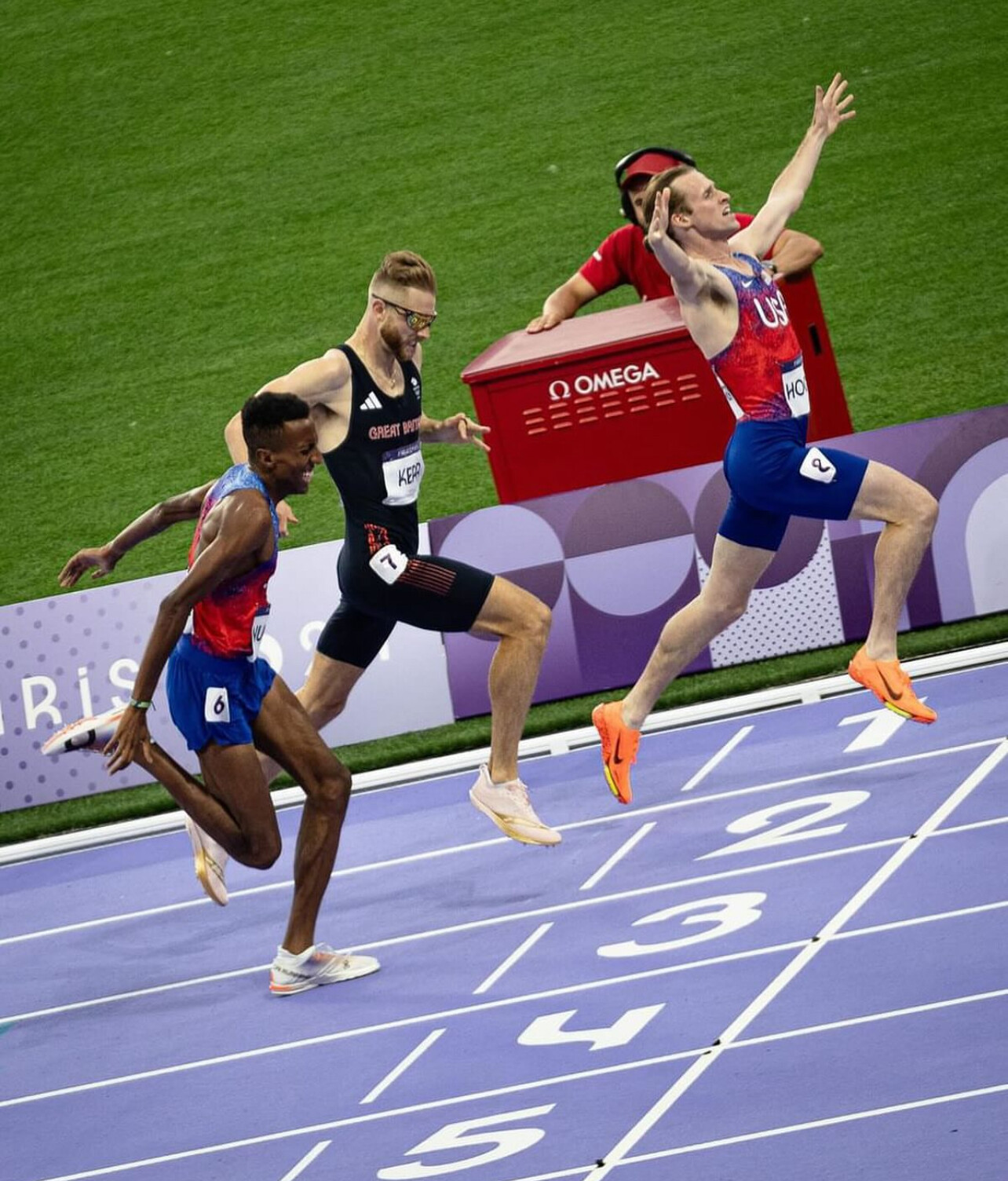
Ingebrigtsen, last season’s Diamond League overall champion, is no stranger to success at Hayward Field. At the 2023 Diamond League Final, he delivered a blazing 3:43.73 in the Bowerman Mile—setting both a European and Diamond League record. But this year, the challenge is steeper. Both Hocker and Nuguse outkicked him in the 1500m final at the 2024 Paris Olympics, and they’ll be looking to repeat that feat on home soil.
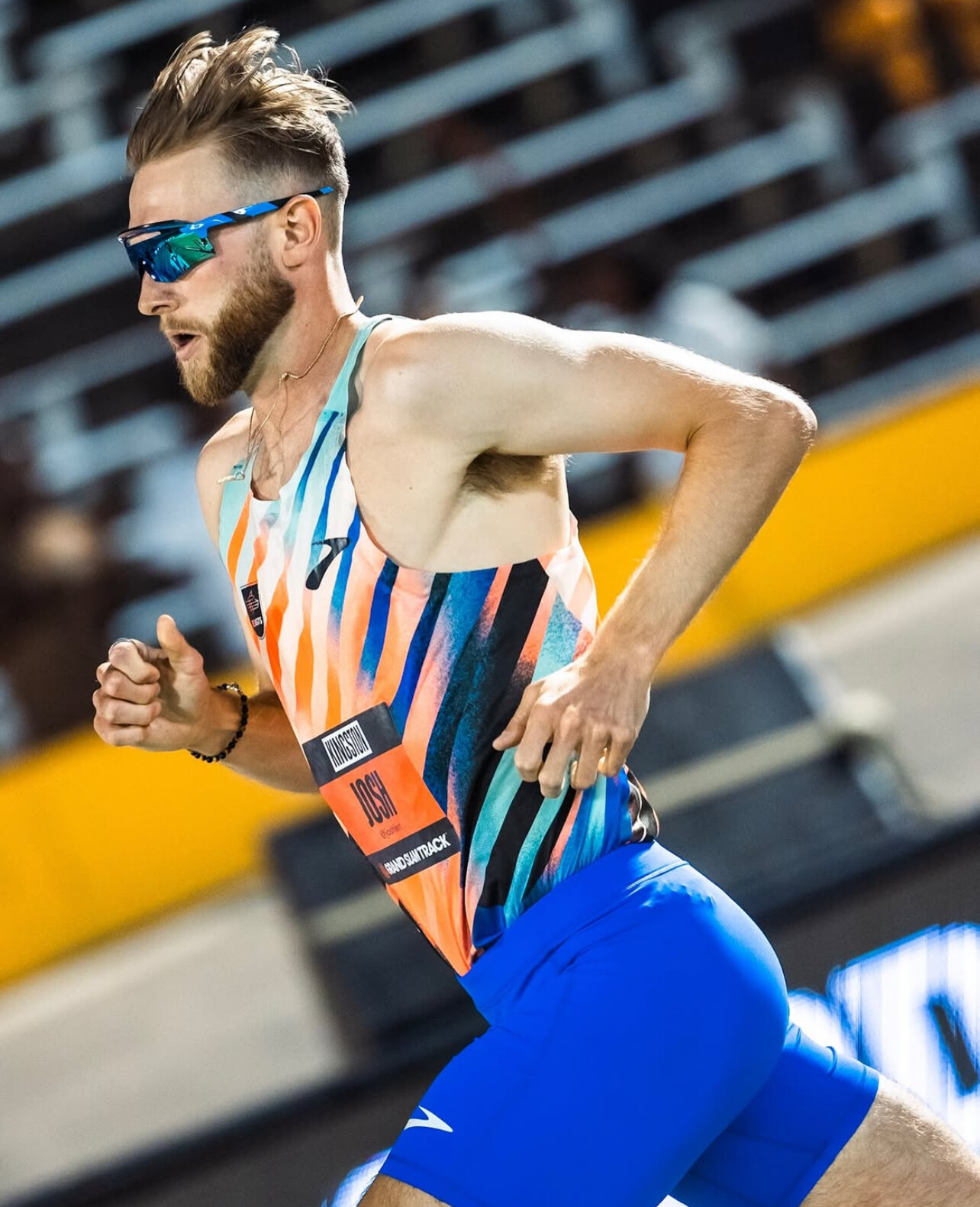
And in London, the rivalry with Kerr will reignite. The Brit also finished ahead of Ingebrigtsen in Paris, and the 1500m clash in front of a UK crowd will be packed with tension and stakes.
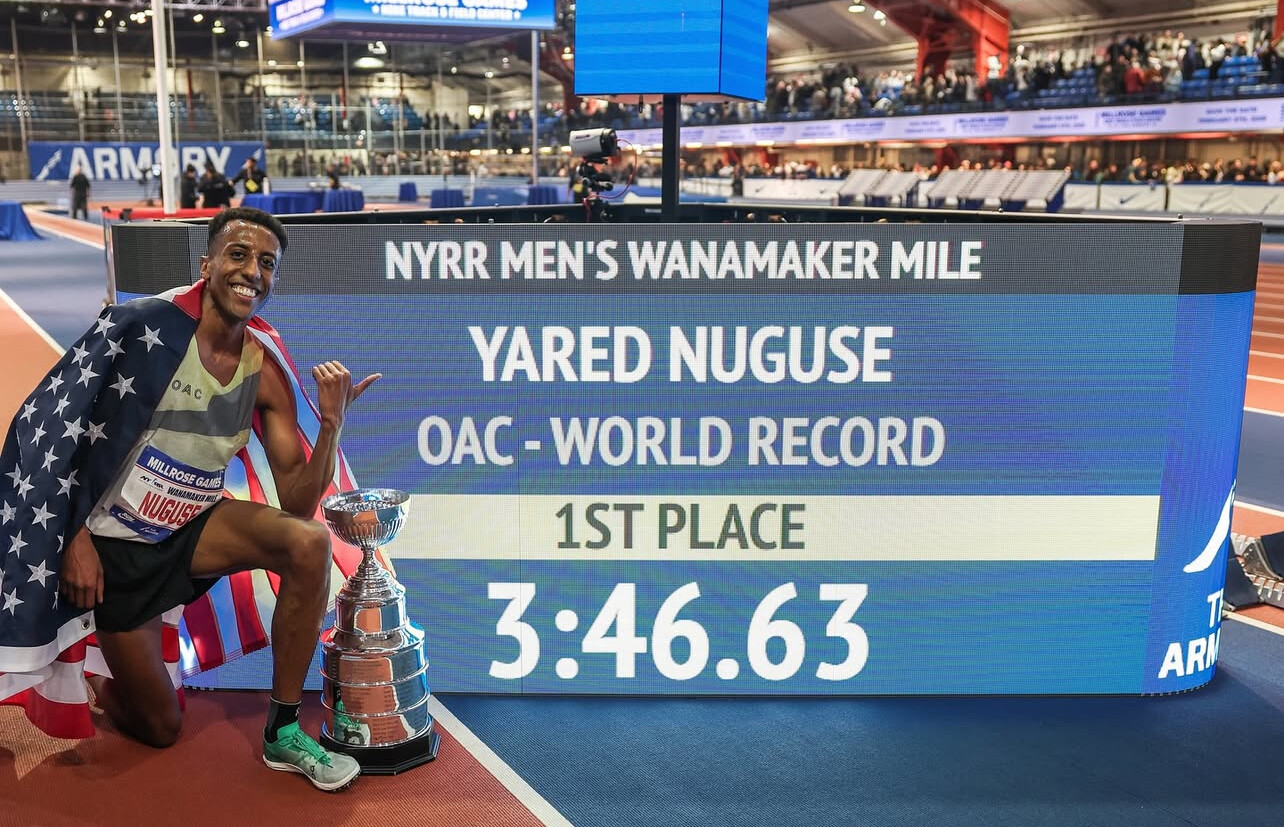
“I’ve recovered well from the indoors and training is going well,” said Ingebrigtsen, who claimed double gold in the 1500m and 3000m at both the World and European Indoor Championships this spring. Earlier this season, he also broke the world indoor records for the mile and 1500m in Lievin.
“I’ve never been afraid to show up, and it felt good to come away from indoors with four gold medals. My focus now is on the summer—and on returning to Tokyo, where I won Olympic gold in 2021, to win another global title.”
That return to Tokyo refers to the 2025 World Athletics Championships, where Ingebrigtsen hopes to reaffirm his dominance on the global stage after back-to-back Olympic defeats.
My Best Runs founder and lifetime runner Bob Anderson shared his thoughts on the coming matchups.
“I’m so impressed by the spirit Jakob Ingebrigtsen brings to our sport,” Anderson said. “His confidence is electric—he’s a showman, and often has most of the field beaten at the starting line. But Josh Kerr and Cole Hocker aren’t backing down. They have their own vision of who will cross the line first. That’s what makes these showdowns so compelling.”
by Boris Baron
Login to leave a comment
Historic World Records Dominate 2025 Millrose Games
The 117th Millrose Games, held on February 8, 2025, at New York’s Armory—a venue renowned as “The Fastest Track in the World”—delivered an unforgettable spectacle of middle-distance racing. Athletes shattered world records, national marks, and personal bests across events from the 800m to the 3000m, cementing this edition as one of the most electrifying in the meet’s storied history. Below, we break down the standout performances.
Records Fall in Mile, 3000m, and 800m
1. Wanamaker Mile: Yared Nuguse Rewrites History
Yared Nuguse (USA) stormed to a world indoor mile record of 3:46.63, eclipsing Ethiopian Yomif Kejelcha’s 2019 mark (3:47.01) . In a race missing world champion Josh Kerr (withdrawn due to illness), Nuguse led wire-to-wire, splitting 3:31.74 for 1500m—a North American record—before surging past a fierce challenge from Hobbs Kessler (3:46.90, also under the previous WR) . Australian teen Cam Myers stunned with a world U20 record of 3:47.48, while France’s Azeddine Habz (3:47.56) set a national record.
2. Men’s 3000m: Grant Fisher Outduels Olympic Champion
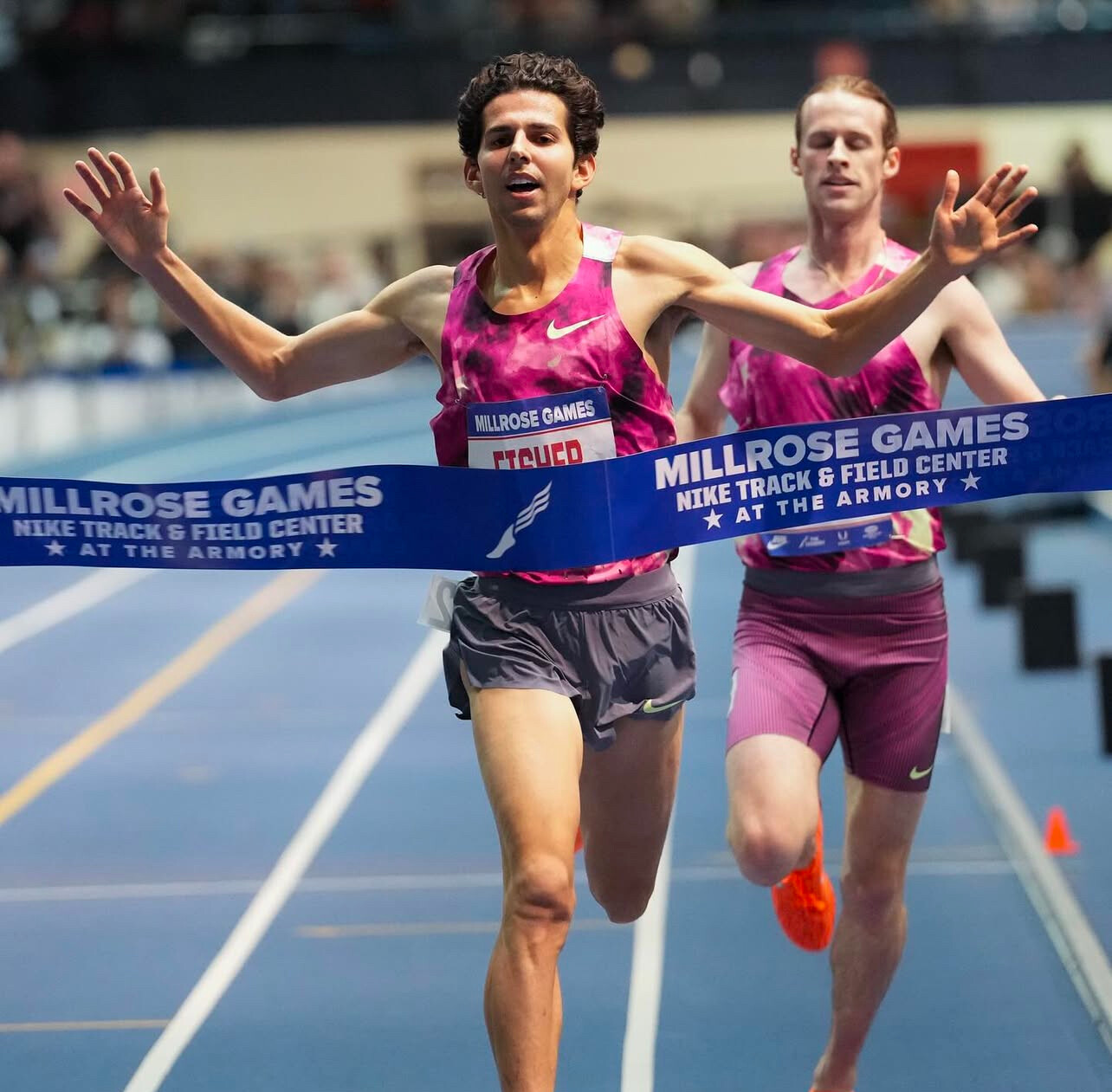
Grant Fisher (USA) and Cole Hocker (USA)—the Olympic 10,000m bronze medalist and 1500m gold medalist, respectively—collided in a tactical masterclass. Fisher’s 7:22.91 broke Lamecha Girma’s world indoor record (7:23.81), with Hocker (7:23.14) also surpassing the old mark . Fisher’s final 200m in 27.50 sealed the win, while France’s Jimmy Gressier (7:30.18) and Australia’s Ky Robinson (7:30.38) set national records .
3. Men’s 800m: Josh Hoey’s American Record Triumph
Josh Hoey (USA) dominated the 800m in 1:43.90, breaking Donovan Brazier’s American indoor record (1:44.21) and holding off Bryce Hoppel (1:44.19 PB) . Sixteen-year-old Cooper Lutkenhaus (1:46.86) smashed the high school record, previously held by Hoey himself .
Women’s Events: Breakthroughs in Mile, 3000m, and 800m
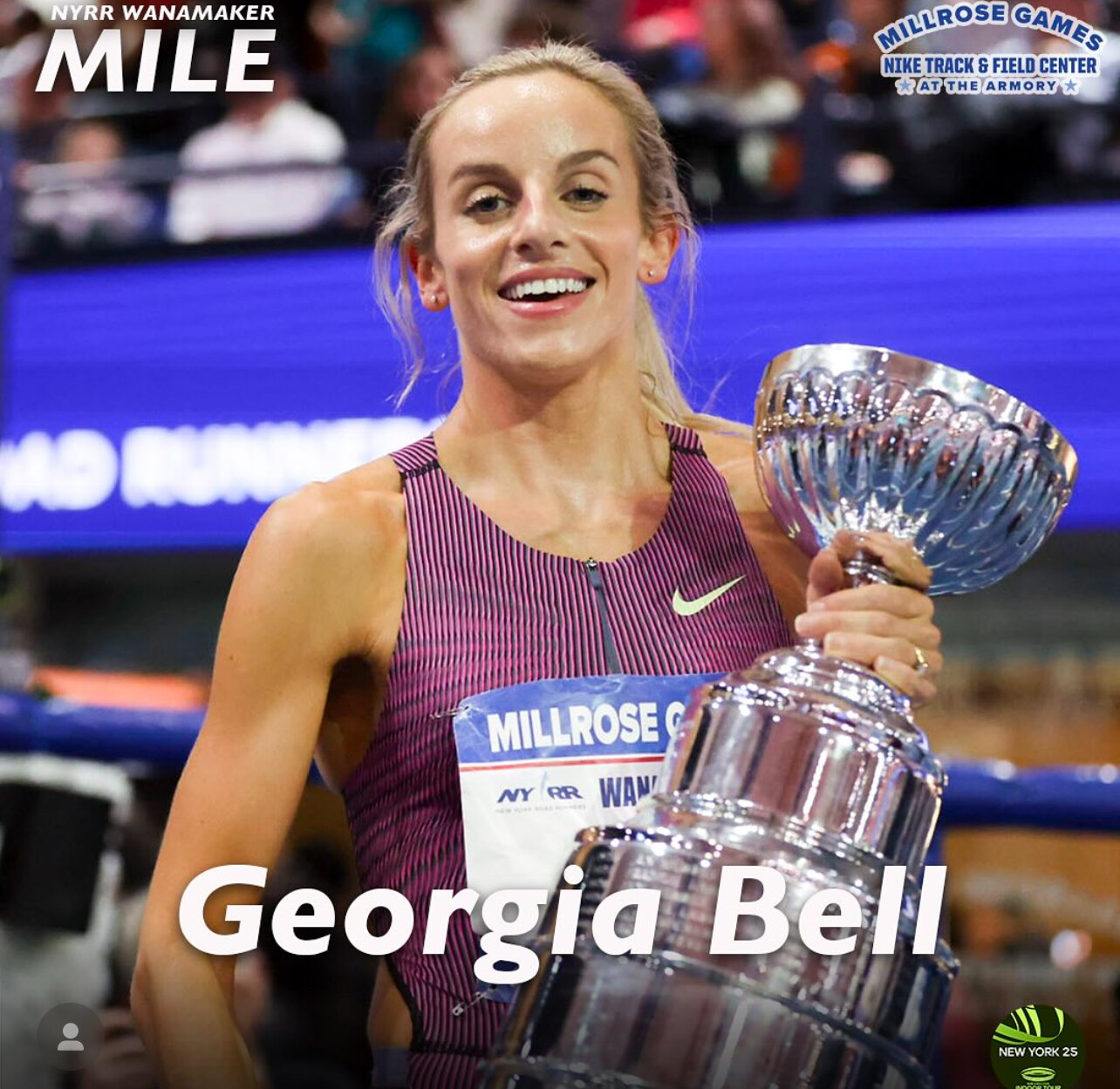
1. Women’s Wanamaker Mile: Georgia Bell’s Tactical Mastery
Georgia Bell (GBR), the Olympic 1500m bronze medalist, edged a stacked field to win in 4:23.35, outkicking Heather MacLean (USA, 4:23.41) and Nikki Hiltz (USA, 4:23.50) . Bell navigated a slow early pace (67.12 for the first quarter-mile) before unleashing a 61.97 final lap, crediting her composure in a “hard and messy” race .
2. Women’s 3000m: Whittni Morgan’s Commanding Victory
Whittni Morgan (USA) surged late to win in 8:28.03, a personal best, ahead of Josette Andrews (USA, 8:29.77) and Sarah Healy (IRL, 8:30.79 NR) . Ethiopia’s Tsigie Gebreselama (8:33.13) and Australia’s Jessica Hull (8:30.91) added depth to a fiercely competitive race .
3. Women’s 800m: Shafiqua Maloney’s Dominance
Shafiqua Maloney (VIN) claimed victory in 1:59.07, fending off a late charge by Addy Wiley (USA, 2:00.14) . Olivia Baker (USA, 2:00.02 PB) and Kaela Edwards (USA, 2:00.14) rounded out the podium in a race showcasing tactical grit .
With world records in the mile (Nuguse) and 3000m (Fisher), plus a slew of national and age-group marks, the 2025 Millrose Games underscored the rising global standard in middle-distance running. As athletes shift focus to outdoor seasons, these performances set the stage for a thrilling 2025 World Championships.
by Boris Baron
Login to leave a comment
NYRR Millrose Games
The Pinnacle of Indoor Track & Field The NYRR Millrose Games, first held in 1908, remains the premier indoor track and field competition in the United States. The 2025 edition will once again bring the world’s top professional, collegiate, and high school athletes to New York City for a day of thrilling competition. Hosted at the New Balance Track &...
more...Charlton, Jones and Johnson head New York hurdles clash
Devynne Charlton will return to the scene of her first world 60m hurdles record when she races at the Millrose Games – a World Athletics Indoor Tour Gold meeting – in New York on 8 February.
The Bahamian hurdles star clocked 7.67 to win at the Armory last year, taking 0.01 off Susanna Kallur’s 16-year-old record.

Tia Jones then equaled that mark just five days later to win the US indoor title in Albuquerque, before Charlton improved the world record by another 0.02 with her 7.65 performance to win the world indoor title in Glasgow.
In a season that gives Charlton the chance to defend her world indoor title in Nanjing in March, she will go head-to-head with Jones as well as the previously announced Olympic 100m hurdles champion Masai Russell at the Millrose Games.
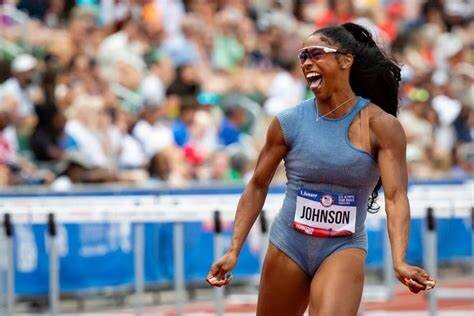
They will be joined by Jamaican 100m hurdles champion Ackera Nugent as well as US Olympic finalists Grace Stark and Alaysha Johnson.
“I can’t wait to be back at the Millrose Games this year,” said Charlton. “Almost a year ago, I broke the world record there for the first time and I’m looking forward to having another great showing and defending my title.”
Other athletes already announced for the meeting include Olympic silver medalists Katie Moon and Daniel Roberts, plus Olympic 1500m champion Cole Hocker and double Olympic bronze medalist Grant Fisher, who will go head-to-head in the 3000m.
by World Athletics
Login to leave a comment
NYRR Millrose Games
The Pinnacle of Indoor Track & Field The NYRR Millrose Games, first held in 1908, remains the premier indoor track and field competition in the United States. The 2025 edition will once again bring the world’s top professional, collegiate, and high school athletes to New York City for a day of thrilling competition. Hosted at the New Balance Track &...
more...Grant Fisher to Race Cole Hocker at 2025 Millrose Games in Battle of America’s Best Distance Runners
America’s two best distance runners are set to square off at America’s most prestigious indoor track meet.
On February 8, Grant Fisher will race Cole Hocker over 3,000 meters at the 2025 Millrose Games at the Armory. Fisher is the reigning US champion in the 5,000 and 10,000 meters and a double Olympic medalist. Hocker is the US and Olympic champion in the 1500 meters. Let the hype commence.
Over the last three years, the men’s 3,000 at Millrose has produced some of the best racing of the indoor season. In 2022, Geordie Beamish used a killer kick to upset Hocker and Cooper Teare in the home straight. In 2023, miler Josh Kerr surprisingly stepped up and won in a big pb of 7:33.47, demonstrating the endurance chops that would presage his World Championship 1500 victory six months later. Last year, the event was lengthened to two miles, and Kerr streaked to a world indoor record of 8:00.67 after Fisher tried and failed to break him during the second mile.
The top four finishers at 2024 Millrose would combine to earn seven global medals in 2024. Kerr claimed World Indoor gold in the 3,000 and Olympic silver in the 1500. Fisher, the runner-up in an American record of 8:03.62, took Olympic bronze in the 5,000 and 10,000. Hocker, 3rd in 8:05.70, claimed World Indoor silver and Olympic gold in the 1500. And fourth-placer Beamish (8:05.73) would defeat Hocker to win the World Indoor 1500 title three weeks later in Glasgow.

“You look back at that race, that was a pretty loaded field,” Fisher said on this week’s LetsRun.com Track Talk podcast where he announced he would be running Millrose. “Maybe not everyone said that at the time. They might’ve said Josh was the class of the field. But now post-Olympics, you see some people did really, really well throughout that season, and it all kind of started at Milrose at that two-mile. So it’ll be a fun spot to get things rolling again.”
More athletes will be announced as part of the field in the coming weeks, but Fisher versus Hocker should be enough to get any American distance running fan excited. This sort of matchup does not happen often. They were both Foot Locker Cross Country champions as high schoolers. They were both NCAA champions as collegians. They are both national champions as professionals. More than that, Hocker is the fastest American ever in the 1500 meters; Fisher holds the same title in the 3,000, 5,000, and 10,000. They are two of America’s brightest distance talents, now or ever, and they are firmly in their primes.

Fisher, 27, and Hocker, 23, did race three times this year, with Fisher prevailing in all three matchups: the 2-mile at Millrose, the 5,000 at the LA Grand Prix on May 17, and the Olympic Trials 5,000 final on June 30. But they’ve never raced each other as Olympic medalists. And that hits different.
Since 1968, four American men have medalled in the Olympic 1500 — Leo Manzano, Matthew Centrowitz, Hocker, and Yared Nuguse. During that same span, only two Americans have medalled in the Olympic 5,000 — Paul Chelimo and Fisher. Only once has one of the 1500 medalists raced one of the 5000 medalists. That came in May 2018, when Chelimo defeated Centrowitz in a 1500 at the Payton Jordan Invitational.
That’s it. Just one matchup between an American 1500 medalist and an American 5,000 medalist in more than half a century. On February 8 at Millrose, we’ll get to see the second, and it will come at the crossover distance of 3,000 meters. In their three battles in 2024, Fisher’s strength prevailed over Hocker’s kick, though Fisher acknowledged he had home-event advantage.
“I didn’t know I was 3-0 against Cole, but to be fair, I’ve never met him at his distance,” Fisher said. “So that gives me a little bit of an advantage. That would be like saying I’m undefeated against him at 10k or something — I don’t think that’s a fair comparison. So yeah, maybe I’ll drop down, race him in a 1500, have it be more of a balanced record to show. But Cole ran incredibly well in the 2-mile last year at Milrose.”
In 2025, however, Hocker will be looking to erase that advantage; he has spoken of wanting to be the best in the world at not just the 1500 meters, but the 5,000 as well. An early showdown against the Olympic bronze medalist is a great way to test the progess he is making.
So who will win on February 8? Hocker’s speed? Fisher’s strength? Or perhaps someone else entirely? We’ll find out in less than two months.
“It will be a really fun opportunity,” Fisher said. “Last year it was fast. I’m sure it’ll be fast this year. So it’s gonna be fun.”
by Jonathan Gault
Login to leave a comment
NYRR Millrose Games
The Pinnacle of Indoor Track & Field The NYRR Millrose Games, first held in 1908, remains the premier indoor track and field competition in the United States. The 2025 edition will once again bring the world’s top professional, collegiate, and high school athletes to New York City for a day of thrilling competition. Hosted at the New Balance Track &...
more...'It's so rare that on race can define your life'- Cole Hocker reflects on Paris 'Olympic blues' and being the man to beat in 2025
Cole Hocker claimed gold in the 1500m at the Paris Olympics with an Olympics record time, upsetting as star studded line-up.
American middle-distance runner Cole Hocker, fresh off his historic victory at the Paris Olympics, is embracing life as the world’s best 1500-meter runner.
Hocker etched his name in the record books with a stunning time of 3:27.65, setting a new Olympic record and defeating favorites such as defending champion Jakob Ingebrigtsen of Norway and Great Britain’s Josh Kerr, a two-time world champion.
In a candid reflection on his triumph, Hocker described the moment as transformative even as he struggles to grasp the nature of his new reality.
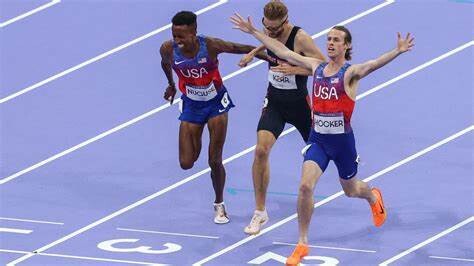
“It’s a life-changing victory, but you don’t ever really know where that’s going to take you,” he said via Citius Mag.
“So many things are still unfolding. I didn’t know how to prepare for this because I didn’t know what to expect. It was just a dream until it actually happened.”
Despite his monumental success, Hocker remains grounded, returning to his training base in Virginia.

“It’s back to business as usual,” he shared. “I’m surrounded by the same people who’ve supported me throughout this journey, and that keeps me focused. It’s an interesting headspace, but I’m embracing the challenge of being the best 1500-meter runner in the world and rising to every occasion.”
The 22-year-old also opened up about the mental adjustment following such a career-defining moment. He acknowledged experiencing what he termed “Olympic blues,” a phenomenon he says is common among athletes.
“You train your entire career for that one moment, and no matter how it goes, that date comes and goes. Even after having the best day of my life, it’s surreal to realize we’re already months past it. Moving forward feels strange, but it’s also exciting.”
Looking ahead, Hocker is determined to capitalize on his Olympic momentum. “I’m focusing on optimizing this victory and carrying that form into the next season. One race can define your life, and I’m making sure to rise to every new challenge.”
With his Paris performance setting the stage, Hocker is now one of the most formidable names in middle-distance running. As he gears up for the upcoming season, all eyes will be on him to see how he builds on his remarkable Olympic success.
by Stephen Awino
Login to leave a comment
Father of Ingebrigtsen brothers faces charges involving champion Jakob
The father and former coach of Jakob Ingebrigtsen will stand trial next year on charges of alleged physical abuse against the Norwegian two-time Olympic gold medalist, lawyers for Gjert Ingebrigtsen said on Friday.
Norwegian police earlier this year pressed charges against the elder Ingebrigtsen, and his lawyer said in a statement at that time that they involved only one of his children while other charges were dismissed.
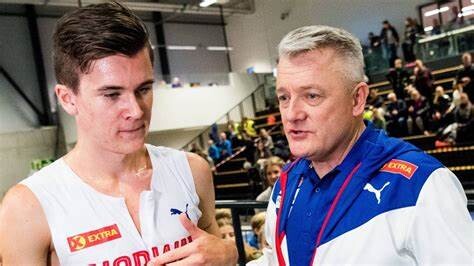
The charges will now extend to incidents involving Jakob, 24, who took the gold medal in the 5,000 meters in Paris this summer, his lawyer Mette Yvonne Larsen told Reuters.
"He is now charged with having abused two of his seven kids ... We had expected that this would happen," she said.
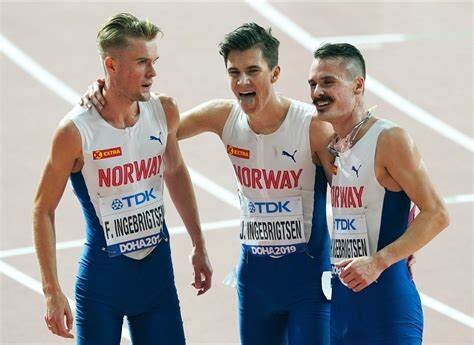
Gjert's lawyers, John Christian Elden and Heidi Reisvang, said in a statement: "Gjert Ingebrigtsen maintains what he has said all along, that he does not admit criminal guilt for the offenses he has been charged with and that he has never subjected any of his children to either physical or mental abuse."
Jakob accused his father of several incidents of abuse, according to Norwegian media, including slapping him twice in 2008 and kicking him in the stomach after he fell off a scooter in 2009.
There were also numerous incidents of verbal abuse and threats in 2015 and 2016, according to Jakob, who said in one incident that his father assaulted him for between 15 and 30 minutes.
The Times reported that, according to the indictment, Gjert allegedly threatened to beat Jakob "to death."
Jakob and his brothers, Filip and Henrik, accused their father of physical violence and abusive behavior in a Norwegian newspaper column last year. The elder Ingebrigtsen has repeatedly denied the claims.
Gjert Ingebrigtsen announced in 2022 that he was stepping down as coach not long after Jakob won gold in the 1,500 meters in Tokyo, prompting widespread speculation over their rift.
Jakob Ingebrigtsen finished third in his much-anticipated showdown with Brit Josh Kerr in the 1,500 meters in Paris this summer as American Cole Hocker took an unexpected gold medal. However, Ingebrigtsen did win gold in the 5,000 meters.
by Reuters
Login to leave a comment
Running More Relaxed Can Improve Your Performance—Here’s How to Do It
Experts share their best tips to help you stay calm, cool, and collected while you’re out on the run.
It’s possible to run fast without clenching every muscle in your body. Just look at some of the pros like Cole Hocker, Nikki Hiltz, or Sarah Vaughn who seem to clock seriously fast times while making it look like an easy walk (er, run) in the park.
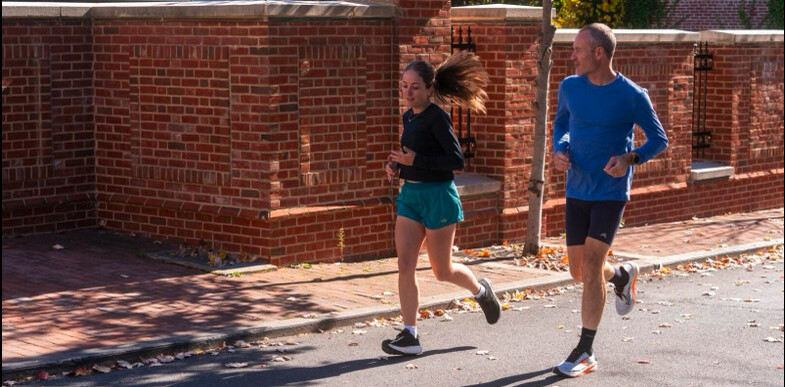
These pros and many others have mastered running with slack shoulders, fluid arms, and a powerful stride, all while seeming light on their feet. It’s the art of running relaxed—and it can actually help your performance.
Experts encourage you to run relaxed on easy and long run days—those workouts where you’re meant to go at an easy effort. But running relaxed is a tool you can use to your benefit for any type of run.
“It is important to remain relaxed in terms of not recruiting muscles that don’t need to be recruited, because that can increase the energy that you’re using for the run,” Heather Milton, M.S., exercise physiologist at NYU Langone Health’s Sports Performance Center tells Runner’s World. This can cause you to fatigue and slow down more quickly, she explains.
For example, lifting your shoulders up toward your ears or tensing up your face while you run requires more energy than letting your upper body and jaw hang a little looser. This could also affect form: If you’re running tensely upright, without a forward lean, you’re less able to activate the glutes, and your knees take on more force, potentially leading to knee pain, Milton explains.
To help you perfect the art of running relaxed and get the most out of your workouts, we tapped experts for their best tips.
Quick Forms Tips to Help You Relax on the Run
When it comes to running relaxed, maintaining the proper running form is key and will help improve your efficiency. Although not everyone’s stride is the same, keep these cues in mind while you’re out clocking miles:
➥Keep Your Upper Half Loose
Run
➥Lean Forward
“What we want to see is that there is a slight angle of your running, so from your ankle through your hips, through your shoulders, you’re progressively closer to your target, looking forward,” Milton says. You can imagine your body in a slight diagonal line as you run forward. This will enable a greater amount of lower leg activation, better push off, and better hip extension. It can also reduce your risk for injury and improve your performance, she explains.
➥Make Your Center Stable
“The core should be a stable column on which we run and can have more effective push off,” says Milton. This is why it's important to build core strength, she adds.
➥Drive Forward With Your Feet
In terms of your feet, Milton recommends you focus on swiping the ground behind you while you run.
8 Tips to Help You Stay Relaxed on the Run
Beyond fixing your form, here are a few things you can try leading up to race day and during your run to help you maintain that relaxed run posture. Rather than implementing all of these tips at once, try out a few of them to see which ones work best for you so you stay calm, cool, and collected on the road.
1. Work on Your Mobility
Limited range of motion can hinder your ability to run more relaxed.
“It really takes access to every joint movement in the body,”John Goldthorp, a certified personal trainer and run coach tells Runner’s World. If you can’t freely move your joints, then you can’t make the necessary movements that you need to help you run really well, he explains.
This is why he recommends working through different planes of motion (front to back, side to side, and rotational) before you run and even on non-running days.
To do that, practice moves like standing cat cow, side bends, and rib cage and pelvic rotations, all of which work the spine and upper body through the different movement patterns. Also, work on pronation
Working with a physical therapist or functional mobility specialist can also help you address these areas so you can improve your range of motion and run more fluidly.
2. Address Any Pain Areas
As you can imagine, or might have even experienced, running with pain can hinder your ability to relax. This is why Milton recommends strength training as a way to address some of your pain points.
For example, address shin splints by strengthening your feet, ankles, calves, and hips. Target pain associated with runner’s knee by strengthening your hips and inner quads.
“Strength training is a great way to make sure that your body is ready for the run,” says Milton.
3. Add Strides to Your Calendar
The key is to practice running short bouts at different paces like your easy, marathon, half marathon, 10K, 5K, and mile pace while relaxed, says Goldthorp. He recommends you start by introducing strides toward the middle or second half of an easy run.
“Like any new stimulus, you’ll want to introduce things gradually both in terms of how many repetitions you do and how fast you’re running them,” he explains. This may mean running four reps of 20-second strides with
Lastly, take a few minutes to gradually progress from a slow walk to a brisk walk and then to a light jog, says Goldthorp. “I always think to myself, I’m not really going to hit my ‘training pace’ for probably about 15 minutes,” so don’t rush it, he says.
This will not only help you ease into the run better, but it can help you find your rhythm more easily and allows you to remain relaxed as you adjust from not running to running slowly to running at a quick clip. Just remember to keep that loose feeling through each progression.
5. Complete a Quick Self Scan
Before you head out for a run, Goldthorp recommends you take note of where you typically hold tension in your body. For example, do you clench your jaw or shrug your shoulders?
“Scan your body. If you notice tension, see if you can let it go, see if you can soften that area,” he says. You can also visualize that area of your body flowing like water.
Then, on the run, check for specific body cues, says Milton. For example, make sure you’re bringing your arms back directly behind you and then letting
If you’re running with a watch on race day “check in and check your splits and make sure that you’re not running too fast, which can create a lot of undue tension,” Milton adds. If you are going too fast, she recommends coming back to your breathing and making sure it feels appropriate for your target pace.
8. Don’t Be Afraid to Give It Your All
There might be times, especially at the end of a workout or race, where we’re willing to get ugly and push past our comfort zone to hit your goal time or beat an opponent, says Accetta. In these moments, it’s acceptable to push yourself even if that means tensing up a bit.
The key is recognizing when to kick it into high gear, like when you’re sprinting to the finish. You don’t want to waste all your energy too soon, Accetta explains. Even when you do pick it up, remember some of those form tips of keeping your upper body loose and your jaw slack so your legs have the energy they need to turnover fast.
Login to leave a comment
Hicham El Guerrouj’s 26-year reign at risk as 1500m titans eye world record in Brussels
Three top middle-distance runners are set to challenge the long-standing 1500m world record at the Brussels Diamond League.
The men's 1500m world record set back in 1998 by Morocco’s Hicham El Guerrouj will come under serious threat as three of the most promising middle-distance runners—Jakob Ingebrigtsen, Cole Hocker and Yared Nuguse—are set to clash in the Diamond League final in Brussels this Saturday.
El Guerrouj’s incredible time of 3:26.00 has stood the test of time for 26 years with no one able to break the mark that many thought would be surpassed by now.

However, the trio of Olympic and World Championship medalists are all in peak form and ready to challenge this long-standing record making this one of the most highly anticipated 1500m races in recent memory.
The Tokyo Olympic champion Jakob Ingebrigtsen, enters the race as the favorite. The Norwegian sensation boasts a personal best of 3:26.73, a mere 0.73 seconds shy of El Guerrouj’s historic mark.

Ingebrigtsen’s dominance over the distance has been unmatched this season, and he has made it clear that breaking the world record is on his radar.
“I feel like I’m in the best shape of my life.The world record is something that has always been in the back of my mind, and I believe this is the best chance I’ve had to go for it," said Ingebrigtsen.
Pushing him to the limit will be the American duo of Cole Hocker and Yared Nuguse. Hocker, fresh off an Olympic season that saw him claim a gold medal in the 1500m is ranked seventh on the all-time list with a personal best of 3:26.73 matching Ingebrigtsen’s time.
Hocker’s confidence has been building all season, and the 23-year-old has openly expressed his desire to break into history.
“I hope to take a stab at the world record, whether it’s this season or next year,” said Hocker.
“But right now, I’m focused on leaving a lasting legacy. The Olympic gold was the first goal, and now it’s time to chase something even bigger.”
Yared Nuguse, ranked ninth on the all-time list, is another strong contender. Nuguse has steadily risen through the ranks with a personal best of 3:27.80 and a season-best of 3:27.80 as well.
The 25-year-old has proven himself capable of competing against the best in the world and could be poised to surprise both Hocker and Ingebrigtsen in Brussels.
The race, however, will be missing one key figure in Josh Kerr, the British 1500m specialist who recently confessed that the mental toll of the season has led him to opt out of the final. Kerr’s absence opens the door for a fascinating showdown between Ingebrigtsen, Hocker, and Nuguse.
In addition to the leading trio, the race will feature strong competition from the likes of Kenya’s Reynold Cheruiyot, a rising star who has posted a season-best of 3:28.28, and Timothy Cheruiyot, the former World Champion.
France’s Azzedine Habz and Great Britain’s Elliot Giles will also be in the mix, having both posted times in the 3:29 range this season.
El Guerrouj’s record-breaking performance in 1998 was the first time a runner had managed to average under 55 seconds per lap for the 1500m.
With athletes now regularly running sub-3:30 times, the level of competition has never been higher. Whether it’s tactical brilliance, pure speed, or a combination of both, this race has all the ingredients to produce fireworks on the track.
by Festus Chuma
Login to leave a comment
Out of this world!
Jakob Ingebrigtsen obliterates the 3000m world record at the Memoriał Kamili Skolimowskiej with 7:17.55.
He goes more than 3 seconds faster than the previous world record!
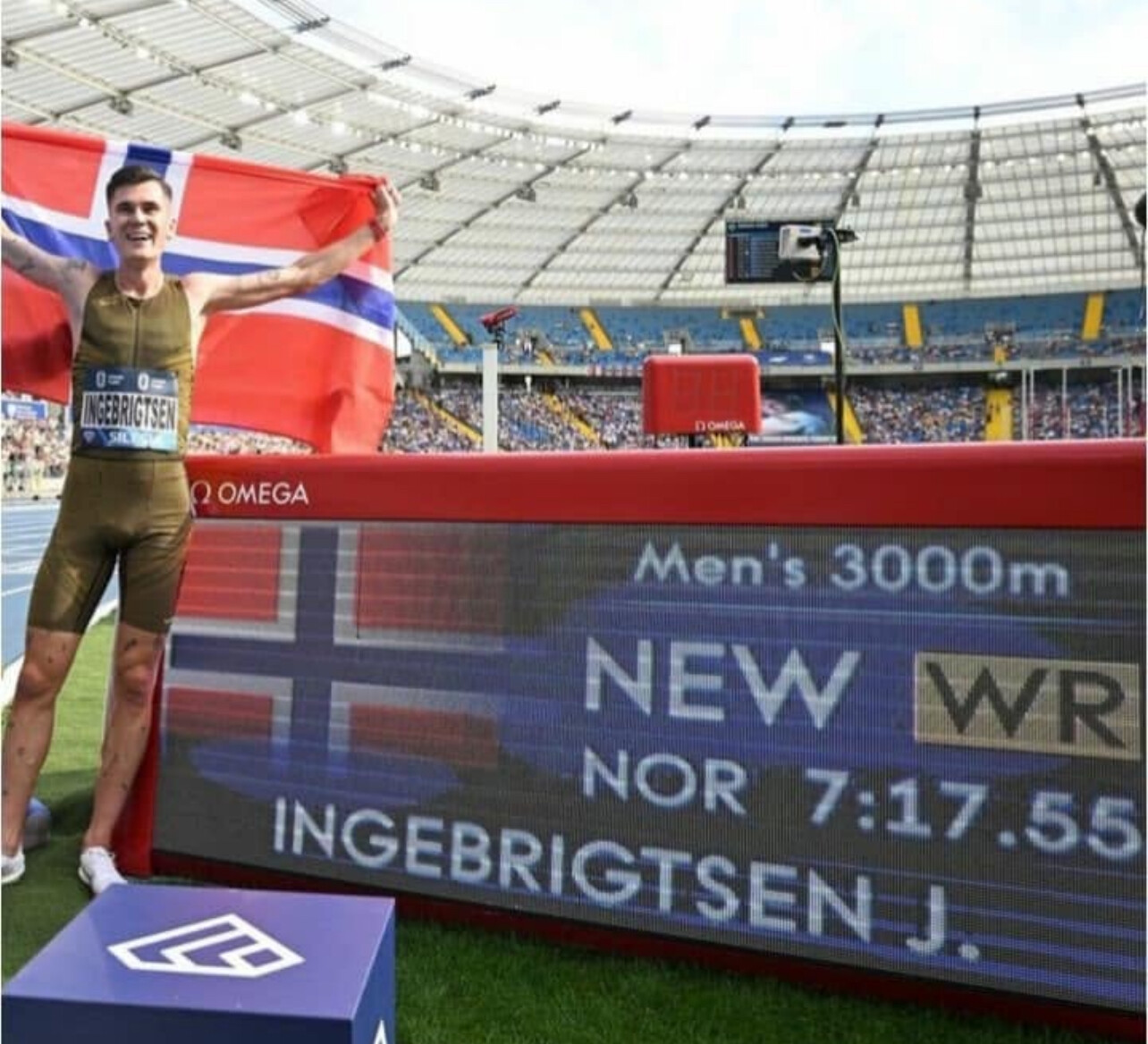
Norway’s Jakob Ingebrigtsen shattered the world 3000m record in the Silesia Diamond League on Sunday (25) afternoon with 7:17.55 to become the first athlete in history to break the 7:20-barrier for the seven-and-a-half lap distance.
The Olympic 5000m champion slashed more than three seconds off the previous mark of 7:20.67 which had stood to Kenya’s Daniel Komen since 1996, the longest standing world record in an individual men’s track event.
But the 23-year-old Norwegian took the record into uncharted territory, churning out the last two laps in 57.46 and 55.47 respectively - 1:52.93 for the last 800 metres - to break away from Ethiopia’s Berihu Aregawi and take a significant chunk of 3.12 seconds off Komen’s enduring record.
“It feels special, amazing. I was hoping to challenge the world record here but based on my training, I can never predict exactly what kind of time I am capable of. I would not have imagined I could run 7:17, though,” said Ingebrigtsen.
. “I would not have imagined I could run 7:17, though. At the beginning the pace felt really fast, but then I started to feel my way into the race and found a good rhythm.
“[The] 3,000 is a tough distance,” continued Ingebrigtsen. “After four-five laps you feel the lactic acid, but you need to get going. The conditions were difficult with the heat today, but it is the same for everyone. Now I want to challenge world records at all distances, but it is one step at a time.”
He finished ahead of a trio of Ethiopians, with the Paris Olympics 10,000m silver medallist, Berihu Aregawi. second in a personal best and the third-fastest time in history (7:21.28). Yomif Kejelcha was third.
Three days ago, the Norwegian had exacted a small measure of revenge over the American Cole Hocker by winning the men’s 1500m in Lausanne in 3:27.83, two weeks after Hocker shocked the Olympic field to win gold in Paris.
He won $50,000 for setting the record.
Login to leave a comment
Cole Hocker on why lowering Hicham El Guerrouj's longstanding 1500m record is more than just a dream
Cole Hocker is aiming to break the 1500m record after Olympic gold and has revealed his plans for achieving this historic feat.
American middle-distance runner Cole Hocker has his sights firmly set on breaking the world record in the 1500 meters a mark held by Morocco’s Hicham El Guerrouj for over two decades.
Fresh off a stunning Olympic gold medal victory in Paris, where he beat his personal best by almost three seconds, Hocker is not just basking in the glory of the moment.

At 23 years old, Hocker's remarkable achievement at the Paris Olympics was a significant upset.
The University of Oregon alum surged from fifth to first over the final 300 meters to clinch the gold in an Olympic record time of 3 minutes, 27.65 seconds.
This victory marked the first U.S. win in the metric mile since Matt Centrowitz in 2016. He outran favorites Jakob Ingebrigsten and Josh Kerr, leaving Ingebrigtsen, who led for the majority of the race, in fourth place.
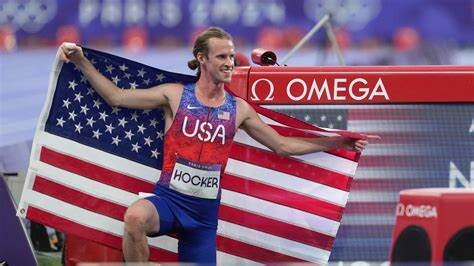
Before his next race at the Luassane Diamond League Hocker expressed his ambitions to push the boundaries even further.
“Two weeks ago I was a 3:30 guy, and that’s a long way from 3:26, and you have to run 3:25 to get the world record, so I’m trying to figure that out. I’ve run 3:27 one time and I want to get comfortable running that," he stated during the pre-race press conference.
Hocker acknowledges that his strength lies in his tactical approach to racing.
"I am a racer, and all my best races come from racing them tactically, so that might just be something I have to learn. I’ve been in races that are set up fast and have done well, but my bread and butter right now is racing," he explained.
“I hope to take a stab at that whether it’s this season or next year, but now I have another goal to set my mind to. It was always Olympic gold, and now I’ve checked that box. I’m really concerned with establishing myself as one of the greatest runners in history, so logically that would be the next step,” he noted.
The current world record of 3:26.00 set by El Guerrouj has stood unchallenged since 1998.
Lowering this record will require not just physical excellence but meticulous planning and preparation.
by Festus Chuma
Login to leave a comment
Indomitable Grant Holloway clinches 110m hurdles gold medal as Jamaica's Rasheed Broadbell settles for Bronze
Grant Holloway has finally clinched gold at the Olympics stage following a dominating 110m hurdles victory.
America's Grant Holloway has finally added an Olympic title to his collection after winning the final of the 110 meters hurdles at the ongoing Paris games.
Holloway’s victory marks the first time an American has won gold in this event since Aries Merritt's triumph at the London 2012 Olympics. Holloway’s performance was nothing short of exceptional, as he maintained his unbroken winning streak and solidified his status as one of the greatest hurdlers in recent history.
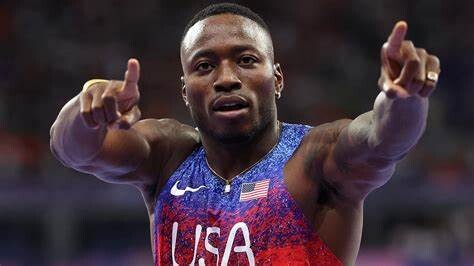
In a close race for the remaining podium spots, U.S. teammate Daniel Roberts captured the silver medal with a time of 13.09 seconds, narrowly edging out Jamaica’s Rasheed Broadbell in a photo finish for the bronze. This marks Roberts' first Olympic medal, adding to the U.S. team’s success in the event.
Holloway’s gold medal not only adds to his impressive collection of accolades but also underscores his dominance in the 110m hurdles.
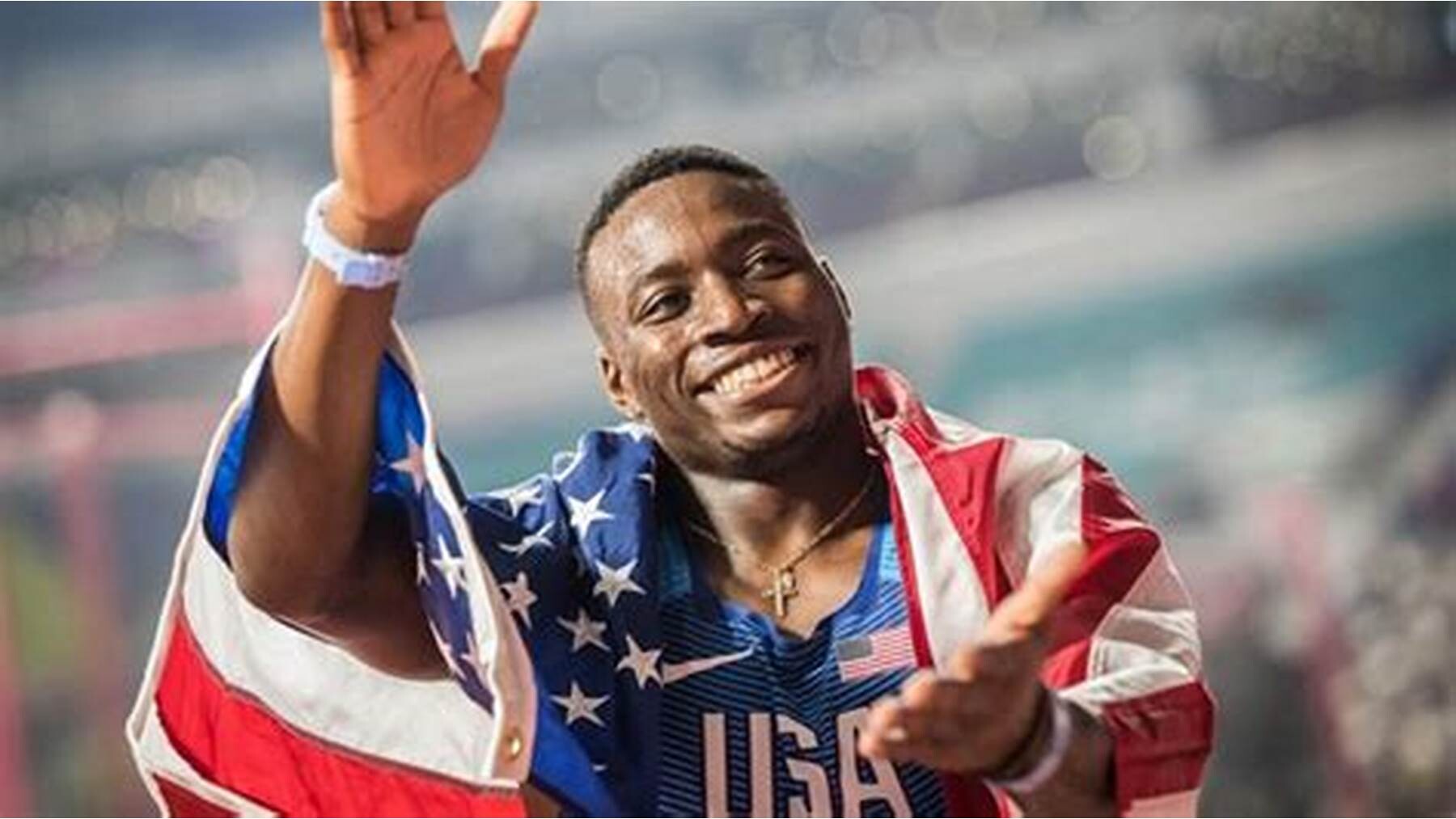
Thursday's victory also brings some redemption for Holloway after a disappointing showing at the Tokyo Games in 2021 where he entered as the favorite but was upset by gold medalist Hansle Parchment of Jamaica. He began the race with a lead through the first 60 meters but surprisingly stumbled over the seventh hurdle, causing him to fall behind and finish in second.
"You guys think about Tokyo a lot, but we're in Paris," Holloway told reporters prior to the race. "I'm looking forward to continuing to show the great form that I'm in. … Everybody is talking about a world record. If it comes, it comes. The first thing we have to take care of is winning."
Holloway did just that, continuing USA's dominance in this year's Track & Field competitions. He is now the sixth American gold medalist runner, joining Noah Lyles (men's 100m), Quincy Hall (men's 400m), Cole Hocker (men's 1,500m), Gabrielle Thomas (women's 200m) and Sydney McLaughlin-Levrone (women's 400m hurdles).
Sydney McLaughlin-Levrone overcomes Femke Bol to succesfully defend 400mH title & set new world record.
by Mark Kinyanjui
Login to leave a comment
Paris 2024 Olympic Games
For this historic event, the City of Light is thinking big! Visitors will be able to watch events at top sporting venues in Paris and the Paris region, as well as at emblematic monuments in the capital visited by several millions of tourists each year. The promise of exceptional moments to experience in an exceptional setting! A great way to...
more...Hall stuns with 43.40 run to take Olympic 400m title in Paris
Quincy Hall, in the manner of his US teammate Cole Hocker in the previous evening’s men’s 1500m, arrived late to claim the spoils from the hands of a Briton in a men’s 400m at the Paris 2024 Olympic Games where five runners beat 44 seconds on Wednesday (7).
After winning a battle with Grenada’s rejuvenated 31-year-old London 2012 gold medalist Kirani James in the next lane, Matthew Hudson-Smith, who had come into these Games topping this season’s world list on 43.74, looked about to claim his first global gold.
But the rapidly arriving figure of Hall, in lane eight, confounded him with an irresistible finish over the final 30 meters that saw him hit the line ahead of his British rival, who would not even have been aware of him coming.
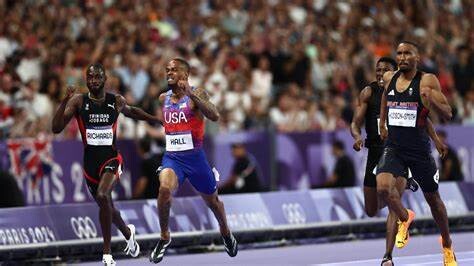
A jubilant Hall won in a personal best of 43.40, while Hudson-Smith, who ran an admirable and controlled race, lowered his European record to 43.44 in taking silver.
Hall and Hudson-Smith also established themselves in respective fourth and fifth place on the world all-time list, underlining the deep quality of this race.

In a parallel contest, as James slipped back, bronze looked as if it might be claimed by the 2022 world indoor champion Jereem Richards of Trinidad and Tobago, but he too tightened up in the closing stages.
Zambia’s Muzala Samukonga, who beat Hudson-Smith to the Commonwealth title in Birmingham two years ago, came through to finish third, bettering the national record of 43.81 he had set in the semifinals with a time of 43.74.
In what was a very open final, Richards was rewarded for his efforts with a national record of 43.78 in fourth place, with James taking fifth place in 43.87. Times one might have expected to earn a medal of some color. It's the first time that five men have finished inside 44 seconds in one race.
Michael Norman, the 2022 world champion who had run a season’s best of 44.10m in the semifinals, finished a disappointed eighth in 45.62.
“I was just thinking, 'get home, sir. Get home, sir’,” said Hall, a former 400m hurdler. "I don’t give up. I just grit, I grind. I’ve got determination. Anything I think will get me to that line, I think of it. A lot of hurt, a lot of pain.
"I just won. It’s over. For the next four years I can say I’m an Olympic champion."
Hudson-Smith said: “I've got an Olympic silver medal and how many people can say that? It's been a hell of a journey. I've been the bridesmaid a couple of times now, but my time is coming. I'm just happy and grateful.
"My family are here. I didn't know they were here, so that was a bit of a shock. I hate them watching me, and my parents don't really watch me often, because they hate watching me as much as I hate them watching - so it's crazy that they came.
"I thought I'd cleared the field. I knew someone was going to come. I wasn't trying to ease up, I was running to the line. He got me on the line, it happens.”
On the fact that five runners went under 44 second, James – the Rio Olympic silver medalist and Tokyo bronze medalist as well as London 2012 champion – added: “There were three in 2016, and I thought I wouldn't see something like this again. I’m glad I’ve been proven wrong.”
by World athletics
Login to leave a comment
Ingebrigtsen avoids the mayhem to make 5,000m final
A little over 14 hours after being run out of the medals in the 1,500 metres final, Norway’s Jakob Ingebrigtsen was back on the Olympic track on Wednesday in the heats of the 5,000m, where he looked strong as the fastest qualifier.
The defending champion over 1,500m finished fourth in a race won by long-shot American Cole Hocker and, understandably, did the minimum necessary on Wednesday to advance to Saturday’s final.
After going out hard from the start on Tuesday night, he sat comfortably at the back of a 20-man field before easing to the front two laps out and leading it home in 13 minutes 51.59.
The Norwegian bounced back from defeat in the last two world championship 1,500m finals to win the 5,000 and would obviously love to make that a hat-trick.

Ingebrigtsen has been outspoken in his criticism of Briton Josh Kerr, who took silver in the 1,500, but was magnanimous in defeat, writing on his Instagram page: "Well, I guess he (Kerr) did show up after all. Cole Hocker, (bronze medallist) Yared Nuguse and Josh Kerr outsmarted me. They were 'the best guys' when it really mattered. And I want to congratulate them all on a great performance."
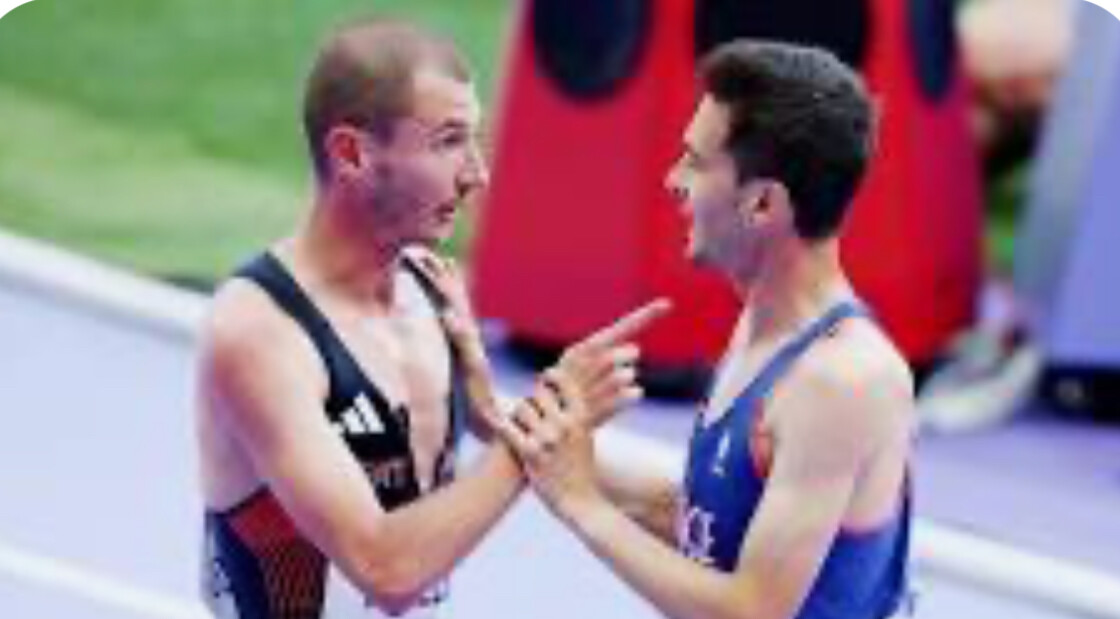
There was great support from the crowd as home favourites Hugo Hay and Jimmy Gressier made the early running in a slow and eventually chaotic first heat.
The pedestrian pace meant that the entire 21-man field was together heading into the final lap, with the inevitable clashes, leading to four men falling in the final straight mayhem.
Narve Gilje Nordas, who finished seventh, in the 1,500m final, kept clear of it by hitting the front and led it home in a "fast-walk" 14:08.16, ensuring there will be two Norwegians in the final.
He even had time to fist-bump second-placed finisher Hagos Gebrhiwet of Ethiopia, who became the second-fastest man ever over the distance earlier this year, before they crossed the line.
Grant Fisher, still on a high from his bronze in the 10,000, will look to extend the United States' impressive middle and long-distance showing in Paris after also progressing.
Canada’s Tokyo silver medallist Mohammed Ahmed did not make it after falling earlier in the first heat, but the four who went down at the end of it - Dominic Lokinyomo Lobalu, George Mills, Mike Foppen and Thierry Ndikumwenayo - were all added to the final lineup after appeals.
Login to leave a comment
American Cole Hocker grabs gold from Josh Kerr as Jakob Ingebrigsten and Timothy Cheruiyot wilt in epic 1500m final
America's Cole Hocker shocks world with by clinching 1500m Olympic gold as Ingebrigsten, Kerr and Kenya's Timothy Cheruiyot miss out.
In a breathtaking display of speed and strategy, America’s Cole Hocker defied all expectations to win gold in the men’s 1500 meters at the Paris 2024 Olympic Games.
Hocker, who was not widely tipped to be a podium contender in a race stacked with talent, outpaced pre-race favorites Jakub Ingebrigtsen, Josh Kerr, and Kenya’s Timothy Cheruiyot to clinch victory and set a new Olympic record of 3:27.65.
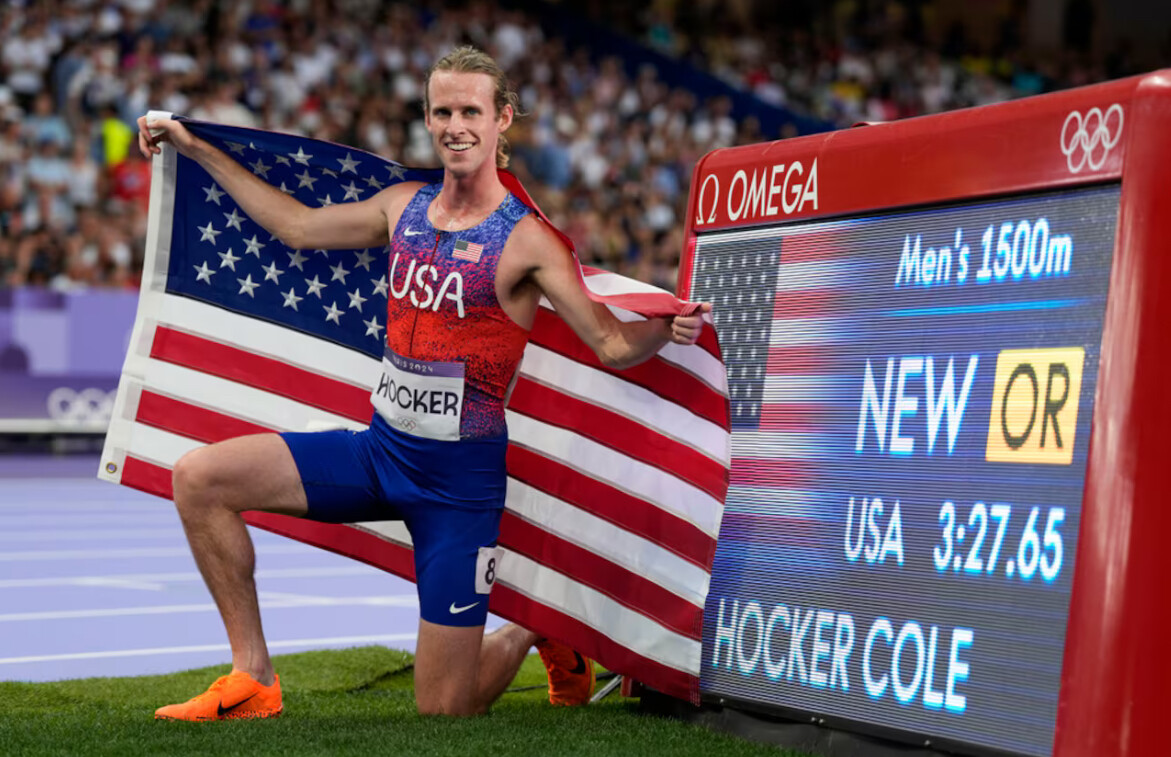
The race, which featured three Americans in the final for the first time in Olympic history, saw Hocker apply relentless pressure on Kerr alongside compatriot Yared Nuguse.
In the final 50 meters, Hocker surged ahead, leaving Kerr and the rest of the field in his wake. Kerr had to settle for silver, finishing in 3:27.79, with Nuguse narrowly taking bronze in 3:27.80.
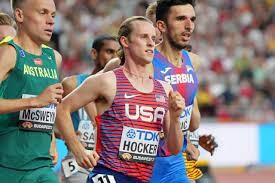
The race was full of surprises, especially with Cheruiyot, the 2019 world champion, fading dramatically in the last 200 meters to finish a disappointing 11th place. His compatriot, Brian Komen, struggled even more, finishing last with a time of 3:35.59.
Jakub Ingebrigtsen, known for his typical backfoot approach where he waits to make his move in the final stages, adopted a different strategy this time.
He led the charge in the first 800 meters, with Kerr and Cheruiyot close behind, setting a blistering world-record pace after the first lap. As the race progressed, it became clear that the final lap would be a dramatic showdown among the front runners.
With 200 meters to go, Cheruiyot and Komen both started to wilt under the intense pace, falling behind as Kerr and Ingebrigtsen battled for the lead. However, Ingebrigtsen, too, began to fade in the closing stretch, allowing Kerr to take control and seemingly secure the gold.
But it was Hocker who had the final say. Taking advantage of Kerr's inability to maintain his pace, Hocker surged past him in the final meters, crossing the finish line first.
The victory was sweetened by the Olympic record he set, a testament to his superb race execution. Hocker celebrated his monumental achievement by thumping his chest and ringing the bell, signaling his arrival on the world stage.
Hocker’s triumph is a significant moment in Olympic history, showcasing the depth of talent in American middle-distance running and marking him as one to watch in future championships.
by Mark Kinyangui
Login to leave a comment
Paris 2024 Olympic Games
For this historic event, the City of Light is thinking big! Visitors will be able to watch events at top sporting venues in Paris and the Paris region, as well as at emblematic monuments in the capital visited by several millions of tourists each year. The promise of exceptional moments to experience in an exceptional setting! A great way to...
more...The wait is almost over. The men’s Olympic 1500 meters is almost upon us
The 1500 is always one of the crown jewels of the Olympic program, and the burgeoning rivalry between Olympic champion Jakob Ingebrigtsen of Norway and world champion Josh Kerr of Great Britain has sent anticipation levels through the roof in 2024. The last two global 1500-meter finals were unforgettable, and this year’s race is shaping up as an all-time classic after the two men have spent the last 12 months trading verbal barbs.
On the night of August 6 in the Stade de France, one of three things will happen:
1) Ingebrigtsen will win his second Olympic 1500-meter title at the age of 23, joining Seb Coe (1980, 1984) as the only man to repeat as champion.
2) Kerr will win gold, just as he did at last year’s World Championships, bringing Ingebrigtsen’s record in global 1500m finals to 0-4 since his triumph at the 2021 Olympics (with one being the 2022 World Indoors loss).
3) Someone else will win the title in one of the great Olympic upsets. Could it be 19-year-old phenom Niels Laros? Or perhaps two-time Olympic Trials champion Cole Hocker of the United States?
As long as the race isn’t marred by a fall — which has sadly become all too common in middle-distance races this year — it’s hard to envision a scenario in which this race is not totally awesome.
by Jonathan Gault
Login to leave a comment
Paris 2024 Olympic Games
For this historic event, the City of Light is thinking big! Visitors will be able to watch events at top sporting venues in Paris and the Paris region, as well as at emblematic monuments in the capital visited by several millions of tourists each year. The promise of exceptional moments to experience in an exceptional setting! A great way to...
more...Meet USA men's athletics team for Paris 2024 Olympic Games
Discover Team USA's men's track and field roster for Paris 2024, featuring stars like Noah Lyles and Rai Benjamin aiming for gold.
The Olympics are once again upon us, and Team USA is ready to make a mark at the Paris 2024 Olympic Games.
With a mix of returning medalists and fresh faces, the American men's track and field roster boasts exceptional talent across a variety of events.

Pulse Sports looks at the athletes representing the United States in each event, highlighting their recent triumphs and expectations for the upcoming games.
100m

The face of USA track and field Noah Lyles confirmed his top-tier status with a scorching 9.83 seconds in the men’s 100-meter final at the trials.
Alongside him, Kenny Bednarek and Fred Kerley, who previously clinched a silver medal in Tokyo, are all set to bring their explosive speed to the Paris tracks.
This trio’s combination of experience and raw power forms a formidable front for the U.S. in one of the Olympics' most iconic events.
110m hurdles
A familiar name in the hurdles Grant Holloway is eyeing gold after a near miss in Tokyo, where he took home silver.
At the trials, he showcased his readiness by clocking in at 12.86 seconds, a time that would have won him gold in the previous Olympics.
Joining him are Freddie Crittenden and Daniel Roberts, the former making his Olympic debut, and the latter bringing experience from Tokyo, setting up a strong team for this high-stakes event.
200m
Noah Lyles demonstrated his versatility and sheer pace by also clinching the 200-meter at the trials with an impressive 19.53 seconds, narrowly edging out Kenny Bednarek.
With Erriyon Knighton rounding out the team, this event is likely to be a highlight for the U.S., with all three runners previously finishing in the top four at Tokyo 2021 behind Canada’s Andre De Grasse.
400m
Michael Norman returns with hopes of improving on his fifth-place finish in Tokyo.
He is joined by Quincy Hall, whose commanding win at the trials with a time of 44.17 seconds positions him as a strong medal contender.
Chris Bailey rounds out the team bringing fresh energy to the mix.
400m hurdles
Rai Benjamin, who captured silver in Tokyo, solidified his Paris bid with an impressive sub-47-second finish at the trials.
CJ Allen and Trevor Bassitt, both first-time Olympians, will join Benjamin as they aim to convert his previous silver into gold.
800m
Bryce Hoppel returns to the Olympics with an improved trial time that bested his Tokyo performance.
Hobbs Kessler, having already qualified for the 1500m, adds the 800m to his Paris challenges, showcasing his endurance and tactical racing prowess.
Brandon Miller completes the team, ready to make his Olympic debut.
1500m
Cole Hocker, Yared Nuguse, and Hobbs Kessler make up the U.S. team for the 1500-meter race.
All three athletes met the Olympic standard at the trials, demonstrating their readiness and resilience.
This event will test their strategic racing abilities and endurance on the Olympic stage.
5000m
Grant Fisher and Abdihamid Nur are set to represent the U.S. in this challenging race.
Fisher, doubling down after his 10,000m trial win, and Nur, making his Olympic debut, will need to bring their best to contend with the global competition.
10,000m
Grant Fisher leads the U.S. team again in the 10,000m, followed closely by Woody Kincaid and newcomer Nico Young.
This trio having demonstrated strong performances at the trials are prepared to face the long-distance challenge in Paris.
Decathlon
Heath Baldwin, Zach Ziemek, and Harrison Williams represent the U.S. in the decathlon an exhaustive series of ten track and field events that tests versatility and stamina.
Baldwin led the trials, while Ziemek brings experience from his sixth-place finish in Tokyo.
Discus
Andrew Evans and Joseph Brown look to improve the U.S.'s standings in the discus throw, both having shown strong potential at the trials with throws exceeding 65 meters. They aim to transform their trial success into Olympic medals.
Hammer
Daniel Haugh and Rudy Winkler, returning Olympians, have shown significant improvements since Tokyo.
Haugh, in particular, won the hammer throw final at the trials, indicating that he is a strong contender for a medal in Paris.
High Jump
Shelby McEwen and JuVaughn Harrison are set to return to the Olympics, aiming to surpass their previous performances.
Harrison, who finished seventh in Tokyo, looks to leverage his experience for a better outcome in Paris.
Javelin
Curtis Thompson leads the team in the javelin throw, hoping to build on his past Olympic experience.
He is joined potentially by Capers Williamson and Donavon Banks whose participation will depend on the final world rankings.
Marathon
Leonard Korir, Conner Mantz, and Clayton Young have secured their places on the marathon team, each bringing unique strengths and strategies to one of the Olympics' most grueling challenges.
Pole Vault
Chris Nilsen and Sam Kendricks, with past Olympic experiences of highs and lows, aim to dominate the pole vault.
Jacob Wooten joins them, making his first appearance on the Olympic stage.
Shot Put
Ryan Crouser, Joe Kovacs, and Payton Otterdahl, all exceeding the 22-meter mark at the trials, form a powerful shot put trio.
Their aim is clear: to return with gold and silver medals.
3000m Steeplechase
Kenneth Rooks and Matthew Wilkinson will tackle the steeplechase, a race combining speed, stamina, and technique.
Both first-timers at the Olympics, they aim to make a significant impact in Paris.
Triple Jump
Donald Scott returns to the triple jump, along with newcomer Salif Mane, who impressed with a 17.52-meter jump at the trials.
Their sights are set on improving their standings and aiming for the podium in Paris.
by Festus Chuma
Login to leave a comment
Paris 2024 Olympic Games
For this historic event, the City of Light is thinking big! Visitors will be able to watch events at top sporting venues in Paris and the Paris region, as well as at emblematic monuments in the capital visited by several millions of tourists each year. The promise of exceptional moments to experience in an exceptional setting! A great way to...
more...What You Need to Know About the U.S. Track and Field Olympic Trials
From June 21-30, more than 900 runners, throwers, and jumpers will put it all on the line for a chance to compete for Team USA at the Paris Olympics
The U.S. Track and Field Olympic Trials is a showcase of hundreds of America’s best track and field athletes who will be battling for a chance to qualify for Team USA and compete in this summer’s Paris Olympics. For many athletes competing in Eugene, simply making it on to the start line is a life-long accomplishment. Each earned their spot by qualifying for the trials in their event(s). The athlete qualifier and declaration lists are expected to be finalized this week.
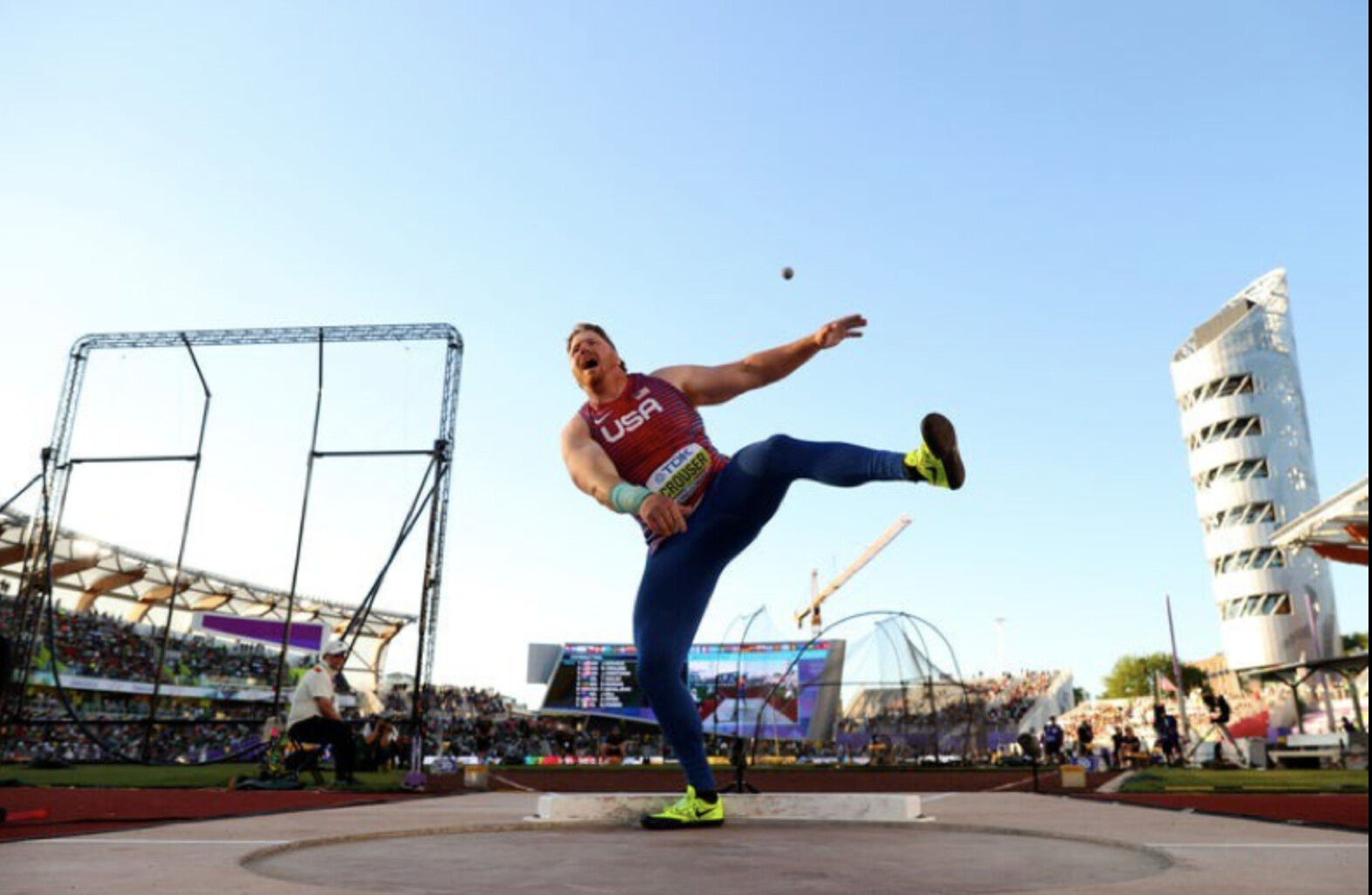
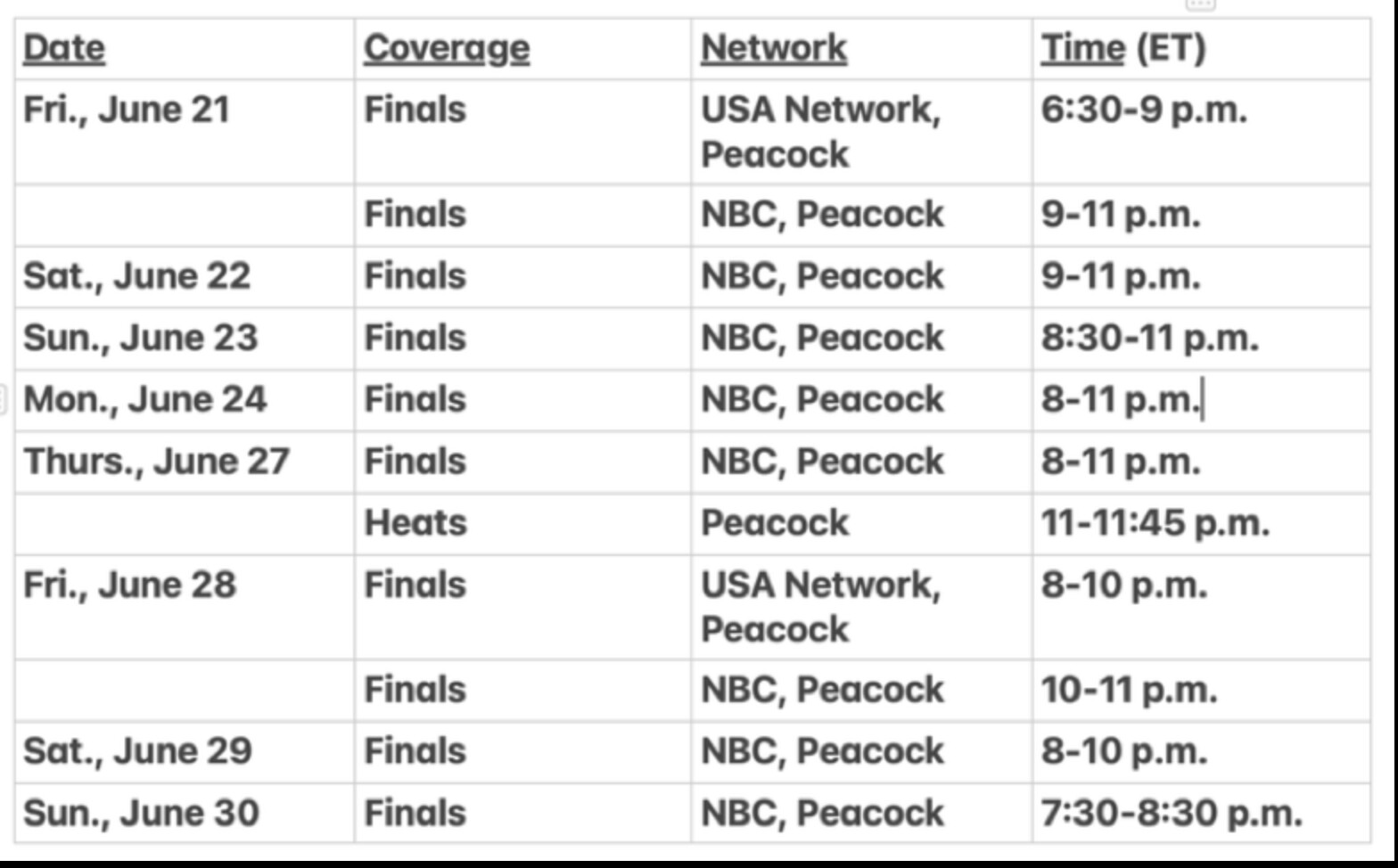
But for the highest echelon of athletes, the trials defines a make-or-break moment in their career. Only three Olympic team spots (in each gender) are available in each event, and given the U.S. depth in all facets of track and field—sprints, hurdles, throws, jumps, and distance running events—it’s considered the world’s hardest all-around team to make. How dominant is the U.S. in the world of track and field? It has led the track and field medal count at every Olympics since 1984.
At the trials, there are 20 total events for women and men—10 running events from 100 meters to 10,000 meters (including two hurdles races and the 3,000-meter steeplechase), four throwing events (discus, shot put, javelin, and hammer throw), four jumping events (long jump, triple jump, high jump, and pole vault), the quirky 20K race walking event, and, of course, the seven-event heptathlon (women) and the 10-event decathlon (men).
(At the Olympics, Team USA will also compete in men’s and women’s 4×100-meter and 4×400-meter relays, plus a mixed gender 4×400, and a mixed gender marathon race walk. The athletes competing on these teams will be drawn from those who qualify for Team USA in individual events, along with alternates who are the next-best finishers at the trials.
There’s also the Olympic marathon, but the U.S. Olympic Trials Marathon was held on February 3 in Orlando, Florida, to give the athletes enough time to recover from the demands of hammering 26.2 miles before the big dance in Paris.
Although some countries arbitrarily select their Olympic track and field teams, the U.S. system is equitable for those who show up at the Olympic Trials and compete against the country’s best athletes in each particular event. There’s just one shot for everyone, and if you finish among the top three in your event (and also have the proper Olympic qualifying marks or international rankings under your belt), you’ll earn the opportunity of a lifetime—no matter if you’re a medal contender or someone who burst onto the scene with a breakthrough performance.
The top performers in Eugene will likely be contenders for gold medals in Paris. The list of American stars is long and distinguished, but it has to start with sprinters Sha’Carri Richardson and Noah Lyles, who will be both competing in the coveted 100 and 200 meters. Each athlete won 100-meter titles at last summer’s world championships in Budapest and ran on the U.S. gold-medal 4×100 relays. (Lyles also won the 200) Each has been running fast so far this spring, but more importantly, each seems to have the speed, the skill, and swagger it takes to become an Olympic champion in the 100 and carry the title of the world’s fastest humans.
But first they have to qualify for Team USA at the Olympic Trials. Although Lyles is the top contender in the men’s 100 and second in the world with a 9.85-second season’s best, five other U.S. athletes have run sub-10-second efforts already this season. Richardson enters the meet No. 2 in the U.S. and No. 3 in the world in the women’s 100 (10.83), but eight other Americans have also broken 11 seconds. That will make the preliminary heats precariously exciting and the finals (women’s on June 22, men’s on June 23) must-see TV.
There are five returning individual Olympic gold medalists competing in the U.S. Olympic Trials with the hopes of repeating their medals in Paris—Athing Mu (800 meters), Sydney McLaughlin-Levrone (400-meter hurdles), Katie Moon (pole vault), Vallarie Allman (discus), and Ryan Crouser (shot put)—but there are more than a dozen other returning U.S. medalists from the Tokyo Olympics, as well as many more from the 2023 world championships, including gold medalists Chase Ealey (shot put), Grant Holloway (110-meter hurdles), Laulauga Tausaga (discus), and Crouser (shot put).
The most talented athlete entered in the Olympic Trials might be Anna Hall, the bronze and silver medalist in the seven-event heptathlon at the past two world championships. It’s an epic test of speed, strength, agility, and endurance. In the two-day event, Hall and about a dozen other women will compete in the 100-meter hurdles, high jump, shot put, 200 meters, long jump, javelin throw, and 800 meters, racking up points based on their performance in each event. The athletes with the top three cumulative totals will make the U.S. team. At just age 23, Hall is poised to contend for the gold in Paris, although Great Britain’s Katarina Johnson-Thompson, the world champion in 2019 and 2023, is also still in search of her first Olympic gold medal after injuries derailed her in 2016 and 2021.
If you can find your way to Eugene—and can afford the jacked-up hotel and Airbnb prices in town and nearby Springfield—you can watch it live in person at Hayward Field. Rebuilt in 2021, it’s one of the most advanced track and field facilities in the world, with an extremely fast track surface, a wind-blocking architectural design, and 12,650 seats that all offer great views and close-to-the-action ambiance. Tickets are still available for most days, ranging from $45 to $195.
If you can’t make it to Eugene, you can watch every moment of every event (including preliminary events) via TV broadcasts and livestreams. The U.S. Olympic Trials will be broadcast live and via tape delay with 11 total broadcast segments on NBC, USA Network, and Peacock. All finals will air live on NBC during primetime and the entirety of the meet will be streamed on Peacock, NBCOlympics.com, NBC.com and the NBC/NBC Sports apps.
The Olympic Trials will be replete with young, rising stars. For example, the men’s 1500 is expected to be one of the most hotly contested events and the top three contenders for the Olympic team are 25 and younger: Yared Nuguse, 25, the American record holder in the mile (3:43.97), Cole Hocker, 23, who was the 2020 Olympic Trials champion, and Hobbs Kessler, 21, who turned pro at 18 just before racing in the last Olympic Trials. Sprinter Erriyon Knighton, who turned pro at age 16 and ran in the Tokyo Olympics at age 17, is still only 20 and already has two world championships medals under his belt. Plus, the biggest track star from the last Olympics, Sydney McLaughlin-Levrone, is aiming for her third Olympics and third Olympic gold (she won the 400-meter hurdles and was on the winning 4×400 relay in Tokyo), and she’s only 24.
Several young collegiate stars could earn their place on the U.S. team heading to Paris after successful results in the just-completed NCAA championships. Leading the way are double-NCAA champions McKillenzie Long, 23, a University of Mississippi senior who enters the trials ranked sixth in the world in the 100 (10.91) and first in the 200 (21.83), and Parker Valby, a 21-year-old junior at the University of Florida, who ranks fifth in the U.S. in the 5,000 meters (14:52.18) and second in the 10,000 meters (30:50.43). Top men’s collegiate runners include 5,000-meter runner Nico Young (21, Northern Arizona University), 400-meter runner Johnnie Blockburger (21, USC), and 800-meter runners Shane Cohen (22, Virginia) and Sam Whitmarsh (21, Texas A&M).
It’s very likely. Elle St. Pierre is the top-ranked runner in both the 1500 and the 5,000, having run personal bests of 3:56.00 (the second-fastest time in U.S. history) and 14:34.12 (fifth-fastest on the U.S. list) this spring. Although she’s only 15 months postpartum after giving birth to son, Ivan, in March 2023, the 29-year-old St. Pierre is running better and faster than ever. In January, she broke the American indoor record in the mile (4:16.41) at the Millrose Games in New York City, then won the gold medal in the 3,000 meters at the indoor world championships in Glasgow in March.
St. Pierre could be joined by two world-class sprinters. Nia Ali, 35, the No. 2 ranked competitor in the 100-meter hurdles and the 2019 world champion, is a mother of 9-year-old son, Titus, and 7-year-old daughter, Yuri. Quanera Hayes, 32, the eighth-ranked runner in the 400 meters, is the mother to 5-year-old son, Demetrius. Hayes, a three-time 4×400 relay world champion, finished seventh in the 400 at the Tokyo Olympics.
Meanwhile, Kate Grace, a 2016 Olympian in the 800 meters who narrowly missed making Team USA for the Tokyo Olympics three years ago, is back running strong at age 35 after a two-year hiatus during which she suffered from a bout of long Covid and then took time off to give birth to her son, River, in March 2023.
No, unfortunately, there are a few top-tier athletes who are hurt and won’t be able to compete. That includes Courtney Frerichs (torn ACL), the silver medalist in the steeplechase at the Tokyo Olympics in 2021; Alicia Monson (torn medial meniscus), a 2020 Olympian in the 10,000 meters, the American record holder in the 5,000 and 10,000 meters, and the fifth-place finisher in the 5,000 at last year’s world championships; and Joe Klekcer (torn adductor muscle), who was 16th in the Tokyo Olympics and ninth in the 2022 world championships in the 10,000. Katelyn Tuohy, a four-time NCAA champion distance runner for North Carolina State who turned pro and signed with Adidas last winter, is also likely to miss the trials due to a lingering hamstring injury. There is also some doubt about the status of Athing Mu (hamstring), the Tokyo Olympics 800-meter champion, who has yet to race in 2024.
Meanwhile, Emma Coburn, a three-time Olympian, 2017 world champion, and 10-time U.S. champion in the 3,000-meter steeplechase, broke her ankle during her season-opening steeplechase in Shanghai on April 27. She underwent surgery a week later, and announced at the time that she would miss the trials, but has been progressing quickly through her recovery. If both she and Frerichs miss the meet, it will leave the door wide open for a new generation of steeplers—including 2020 Olympian Valerie Constein, who’s back in top form after tearing her ACL at a steeplechase in Doha and undergoing surgery last May.
The U.S. earned 41 medals in track and field at the 2020 Paralympic Games in Tokyo—including 10 gold medals—which ranked second behind China’s 51. This year’s Paralympics will follow the Olympics from August 28-September 8 in Paris.
The 2024 U.S. Paralympic Trials for track and field will be held from July 18-20 at the Ansin Sports Complex in Miramar, Florida, and Paralympic stars Nick Mayhugh, Brittni Mason, Breanna Clark, Ezra Frech, and Tatyana McFadden are all expected to compete.
In 2021 at the Tokyo Paralympics, Mayhugh set two new world records en route to winning the 100 meters (10.95) and 200 meters (21.91) in the T-37 category, and also took the silver medal in the 400 meters (50.26) and helped the U.S. win gold and set a world record in the mixed 4×100-meter relay (45.52). Clark returns to defend her Paralympic gold in the T-20 400 meters, while McFadden, a 20-time Paralympic medalist who also competed on the winning U.S. mixed relay, is expected to compete in the T-54 5,000 meters (bronze medal in 2021).
Livestream coverage of the U.S. Paralympic Trials for track and field will be available on Peacock, NBCOlympics.com, NBC.com, and the NBC/NBC Sports app, with TV coverage on CNBC on July 20 (live) and July 21 (tape-delayed).
Login to leave a comment
The TEN Preview: Nico Young Debuts, Alicia Monson Chases AR, and Karissa Schweizer Returns
Saturday night’s races at The TEN in San Juan Capistrano, Calif., will play a significant role in determining who gets to represent the United States in the 10,000 meters at this summer’s Olympics in Paris. The 2024 Olympic auto standards are incredibly tough — only three Americans have ever run under the 27:00.00 men’s standard and only five Americans have hit the 30:40.00 women’s standard — and you can count the number of world-class track 10,000-meter races each year on one hand. That’s why Grant Fisher, Nico Young, Woody Kincaid, Joe Klecker, Abdihamid Nur, Alicia Monson, Karissa Schweizer, Emily Infeld, Weini Kelati, and many more will be heading to SoCal Saturday night.
Since its first edition in 2021, The TEN has become the place for Americans to run a fast 10,000. Fisher set the men’s American record here in 2022 while Monson set the women’s American record here in 2023 and will be looking to repeat the feat in 2024.
To watch the main events, you’ll have to stay up late — the top heat of the women’s 10,000 does not start until 11:58 p.m. ET with the men to follow at 12:35 a.m. ET. Before then, we’ll get appetizer with the men’s 1500 (10:05 p.m. ET), which features Olympic medalists Matthew Centrowitz and Evan Jager kicking off their 2024 seasons.
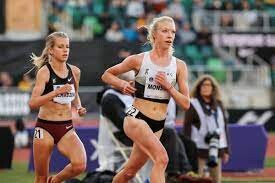
Matthew Centrowitz and Evan Jager have seen it all in running. They both graduated from high school in 2007 and made their first US teams as young guns — Jager as a 20-year-old in 2009, Centro at 21 in 2011. For much of the 2010s, they were among the very best in the world in their events, with Centro bringing home a gold medal from the 2016 Olympics and Jager a silver. Now Centro (34) and Jager (35) are the elder statesmen, trying to fend off a host of younger rivals and make one last Olympic team in Paris.
Both men will run their 2024 outdoor openers in the 1500 on Saturday (Centro did run a 3:59 indoor mile on January 27 while Jager ran the first 4k of a 5k in Boston on February 16 before dropping out). Which means it’s time for one of our favorite games: how fast (or slow) will Centro run?
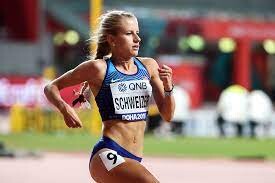
Throughout his career, Centrowitz has established himself as one of America’s greatest ever milers by delivering when it counts. He made every US team from 2011 through 2021 and won three outdoor medals as well as the 2016 World Indoor title. Yet in the latter years of his career, Centro thrown out some stinkers to begin his seasons before working his way into shape. In 2021, he opened with a 3:40 1500 on March 6 followed by a 1:50 800 on April 10 but ended the year running a 3:49 mile and making the Olympic team. Last year, he went to Australia and ran 1:56 for 800 on February 11 and 4:06 for the mile on February 23 but was running 3:36 for 1500 by May and eventually made the US final (though he only finished 10th).
So if Centro runs poorly here, it’s not cause for total panic. Heck, the fact that both he and Jager — who missed most of the 2023 campaign with a foot injury — are healthy enough to be racing is a promising sign. But the American 1500 scene is also more competitive than when Centro last made a team in 2021. Tactically, there is no better US racer than Centro, but he’s up against a group of young studs that includes three medalists from this year’s World Indoors (Yared Nuguse, Cole Hocker, Hobbs Kessler) and a trio of NCAA champions from the University of Washington (Luke Houser, Joe Waskom, Nathan Green). Nuguse is the oldest of that group at 24 — a full decade younger than Centro. Centrowitz is facing an uphill battle to make Olympic team #4 but if he can run 3:36 or 3:37 here and stay healthy for the next three months, he could still have a shot.
As far as the man most likely to win here, Sweden’s Samuel Pihlström ran 3:35 in February and just finished 8th at World Indoors.
Women’s 10,000 (11:58 p.m. ET): Alicia Monson tries to become the first US woman under 30:00 as Karissa Schweizer returns.
Unlike almost every other athlete in this meet, Alicia Monson already has the Olympic standard thanks to the 30:03 American record she ran here last year. So why is she back for another crack?
Monson laid it all out in an interview with LetsRun.com back in December:
Basically, it was just what can we do that would make me feel the most ready for the Olympics? And I feel like that’s running a sub-30:00 10k. I guess the plan would be to break the American record again, but really it’s how fast can I run to feel the most prepared? Because obviously I’m running against people who can run very fast and [I need to] be prepared to run at a pace that feels easy to them and then kick off of it.
Monson was still with the leaders at the bell at last year’s World Championships and her 5th-place finish was the best of her career in a global final. But she finished nearly four seconds out of the medals and the competition will be fierce in Paris. The last three global 10k champions — Sifan Hassan (29:06 pb), Letesenbet Gidey (29:01 pb), and Gudaf Tsegay (29:29 pb) — occupy three of the top four spots on the all-time 10,000m list. The slowest of them, Tsegay, still has a pb 34 seconds faster than Monson’s.
by Jonathan Gault
Login to leave a comment
The Ten
The world's fastest 10,000m races each year have taken place in a sleepy little coastal town in southern California. More national records were broken in 2022 than any other race on the planet as the best in the western hemisphere launched into rarified zones of time and space. The best return to San Juan Capistrano this year to cap off...
more...New Zealand’s Geordie Beamish shocks field for gold in men’s 1,500m final
Geordie Beamish of Hawke’s Bay, New Zealand, pulled off an incredible upset to take gold in the men’s 1,500m on the final day of competition at the 2024 World Indoor Championships in Glasgow.
Beamish was not expected to win, with the 1,500m not being his main event. However, he bided his time and entered the final lap in eighth place before surging down the final straight to become New Zealand’s first world indoor champion in the 1,500m event, clocking a personal best of 3:36.54.
“I trusted my closing speed against anyone,” said. Beamish to Canadian Running post-race.
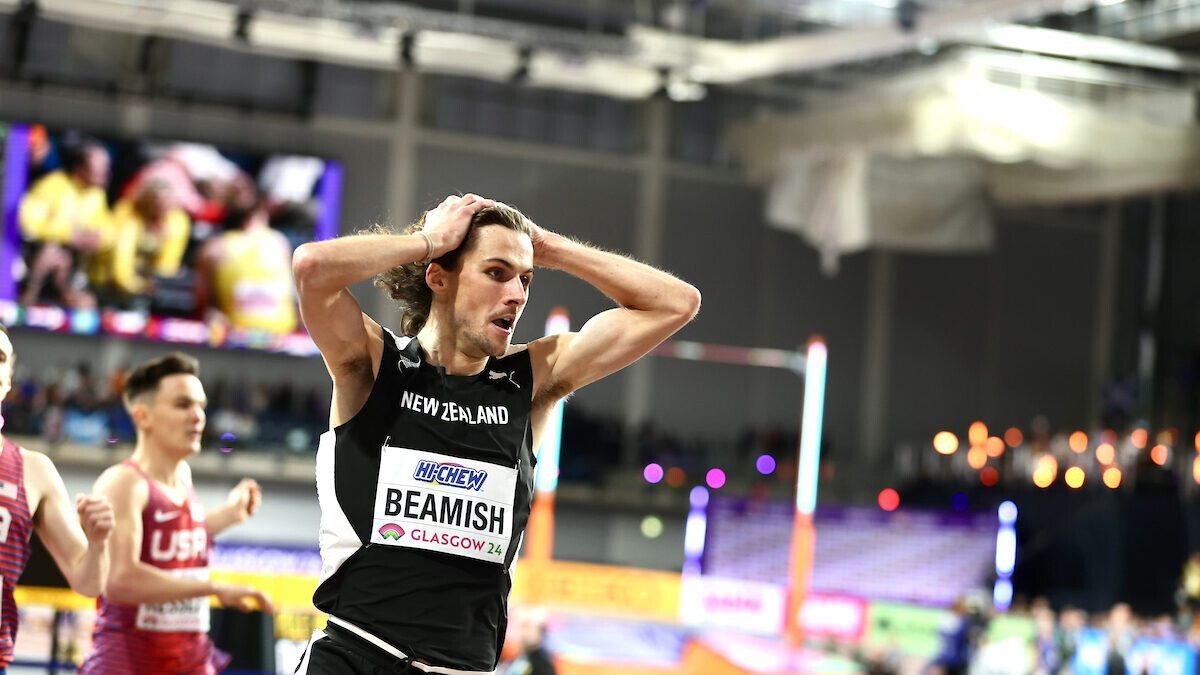
Cole Hocker and Hobbs Kessler of Team USA claimed silver and bronze, respectively, with times of 3:36.69 and 3:36.72.
The door was open for a new champion in the men’s 1,500m with the absence of Jakob Ingebrigtsen due to injury and reigning world (outdoor) champion Josh Kerr, who ran and won the 3,000m distance instead.
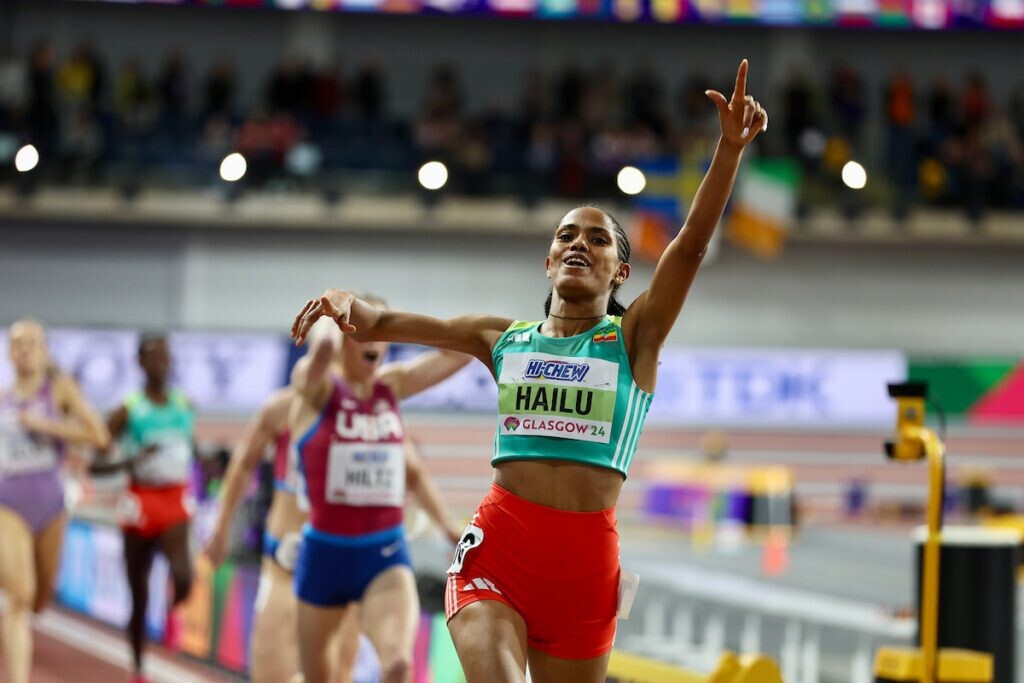
When asked if Beamish would run the 1,500m in Paris instead of the steeplechase, he declined. “I don’t think I can run a 1,500m in 3:29,” he said. “I enjoy the steeple a lot, and I think I have my best chance to medal in that event.”
Vancouver’s Kieran Lumb finished 13th in the 1,500m final. “I’m disappointed,” says Lumb. “I felt I was going to really do something special today, and that wasn’t the case.”
Beamish’s medal capped off a day to remember for New Zealand after Hamish Kerr earlier won gold in the high jump. The small Oceanic island nation finished with four medals (two gold, two silver), their most ever at an indoor world championship.
In the women’s 1,500m final, it was Ethiopia’s Freweyni Hailu who came out on top in a time of 4:01.46. This is Hailu’s first global title. Her best finish before Glasgow was a fourth-place finish at the Tokyo Olympics in the same event. Americans Nikki Hiltz and Emily MacKay ran personal bests to win silver and bronze. Canada’s Lucia Stafford finished 11th in 4:08.90.
by Marley Dickinson
Login to leave a comment
World Athletics Indoor Championships
World-Class Competition Lands in China: 2025 World Athletics Championships The global spotlight shines on China as it hosts the 2025 World Athletics Championships, bringing together the planet’s most elite runners, jumpers, and throwers. This prestigious event, organized by World Athletics, represents the pinnacle of track and field competition—where national pride, personal records, and world titles are on the line. ...
more...Global champions Holloway, Moon and Lyles feature on USA's team for WIC Glasgow 24
The United States has named a team of 57 athletes for the World Athletics Indoor Championships Glasgow 24 on March 1-3.
World and Olympic champions Ryan Crouser and Katie Moon head the men’s and women’s entries respectively. They will be joined by world champions Noah Lyles, Grant Holloway and Chase Jackson (nee Ealey).
Sandi Morris will defend her world indoor pole vault title, while world leaders Tara Davis-Woodhall, Yared Nuguse and Shelby McEwen also feature on the team.
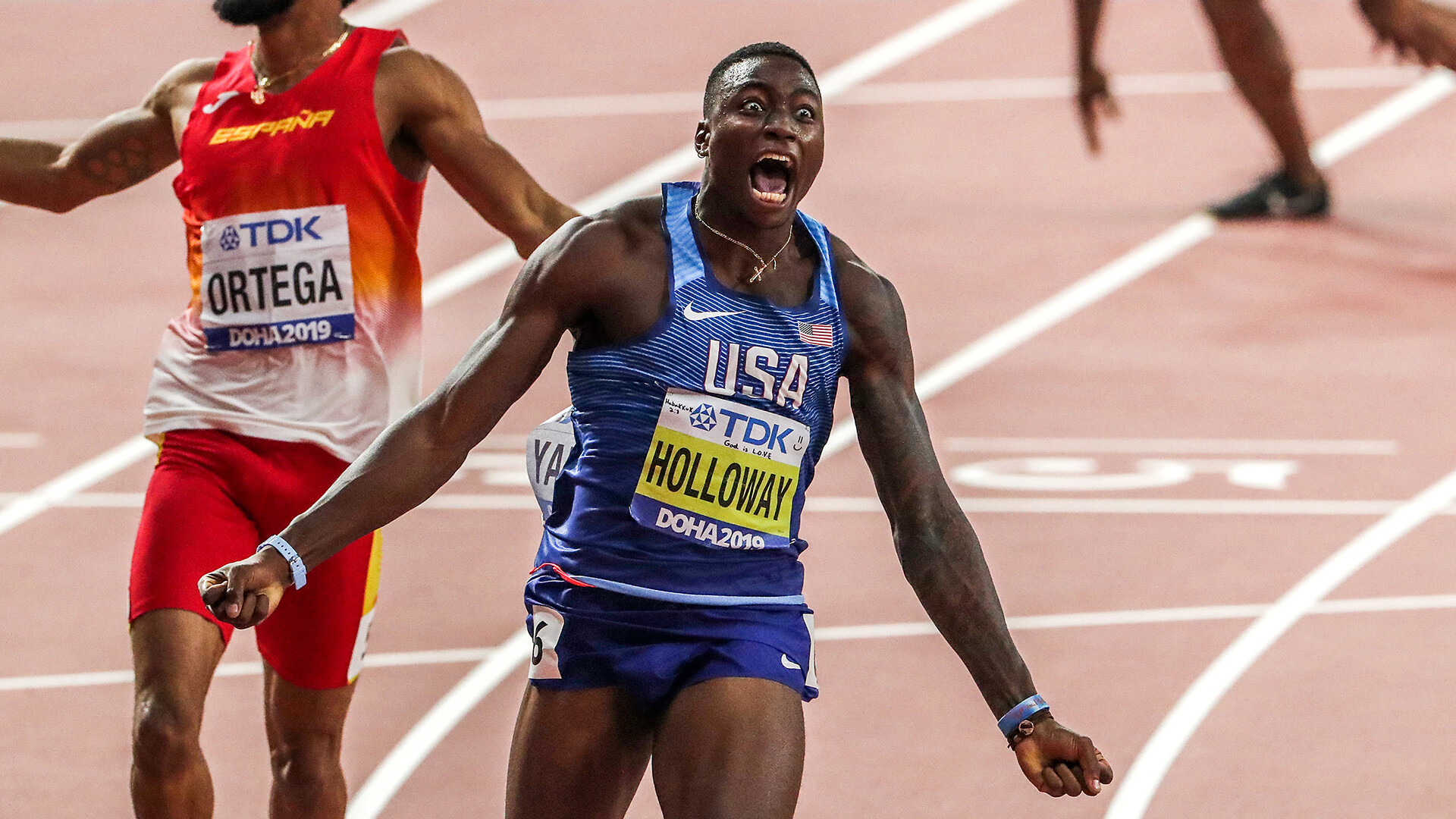
US team for Glasgow
Women
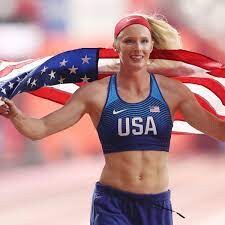
60m: Celera Barnes, Mikiah Brisco, Aleia Hobbs
400m: Talitha Diggs, Alexis Holmes
800m: Addison Wiley, Allie Wilson
1500: Nikki Hiltz, Emily Mackay
3000m: Josette Andrews, Elle St Pierre
60m hurdles: Christina Clemons, Masai Russell
High jump: Vashti Cunningham
Pole vault: Katie Moon, Sandi Morris
Long jump: Tara Davis-Woodhall, Monae' Nichols
Triple jump: Jasmine Moore, Keturah Orji
Shot put: Maggie Ewen, Chase Jackson
Pentathlon: Chari Hawkins
4x400m: Quanera Hayes, Bailey Lear, Na'Asha Robinson, Maya Singletary, Jessica Wright
Men
60m: Christian Coleman, Noah Lyles
400m: Brian Faust, Jacory Patterson
800m: Isaiah Harris, Bryce Hoppel
1500m: Cole Hocker, Hobbs Kessler
300m: Olin Hacker, Yared Nuguse
60m hurdles: Trey Cunningham, Grant Holloway, Cameron Murray
High jump: Shelby McEwen, Vernon Turner
Pole vault: Sam Kendricks, Chris Nilsen
Long jump: Jarrion Lawson, Will Williams
Triple jump: Chris Benard, Donald Scott
Shot put: Ryan Crouser, Roger Steen
Heptathlon: Harrison Williams
4x400m: Chris Bailey, Trevor Bassitt, Matthew Boling, Paul Dedewo, Wil London
by World Athletics
Login to leave a comment
World Athletics Indoor Championships
World-Class Competition Lands in China: 2025 World Athletics Championships The global spotlight shines on China as it hosts the 2025 World Athletics Championships, bringing together the planet’s most elite runners, jumpers, and throwers. This prestigious event, organized by World Athletics, represents the pinnacle of track and field competition—where national pride, personal records, and world titles are on the line. ...
more...Josh Kerr puts Jakob Ingebrigtsen's beef aside as he focuses on next assignment
Scottish middle-distance runner Josh Kerr is not focusing on Jakob Ingebrigtsen's comments about him as he is eyeing another major assignment where he will attempt to attack the two-mile world record.
Reigning World 1500m champion Josh Kerr is not focusing on track rival Jakob Ingebrigtsen’s sentiments as he gears up for the Millrose Games on Sunday, February 11.
Kerr and Ingebrigtsen started their beef last year after the World Championships in Budapest, Hungary where the Scottish man bet the Norwegian to second place in the 1500m.
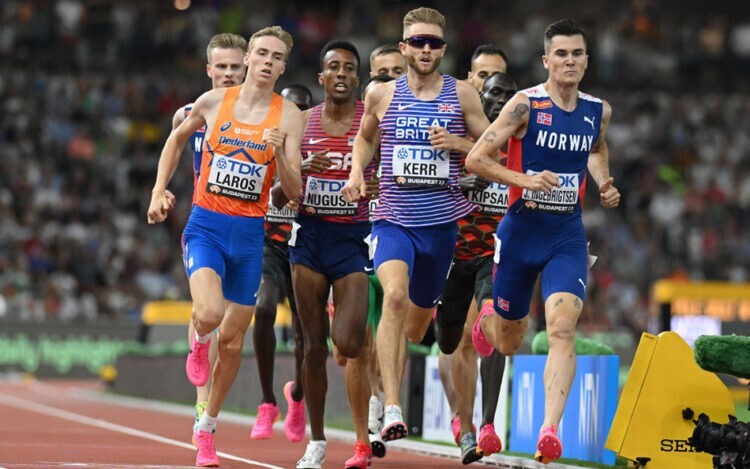
Kerr then rekindled the beef saying that Ingebrigtsen has a lot to work on when it comes to his manners on and off the track.
The Scot emphasised that the Norwegian has a “high ego” and is used to being surrounded by “yes men”, making it difficult for him to understand that there is a difference between respect and antipathy.

The reigning World 5000m champion, Ingebrigtsen has been out of competition due to an injury and he just made a comeback to the limelight announcing that he is expecting a child with his wife.
As per Letsrun.com, Ingebrigtsen also addressed Kerr, noting that he thinks the latter is just looking for attention ahead of the Olympic Games in Paris, France.
He said: “I realized that there was “something,” but I can’t quite say what it was. Let’s call it a desperate attempt. And I don’t think that was so smart. It might look silly at some point.”
However, Kerr seems unshaken by his sentiments and he is firmly eyeing his next assignment where he intends to make history.
He will tackle the two miles with Mo Farah’s world record of 8:03.40 in his sights. Kerr will be up against US 5000m and 10,000m record-holder Grant Fisher and Olympic 1500m sixth-placer Cole Hocker, New Zealander Geordie Beamish, and former US 1500m champion Cooper Teare.
“In February, I’m still coming off really high base training and I still want to be toward 5000m at that time of year. A two-mile just fits in perfectly where it is a bit speedier, but it’s not the mile,” he said as per Athletics Weekly.
by Abigael Wuafula
Login to leave a comment
NYRR Millrose Games
The Pinnacle of Indoor Track & Field The NYRR Millrose Games, first held in 1908, remains the premier indoor track and field competition in the United States. The 2025 edition will once again bring the world’s top professional, collegiate, and high school athletes to New York City for a day of thrilling competition. Hosted at the New Balance Track &...
more...Cooper Teare And Weini Kelati Win 2024 USATF Cross Country Titles
Weini Kelati and Cooper Teare earned convincing victories at the 2024 USATF Cross Country Championships, held on Saturday at Pole Green Park in Mechanicsville, Va. Running just six days after setting an American record in the half marathon in Houston, Kelati took off just after 4k and destroyed the field, running 32:58.6 for the 10k course to win by 37.3 seconds — the largest margin of victory since Aliphine Tuliamuk‘s 48.2 in 2017.
Teare took a different approach, staying patient as former University of Colorado runner turned Olympic triathlete Morgan Pearson pushed the pace during the second half of the race. Teare was the only one to go with Pearson’s move at 8k and made a strong move of his own at 9k that allowed him to cruise to victory in 29:06.5. 2020 champion Anthony Rotich of the US Army was 2nd in 29:11.6 as Pearson hung on for 4th. Teare’s training partner Cole Hocker was 12th in 29:52.3.
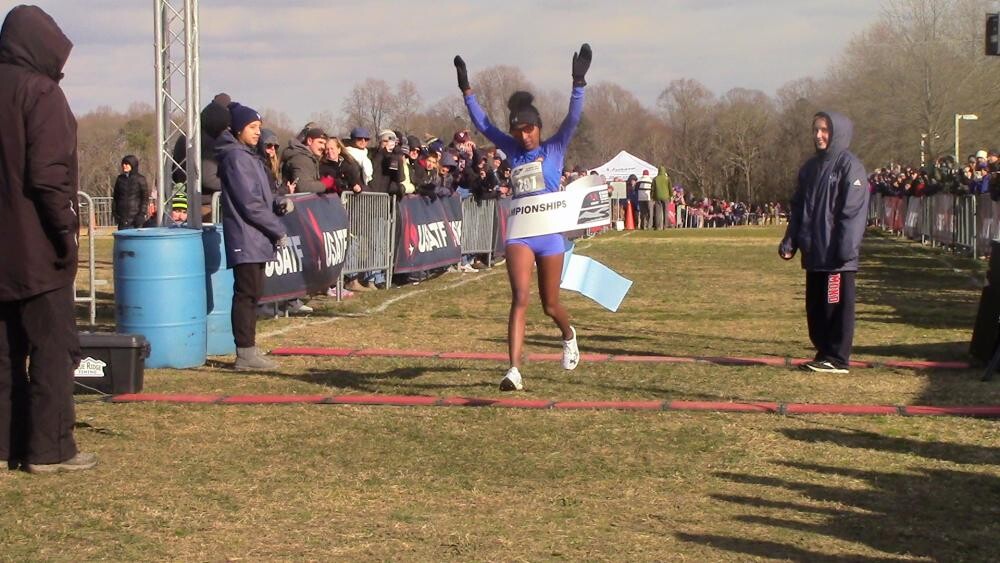
The top six finishers in each raced earned the right to represent Team USA at the World Cross Country Championships in Belgrade, Serbia, on March 30. Kelati’s coach/agent Stephen Haas told LetsRun last week that Kelati plans to run there while Teare’s agent Isaya Okwiya said Teare’s plans are still TBD.
High school junior Zariel Macchia of Shirley, N.Y., won the women’s U20 race in 20:31.0 for the 6k course; Macchia previously won the title as a freshman in 2022. Notre Dame freshman Kevin Sanchez won the men’s U20 title in 24:07.1 for the 8k course.
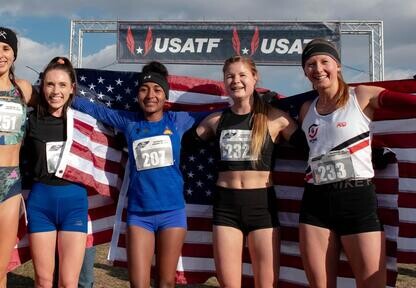
Cooper Teare shows his range with impressive victory
Teare was the 2021 NCAA 5,000m champion at the University of Oregon and has shown that his range extends both up and down the distance spectrum. Teare is the NCAA mile record holder at 3:50.39 and was the 2022 US champion at 1500 and now he is the US cross country champion. That sort of range has become increasingly common on the international level but in the US, it’s rare for a 1500 guy to run USA XC, let alone win it. Teare is the first man to win US titles at both 1500 meters and cross country since John Mason in 1968, and even that comes with a caveat as the US championships were separate from the Olympic Trials back then. Before Mason, the last guy to win both was Abel Kiviat (cross country in 1913, US mile title in 1914). You all remember him.
On the women’s side, Shelby Houlihan, since banned for a doping violation, won USA XC and the US 1500 title back in 2019.
Teare’s coach Ben Thomas told Carrie Tollefson, who was calling the race for USATF.TV, that the aim of this race was just to see where his fitness was at against a top field. Clearly, it’s very good. In his first race since leaving the Bowerman Track Club after the 2023 season, Teare, wearing a bright pink undershirt beneath his Nike singlet, ran with the lead pack until Morgan Pearson began to string things out just before entering the final 2k loop. As opposed to Pearson, who was giving it all he could to drop the field, Teare looked relaxed and in control, and at 9k he eased past Pearson into the lead before dropping the hammer to win comfortably. It was a smart run and an impressive display of fitness.
Teare may also have slayed some demons from his last cross country race in 2021, when he crawled across the finish line in the final meters. Now he’s gone from 247th at NCAA XC to a national champion.
Teare’s plans for the rest of the winter are up in the air. He will run in a stacked 2-mile at Millrose on February 11 against the likes of Grant Fisher and Josh Kerr before competing at USA Indoors a week later. World Indoors could be an option if he makes the team — as could World XC, if he wants it. No matter what he chooses, Saturday’s run was a great way for Teare to kick off the Olympic year.
Weini Kelati demolishes the competition
On paper, Kelati, who runs for Under Armour’s Dark Sky Distance team in Flagstaff, was the class of this field. The only question was whether she would be recovered from racing hard at last weekend’s Houston Half Marathon, where she set the American record of 66:25. The answer was a definitive “yes” as Kelati, after running with the leaders for the first 4k, dropped a 3:05 5th kilometer to break open the field. From there, her lead would only grow to the finish line as she won by a massive 37.3 seconds over runner-up Emma Hurley.
Kelati was not at her best heading into last year’s World XC in Australia as she had missed some time in the buildup due to injury. She still managed to finish a respectable 21st overall. Her aims will be much higher for this year’s edition in Belgrade.
Kelati also made some history with her win today. She’s the first woman to win Foot Locker, NCAA, and USA cross country titles.
by Jonathan Gault
Login to leave a comment
USATF Cross Country Championships
About USATF Based in Indianapolis, USA Track & Field (USATF) is the National Governing Body for track and field, long distance running, and race walking in the United States. USATF encompasses the world's oldest organized sports, the most-watched events of Olympic broadcasts, the number one high school and junior high school participatory sport, and more than 30 million adult runners...
more...Hobbs Kessler set the record for the fastest 1500-meter run by an American on U.S. soil as he finished third overall with a time of 3:32.61
Hobbs Kessler has already broken records left and right in his running career and the Ann Arbor native added to that growing list with an eye-popping performance at the Los Angeles Grand Prix on Saturday.
The 20-year-old phenom set the record for the fastest 1500-meter run by an American on U.S. soil as he finished third overall with a time of 3:32.61.
Kessler finished just behind former world champion Timothy Cheruiyot, who won the race at 3:31.47, and U20 world champion Reynold Kipkorir Cheruiyot, who took second in 3:32.01.
He ran a 55.83 in his final lap to past U.S. champion Cooper Teare, who also ran a personal best time of 3:32.74.
Kessler’s finish was the 13th fastest all-time for an American runner and his time is the second best by a U.S. male runner under the age of 21 as Cole Hocker ran 3:31.40 at the 2021 Olympics.
It was a personal best time for Kessler but yet another memorable performance by the former Ann Arbor Skyline standout.
He holds the North American U20 record in the 1500 at 3:34.36 as well as the U.S. high school record in the for the indoor mile with a time of 3:57.66 and was named the Gatorade National Track and Field Athlete of the Year for 2021.
Kessler signed a contract with Adidas and turned professional in 2021. He also won the Boston Athletic Association Invitational Mile in April.
Login to leave a comment
Giants of track and field prepare for battle at Millrose Games
print showdowns, the world’s greatest shot putters and magnificent mile fields highlight the Millrose Games, this season’s fourth World Athletics Indoor Tour Gold meeting, in New York on Saturday (11).
Fresh off a PB and 60m win in Boston, world 200m champion Noah Lyles takes on 60m world record holder and defending Millrose champion Christian Coleman at The Armory, which boasts the nickname ‘The Fastest Track in the World’.
Shot putters Ryan Crouser and Joe Kovacs open their 2023 campaigns by resuming their fierce rivalry, essentially picking up where they left off last September in Switzerland. As the women’s shot returns to Millrose for the first time since 2003, the event couldn’t ask for a better field led by Chase Ealey, the world champion and world indoor silver medallist.

According to tradition, the Rudin Wanamaker Miles cap the storied meeting, which was founded in 1908. A national record might be needed to win the men’s race, but which country will take the honours? Defending champion Ollie Hoare of Australia, USA’s Yared Nuguse, Sam Tanner of New Zealand and Mario Garcia Romo of Spain are top contenders. Great Britain’s Olympic and world medallist Laura Muir is the favourite in the women’s mile, having already claimed a New York record on the road.
Straight down the middle
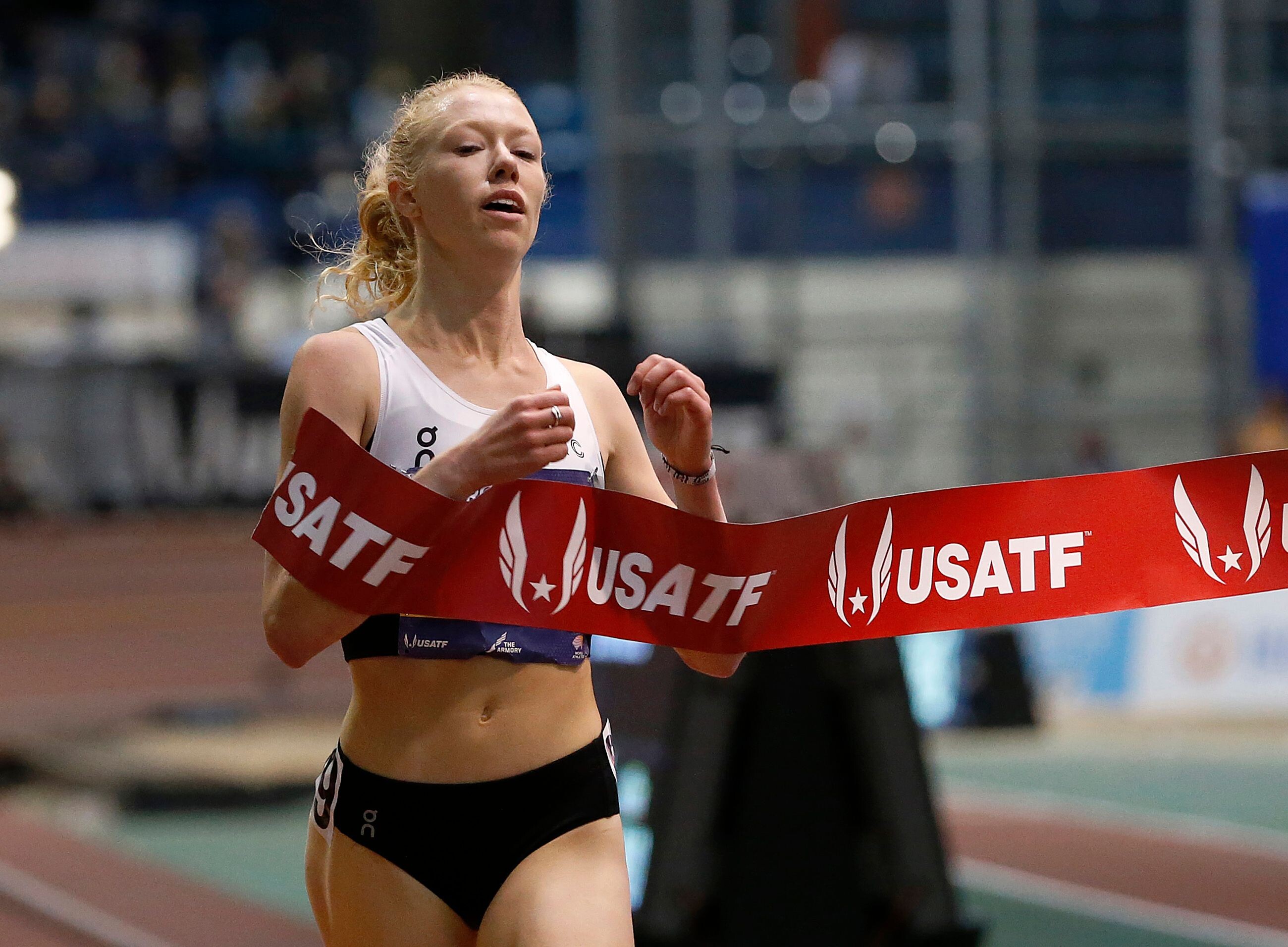
Although The Armory is far from the neon lights of Times Square, it’s still a hop, step and a jump from Broadway – and perhaps no athlete enjoys putting on a show more than Lyles.
At the New Balance Indoor Grand Prix Boston, he posted a PB of 6.51, edging Trayvon Bromell by .002. Coleman clocked 6.71 in Fayetteville two weeks ago to open his season, well off his world record of 6.34 set in 2018 when he was also world indoor champion. Lyles, the Olympic 200m bronze medallist, has been working on his start in a bid to double in the 100m and 200m at the World Athletics Championships later this year in Budapest.
Lyles will also attempt to avenge an early season loss to his younger brother Josephus in Florida. Ronnie Baker, the third-fastest 60m runner in history and 2018 world indoor bronze medallist, won this event in 2018 and 2020. Ackeem Blake of Jamaica, Miles Lewis, the Puerto Rican record-holder, and Kendal Williams, who defeated Lyles in Florida but lost to him in Boston, are also in the field.
Aleia Hobbs is seeking her second straight win in the women’s 60m after exploding to a meeting record 7.02 in Boston. She also owns the world-leading time of 6.98, run in Fayetteville in late January. In Boston, Hobbs held off world indoor silver medallist Mikiah Brisco and Celera Barnes, who get another chance to defeat her at Millrose.
Melissa Jefferson, who edged Hobbs in the 100m at last year’s USA Championships; world indoor bronze medallist Marybeth Sant-Price, and English Gardner are also in the field. Shawnti Jackson was third at Millrose last year, setting a national high school record of 7.18, and will look to improve both her placement and her time.
Olympic silver medallist Keni Harrison, the Millrose 60m hurdles winner in 2020, will take on 2019 world champion Nia Ali, heptathlete Anna Hall, and Olympians Anna Cockrell, Devynne Charlton and Cindy Sember.
Ring rivalry renewed
The road to Budapest begins for the top shot putters on the planet. World and Olympic champion Crouser will face Kovacs, a double outdoor world champion and two-time Olympic silver medallist.
While Crouser has won at Millrose three years in a row and holds both the indoor and outdoor world records, he knows his compatriot is always in the hunt to topple him. Kovacs set the world-leading mark in 2022 while moving to second on the all-time list and winning the Diamond league final in Zurich. At the season-ending meeting for both, Kovacs won at Bellinzona with a toss of 22.19m, with Crouser next at 22.00m. Tripp Piperi and Nick Ponzio of Italy round out the field.
Ealey had a dream season in 2022, building on her world indoor silver to take the world title in Oregon and then capture the Diamond League title. Compatriots Maggie Ewen, the 2021 Diamond League champion, and Jessica Woodard will challenge Ealey for the first Millrose crown in 20 years, along with Canada’s Commonwealth champion Sarah Mitton.
The women’s pole vault features Katie Moon (formerly Nageotte) and Katerina Stefanidi, the last two Olympic gold medallists. However, in their previous meeting, the Greek vaulter was third and the Tokyo champion placed fourth in Boston, with Bridget Williams and Gabriela Leon going 1-2. All four athletes will be on the runway at Millrose.
Steiner seeks another record
The rarely run 300m has become something of a specialty for USA’s Abby Steiner. She already holds the NCAA record and is targeting the national record of 35.71 in her first indoor season as a professional. Two weekends ago, Steiner raced to a 400m victory in Fayetteville in 50.59. The world record of 35.45 is shared by Irina Privalova and Shaunae Miller-Uibo, with the Bahamian clocking her winning time in 2018 at Millrose. Jenna Prandini, Steiner’s teammate on the victorious 4x100m relay in Oregon, and 2019 world 200m silver medallist Brittany Brown offer strong competition.
The men’s 400m could be another duel between USA’s Noah Williams and Trinidad & Tobago’s world indoor champion Jereem Richards. In Boston, both clocked 45.88, but Williams surged on the inside to win by .004. Michael Cherry, fourth in the 400m in Tokyo and an Olympic and world gold medallist at 4x400m, opens his season at Millrose, along with the fourth man in the field, Bryce Deadmon, another Olympic and world gold medallist on relays.
Going the distance
The great Paavo Nurmi raced at the Millrose Games nearly 100 years ago and the distance races never disappoint. Of course, the signature event is the Rudin Wanamaker Mile.
After recently setting a North American indoor record over 3000m, Yared Nuguse is in a New York state of mind to break another continental record: Bernard Lagat’s 3:49.89 in the indoor mile. Nuguse and training partners Hoare and Romo are hoping for a fast pace to propel them into the record books. Hoare set an Oceanian record of 3:50.83 in winning the 2022 Wanamaker Mile and is the Commonwealth 1500m champion. Other contenders include Tanner, a three-time New Zealand champion; Great Britain’s Neil Gourley, whose home straight sprint led to a world-leading 3:52.84 in Boston; 2022 US indoor 1500m champion Cole Hocker, Johnny Gregorek, Sam Prakel and Kenya’s Eliud Kipsang.
Muir had a US indoor race debut in Boston, clocking 8:40.34 in the 3000m, and now is dropping back down to more familiar territory. The world and Olympic medallist in the 1500m set a course record of 4:14.8 on the road in the Fifth Avenue Mile in 2022. At Millrose, the record is 4:16.85, set by Elle Purrier St Pierre in 2020, which is the third-fastest indoor mile in history after Gudaf Tsegay’s 4:16.16 in Torun. In a deep field, Muir will be challenged by training partner and Olympic 800m finalist Jemma Reekie, and US champion Sinclaire Johnson.
In the men’s 3000m, Geordie Beamish and Cooper Teare, who went 1-2 last year, return to the Armory track where they will try to fend off Josh Kerr, the Olympic 1500m bronze medallist; Joe Klecker, Guatemala’s Luis Grijalva and Nico Young.
Alicia Monson, defending Millrose champion in the women’s 3000m, faces national indoor 5000m record-holder Elise Cranny with Karissa Schweizer’s national indoor 3000m record of 8:25.70 in their sights. Monson set a Millrose Games and Armory record last year of 8:31.62 en route to a stellar outdoor season. Katelyn Tuohy recently set an NCAA mile record of 4:24.26 in a race won by Monson; she’s primed for another test against the pros. European champion and 2019 world bronze medallist Konstanze Klosterhalfen won the Wanamaker mile in 2019 and has the fastest 3000m time in the field, clocking 8:20.07 outdoors.
Streaks at stake for Wilson
In the 600m, world indoor 800m champion Ajee’ Wilson will attempt to extend some impressive winning streaks.
Since losing to Alysia Montano in the 600m at the 2013 Millrose Games, she has won 17 straight races at The Armory, including seven at Millrose. She also has won 15 straight races indoors, most recently the 800m in Boston with a time of 2:00.45. Wilson is the second-fastest woman in history in the 600m outdoors and could threaten Keely Hodgkinson’s newly minted world indoor best of 1:23.41. The fastest performer in the field this season Shamier Little, the 2015 world silver medallist in the 400m hurdles, who clocked 1:24.65.
The men’s 800m will be a rematch between world indoor silver medallist Noah Kibet, still just 18 years of age, and world indoor bronze medallist Bryce Hoppel, the defending Millrose champion. The loaded field includes his compatriots Clayton Murphy, the 2016 Olympic bronze medallist, world indoor finalist Isaiah Harris, Great Britain’s Kyle Langford, Mexico’s Tonatiu Lopez and Irish record-holder Mark English. Cade Flatt, the second-fastest US high school runner at this distance, is also in the field.
by World Athletics
Login to leave a comment
NYRR Millrose Games
The Pinnacle of Indoor Track & Field The NYRR Millrose Games, first held in 1908, remains the premier indoor track and field competition in the United States. The 2025 edition will once again bring the world’s top professional, collegiate, and high school athletes to New York City for a day of thrilling competition. Hosted at the New Balance Track &...
more...Ollie Hoare to defend Wanamaker mile title at Millrose Games
Organizers of the Millrose Games have announced that Ollie Hoare will defend his Wanamaker Mile title at the World Athletics Indoor Tour Gold meeting in New York on February 11.

Hoare, the Commonwealth 1500m champion, won last year’s Wanamaker mile in an Oceanian indoor record of 3:50.83.

“I’m thrilled to be able to come back and defend my Wanamaker title,” said the Australian. “It will be great to be out there competing at one of my favorite mile races in the world.”
He will take on a field that includes 2021 US 1500m champion and Olympic finalist Cole Hocker, European bronze medalist Mario Garcia Romo of Spain, US Olympian Yared Nuguse, NCAA record-holder Eliud Kipsang of Kenya, 2017 world finalist Johnny Gregorek, three-time New Zealand champion Sam Tanner, world indoor and outdoor finalist Neil Gourley, as well as USA’s Josh Thompson, Sam Prakel and Drew Hunter.
by World Athletics
Login to leave a comment
NYRR Millrose Games
The Pinnacle of Indoor Track & Field The NYRR Millrose Games, first held in 1908, remains the premier indoor track and field competition in the United States. The 2025 edition will once again bring the world’s top professional, collegiate, and high school athletes to New York City for a day of thrilling competition. Hosted at the New Balance Track &...
more...Five high school boys have combined to break the four-minute barrier seven times in 2022 and no one has enjoyed it more than Jim Ryun
Jim Ryun was the first high school boy to break the four-minute barrier in the mile as a Kansas 17-year-old in 1964 and went on to a legendary track and field career that included three Olympic appearances in the 1,500m, a silver medal in the 1968 Mexico City Olympics, and numerous American and world records.
Ryun’s name always surfaces when a high schooler dips under 4 minutes in the mile. And in 2022, his name has been coming up a lot.
Ryun’s career was also in the spotlight earlier this month when he was one of 30 former college track and field athletes inducted into the inaugural class of the USTFCCCA’s Athlete Hall of Fame in conjunction with the NCAA Championships in Eugene, Ore.
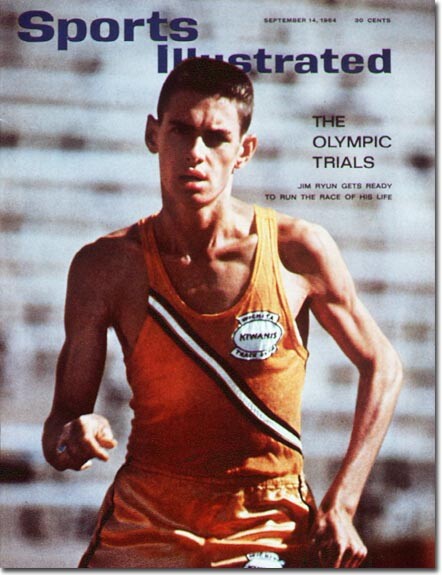
The original 4-minute high school barrier breaker celebrates the resurgence of American high school distance running and says for too long runners were held back in fear of what would happen if they ran under 4 minutes for the mile.
“I think they realize it’s not a barrier that can’t be broken, it’s more of a matter that if you break it,” Ryun said, “will you go on from there, which you can because we’re seeing more and more of them that are doing that.
“It’s not the barrier that it once was, should never have been there. For a long time, there were three of us. Myself, Marty Liquori and Tim Danielson. We were the only (sub) 4-minute milers from high school for years and I think it was the result of people being afraid of that, and coaches saying if you run too fast, too soon you’ll never make it very far.”
Growing up, Ryun often wondered if he would ever be successful in an athletic endeavor. He tried basketball and football and was cut from his church baseball team. At a high school assembly, Bob Timmons, the school’s track and field and cross country coach, encouraged students to run on his cross country team in the fall.
Ryun had never run more than one lap around a track before joining the cross country team, but in one season at Wichita East High School, he went from the last runner on the third-string team to a sixth-place finish at the Kansas state meet.
“Running was so new to me, I didn’t know who the heroes were,” Ryun recalled. “In fact, my first thought was I wanted to be a baseball, football, basketball player. Running, what’s that? So, it took a while. The first book Coach Timmons gave to me was about Emil Zatopek, the great Olympian, so I read that, and it began helping me understand about the sport.”
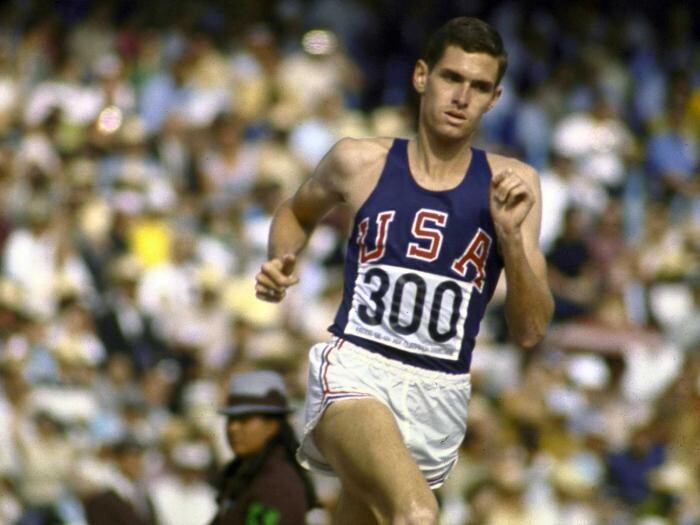
Ryun said Timmons was convinced he could be the first high school runner to break 4 minutes in the mile. That came true on June 5, 1964, when Ryun ran 3 minutes, 59.0 seconds to finish eighth at the Compton Invitational in Los Angeles.
“The goal originally was my coach’s because I was the kid that got cut from the church baseball team, didn’t have great talent and when I started running, I was looking for direction,” Ryun said. "And he began basically teaching me about goals, how to reach goals, and gave me workouts to get there. The night that I ran 4 minutes, 3:59.0, I didn’t sleep that night (before) because I realized that it was his goal.
“But my thought was, what happens if I take ownership, ownership being there’s certain things you as an athlete know you could do like maybe a little extra weightlifting, better eating. It was a transformational moment, because I mean when you finish eighth in a race and become the first kid to run under 4 minutes, that has to change your life – and it did.”
Ryun’s running career took off from there. He made the 1964 U.S. Olympic team in the 1,500m that went to Tokyo and was the last U.S. high school men’s track and field athlete to make the U.S. Olympic team until teenager Erriyon Knighton qualified for the 2020 Tokyo Olympics in the 200m and finished fourth there.
As a high school senior, Ryun broke 4 minutes four more times. His time of 3:58.3 at the 1965 Kansas state meet was the first time 4 minutes was broken in a high school-only meet. On June 4, 1965, Ryun returned to the Compton Relays, the site of his first sub-4-minute mile and ran 3:56.8. A little over three weeks later, he ran 3:55.3 at the U.S. AAU Championships in San Diego and beat New Zealand’s Peter Snell, the 1964 Olympic champion in the 800m and 1,500m.
Ryun, who would stay close to home and attend Kansas University after graduating from high school in 1965, roomed with a former Jayhawks great, Billy Mills, during U.S. training camps leading up to the 1964 Olympics. In Tokyo, Mills stunned the world by becoming the only U.S. athlete to ever win the Olympic 10,000m.
In 1966, Tim Danielson became the second American high schooler to break 4 minutes when he ran 3:59.4. A year later, Marty Liquori ran 3:59.8 to become the third high schooler under 4 minutes.
Ryun and Liquori had illustrious careers after high school, particularly Ryun. At age 19 in 1966, Ryun set two world records, first in the 800m (1:44.9), and then the mile (3:51.3). He was the NCAA indoor mile champion for Kansas in 1967, 1968 and 1969, and the 1967 outdoor NCAA mile champion. In 1967, he set a 1,500m world record of 3:33.1 that stood for seven years.
That same year, he lowered his mile world record to 3:51.1., a mark that stood for almost eight years. Ryun was the last American man to hold the mile world record. He still holds American junior records for the mile (3:51.3) and 2-mile (8:25.1), and his 800m American junior record of 1:44.9 stood for exactly 50 years.
In 2003, ESPN.com ranked Ryun as the greatest U.S. high school athlete of the 20th century, ahead of Tiger Woods, LeBron James, Lew Alcindor (now Kareem Abdul-Jabbar), Wilt Chamberlain, Marion Jones, and others.
After Ryun, Danielson, and Liquori, the 4-minute mile wasn’t broken by a prep athlete again for more than 32 years until Alan Webb ran 3:59.86 at the New Balance Games in New York on Jan. 20, 2001. Sensing something special in Webb, the promoters of the Prefontaine Classic in Eugene, Ore., invited him to run in the Bowerman Mile, the signature event of the meet that has since become a Diamond League event, on May 27, 2001.
Morocco’s Hicham El Guerrouj, still the world record-holder in the 1,500m and mile, won the event in 3:49.92, followed by Kevin Sullivan of Canada and Bernard Lagat, then of Kenya, who later ran for the U.S. They helped pull Webb to a fifth-place finish in 3:53.43, breaking Ryun’s 36-year-old high school record.
“I thought he would. I just didn’t know how much he would break it by," Ryun said. “It was one of those moments in time where he had run well, but he needed somebody to help him get over that finish line, just as I did running under 4 minutes for the first time. You need someone to help set the pace. You can relax a little bit, and he was able to take advantage of that.
“So, there was no real surprise to me. The biggest surprise was that there weren’t more high school boys running under 4 minutes.”
It would be another 10 years before a high schooler would break 4 minutes in the mile. In 2015, Matthew Maton and Grant Fisher, now the U.S. record-holder in the men’s 10,000m, both ran 3:59.38 about one month apart. In 2016, two runners broke 4 minutes, including Drew Hunter, who did it twice in a 15-day span in February indoors, both times in New York.
The 4-minute barrier was broken by high schoolers once in 2017 and again in 2020 during the height of the COVID-19 pandemic. In 2021, Hobbs Kessler ran the fastest high school mile since Webb when he ran 3:57.66 indoors. Kessler later that year broke Ryun’s 1,500m American junior record of 3:36.1 that stood for almost 55 years.
The lack of American high school runners breaking 4 minutes in the mile for decades might be a big reason why U.S. men haven’t enjoyed much Olympic or international success until recently. When Matthew Centrowitz won the men’s 1,500m at the 2016 Rio de Janeiro Olympics, he was the first American man to do so since 1908. At the same Olympics, Clayton Murphy won the bronze medal in the 800m, the first American man to medal in the event since 1992.
And when the World Athletics Championships are hosted on U.S. soil for the first time next month in Eugene, Ore., the defending 800m men’s champion is American Donavan Brazier.
“If you look back in history, you’d see there was a dominance maybe by a country for a time like Great Britain had all those great runners. America at one time was dominant in that area as well,” Ryun said. “So, I think it’s a matter of floating from place to place, and I think it comes down to motivation. How motivated are you?
“Over time you start realizing that motivation has to come down to you be willing to get up, run in all kinds of weather, race all over the world and let those talents be developed that God’s given you. So, it takes time. I think America can come back with dominance, but it also comes down to how motivated you are. I see the Kenyans as very motivated, and America can be just as motivated as you see with these new young runners that are developing quickly.”
That has proven to be the case this season. Seventeen high school runners have broken the 4-minute barrier, and 2022 has been the banner season for it so far with five runners breaking the mark seven times.
“I think a lot of coaches are seeing, too, that kids are just developing a lot faster doesn’t mean you’re going to burn out,” Ryun said. “It means you’ve got great opportunities. Will you decide to keep it going and, in my case, will you take ownership? The coach can only take you so far, but then you have to establish ownership.”
The owner of the fastest prep mile this year is Colin Sahlman, who ran 3:58.81 indoors in February, and, like Webb, was invited to the Bowerman Mile at the Prefontaine Classic. In a field that included 2020 Tokyo Olympic 1,500m gold medalist Jackob Ingebrigtsen, defending World Athletics Championships 1,500m gold medalist Timothy Cheruiyot, and defending 1,500m NCAA outdoor champion Cole Hocker, Sahlman finished 13th in 3:56.24. Of the 14 men who finished the race, seven set personal bests and seven set season bests, including Ingebrigtsen, whose time of 3:49.76 is the fastest in the world this year.
Sahlman’s time moved him to third on the all-time prep list behind Webb and Ryun. Sahlman, who is headed to Northern Arizona University for college, was part of a high school powerhouse at Newbury Park High in Southern California. In 2021, Newbury Park became the first high school team to have four runners break 4:10 for the mile in the same season.
“That mindset has really evolved and developed over these last three to four years,” Sahlman said in a March article in the Los Angeles Times. “It’s just like it’s transformed into something that we never thought was possible. Now we think anything’s possible.”
Gary Martin has also broken 4 minutes twice this year, running 3:57.98 on May 14 and 3:57.89 on June 2 in the Festival of Miles in St. Louis. At the Festival of Miles, Connor Burns ran 3:58.83 to become the first high school junior since Ryun to break 4 minutes. It was also the first time two prep runners broke 4 minutes in the same race.
Those two performances gave the Festival of Miles four prep runners who have broken 4 minutes. That’s where Fisher did in 2015, a feat repeated by Reed Brown a year later.
And one day after Martin and Burns broke 4 minutes, Rheinhardt Harrison ran 3:59.33 in Florida on June 3. On June 15, Simeon Birnbaum added to the list of sub-4 minute runners when he became the second high school junior this season to break the mark with a time of 3:59.51.
Will this high school running resurgence lead to greater U.S. success against international competition and major global championships? Only time will tell.
by Ashley Conklin (World Athletics)
Login to leave a comment
World Athletics Indoor Tour to expand in 2022
The World Athletics Indoor Tour will offer enhanced competition opportunities next year with its biggest calendar yet, comprising 38 meetings spread across 14 countries in Europe, North America and Asia.
The expanded tour will broaden the geographical spread of meetings around the world and incorporate additional area level competitions.

Heading into its seventh season, the World Athletics Indoor Tour will feature seven Gold level meetings in 2022, kicking off in Karlsruhe on 28 January and culminating in Madrid on 2 March.
With 50 days to go until the first Gold level meeting, athletes already announced include world pole vault record-holder Mondo Duplantis for the INIT Indoor Meeting Karlsruhe and the Müller Indoor Grand Prix in Birmingham, with Olympic 800m silver medallist Keely Hodgkinson due to join him in Birmingham. The Millrose Games is set to star Olympic 800m champion Athing Mu, two-time world indoor 800m silver medallist Ajee Wilson, Olympic shot put champion Ryan Crouser, world shot put champion Joe Kovacs and US 1500m champions Elle Purrier St Pierre and Cole Hocker.
The scoring disciplines on the World Athletics Indoor Tour rotate each year. For 2022 the Gold level scoring disciplines will be:
Women: 400m, 1500m, 60m hurdles, high jump, long jumpMen: 60m, 800m, 3000m/5000m, pole vault, triple jump, shot put
Each athlete’s best three results will count towards their overall point score. The athlete with the most points in each scoring discipline at the end of the tour will be declared the winner and will be awarded a USD$10,000 bonus along with a wild card entry for the World Athletics Indoor Championships Belgrade 22.
Each Gold meeting will offer at least USD$7000 in prize money for each individual discipline on the programme, including USD$3000 to the winner.
Silver meetings in the expanded tour will award at least USD$30,000 (at least $4000 per discipline and respecting gender equality) and Bronze meetings will offer at least USD$12,000 (at least $2500 per discipline and respecting gender equality).
Due to the pandemic, planned dates and venues could change as the season approaches. Broadcast details will be confirmed early in the new year.
Calendar – World Athletics Indoor Tour Gold
28 Jan – INIT Indoor Meeting, Karlsruhe, Germany29 Jan – Millrose Games, Manhattan NY, USA6 Feb – New Balance Indoor Grand Prix, Staten Island NY, USA17 Feb – Meeting Hauts-de-France Pas-de-Calais, Lievin, France19 Feb – Müller Indoor Grand Prix, Birmingham, UK22 Feb – Copernicus Cup, Torun, Poland2 Mar – World Indoor Tour Madrid 2022, Madrid, Spain
by World Athletics
Login to leave a comment
Athing Mu and Ajee Wilson set to clash over 800m at Millrose Games
Organizers of the Millrose Games have announced that Olympic champion Athing Mu will take on world bronze medalist Ajee Wilson in the 800m at the World Athletics Indoor Tour Gold.
Aged just 19, Mu has this year established herself as the best 800m runner in the world and was undefeated at the distance indoors and outdoors. She won Olympic gold in Tokyo, breaking Wilson’s US 800m record, and then earned a second gold medal in the 4x400m. She went on to lower the US 800m record to 1:55.04 when winning at the Wanda Diamond League meeting in Eugene.
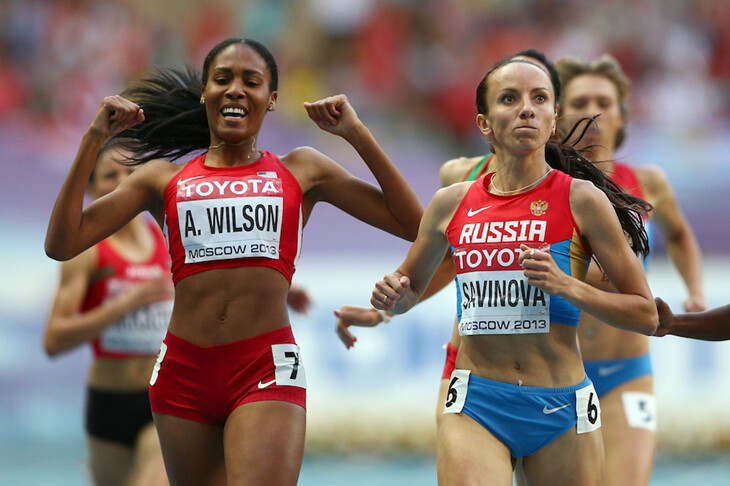
“Millrose is the ideal place to begin my season,” said Mu, who last week was named by World Athletics as the 2021 Female Rising Star. “The audience brings great energy and I always look forward to the atmosphere and competing at The Armory – It's iconic.”
Wilson, a six-time Millrose Games champion, has not lost at this meeting since 2013. Wilson broke her own US indoor record at the 2020 Millrose Games, clocking 1:58.29.
“It's been a while,” Wilson said, referring to last season’s cancelled Millrose Games due to the pandemic. “I'm super excited to return to The Armory for the Millrose Games.”
World and Olympic finalist Natoya Goule-Toppin, the Jamaican record-holder indoors and outdoors, will join Mu and Wilson in the 800m at the Millrose Games.
These 800m stars are the latest big names to be announced for the Millrose Games, following the recent confirmations of Olympic shot put champion Ryan Crouser, world shot put champion Joe Kovacs and US 1500m champions Elle Purrier St Pierre and Cole Hocker.
by World Athletics
Login to leave a comment
NYRR Millrose Games
The Pinnacle of Indoor Track & Field The NYRR Millrose Games, first held in 1908, remains the premier indoor track and field competition in the United States. The 2025 edition will once again bring the world’s top professional, collegiate, and high school athletes to New York City for a day of thrilling competition. Hosted at the New Balance Track &...
more...Oregon distance runner Cooper Teare leaves Ducks for pro career with Nike
The Ducks’ star distance runner recently signed a sponsorship contract with Nike and will not return for what would’ve been his senior season of indoor and outdoor track.
“I’ve loved every second of being a Duck,” Teare said. “It was kind of a hard decision but I’m happy I’m with the one I made.”
Teare leaves Oregon as a two-time collegiate record holder (indoor mile and distance medley relay), a two-time NCAA champion (DMR and outdoor 5,000), and three-time school record holder (5,000, mile, DMR).
All of those accomplishments came during a memorable junior season in 2021 when Teare and former teammate Cole Hocker spent six months keeping Oregon’s men’s distance program in the national spotlight as they raced together through the U.S. Olympic Track & Field Trials at Hayward Field.

That’s where Teare’s season ended, with a fourth-place finish in the 5,000 meters. Hocker won the 1,500 and finished sixth at the Tokyo Olympics before leaving the Ducks after one season to sign with Nike in September.
Teare said he also had an opportunity to turn pro over the summer, but wanted to run one more cross country season for Oregon as he wrapped up his business degree.
“I’ve sort of been going through the process for months now,” Teare said. “Some people thought I was going to turn pro right after the outdoor track season so it was nice to have a little bit of extra time to go through the motions and talk to the people I had to talk to.”
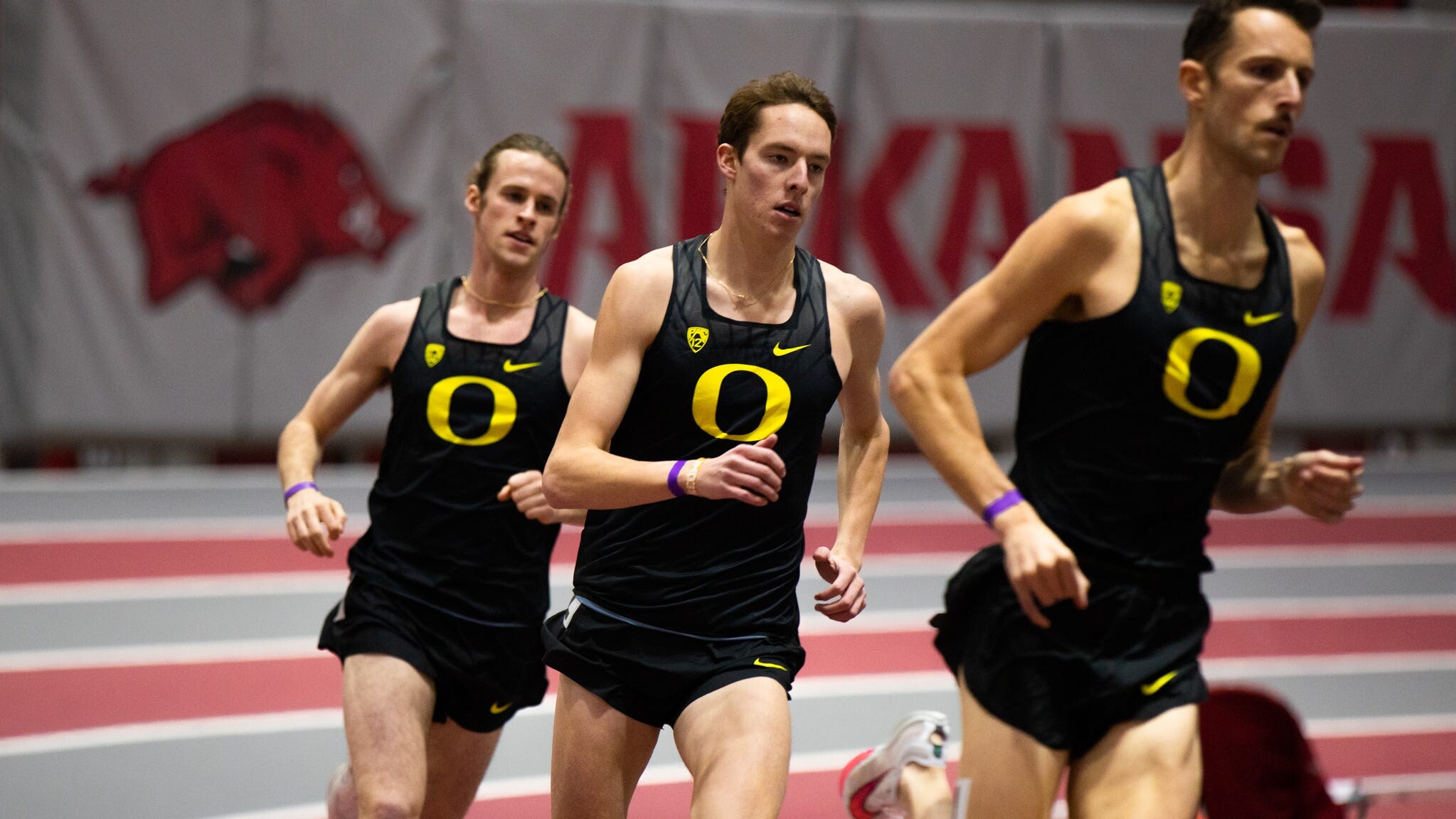
The cross country season opened on a positive note as Teare earned his first collegiate victory at the Bill Dellinger Invitational at Pine Ridge Golf Club in Springfield. He was also the runner-up at the Pac-12 championship meet.
But at the NCAA championships on Nov. 20, Teare’s legs gave out late in the 10,000-meter race and he crawled his way to the end before regaining his balance long enough to collapse across the finish line in 247th place — just three spots out of last.
“I left nothing in the tank and it just wasn’t my day,” said Teare, who was a cross country all-American in 2019 when he finished sixth. He didn’t compete in cross country during the delayed 2020 season.
Teare said it didn’t take long after that race to decide his collegiate days were done.
“That was a hard way to end it off but also I felt it was time to start a new chapter,” he said. “I talked to my coaches and we all got on the same page and everything fell into place and made sense. … I was considering going pro up right up until the start of cross country.
"The nice thing was (Nike) had seen enough of me and I had proven myself to the point where cross country wasn’t going to change much. They were ready to support me no matter what happened.”
His performance at the cross country championships did nothing to dim the track season he had earlier this year, which was highlighted by a collegiate record in the indoor mile at 3:50.39 and winning the outdoor title in the 5,000 when he ran 13:12.27. That is the fastest time ever by an American collegian and second all-time only to Henry Rono’s 1978 record of 13:08.4.
Teare is staying in Eugene to begin his professional career and will continue to be coached by Oregon associate head coach Ben Thomas. Hocker has a similar arrangement and Teare has been able to witness first-hand his training partner’s transition to the pros during the last few months.
“It was kind of nice having Cole as the guinea pig,” Teare said with a laugh. “It’s been kind of cool to see him go about figuring it all out and I think that will make it easier for me as well.”
As Teare wraps up his final days in the classroom, he is mapping out a path to next summer and what it will take to compete in the World Athletics Outdoor Track & Field Championship meet at Hayward Field.
“It doesn’t feel real,” Teare said. “It hasn’t really set in. It’s really hard to get a grasp of, OK, now I’m doing this as my job. I think once I’m done with school here in the next week it’s going to start to feel more real.”
by Chris Hansen
Login to leave a comment
Purrier St Pierre and Hocker headline Millrose mile fields
Organisers of the Millrose Games have confirmed that US 1500m champions Elle Purrier St Pierre and Cole Hocker will contest the WHOOP Wanamaker women’s and men’s miles at the World Athletics Indoor Tour Gold meeting in New York on 29 January.
Purrier St Pierre is the second-fastest woman in history for the indoor mile, having clocked a North American record of 4:16.85 at the 2020 Millrose Games. Earlier this year she set a North American indoor record of 9:10.28 for two miles, taking her to third on the world indoor all-time list, and then won at the US Trials in a meeting record of 3:58.05. She went on to place 10th in a high-quality Olympic final in Tokyo.
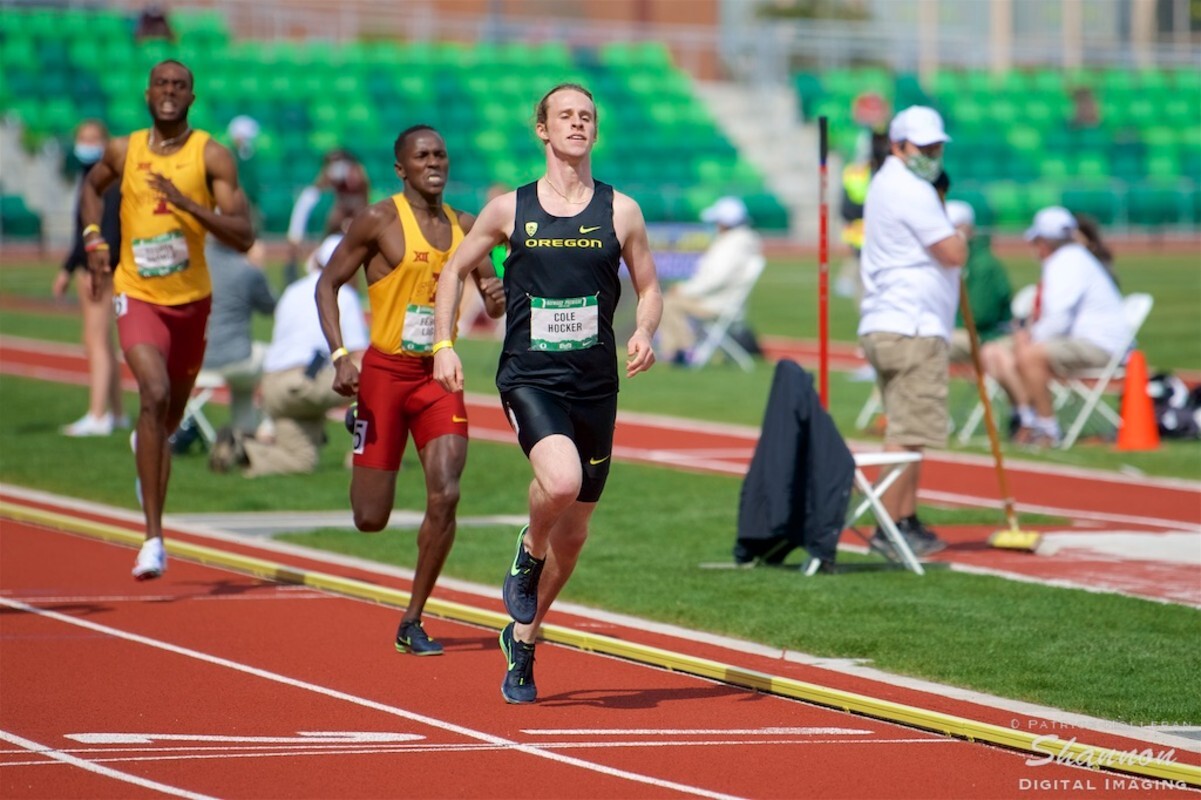
Like Purrier St Pierre, Hocker was also in flying form during the 2021 indoor season. He clocked an indoor mile PB of 3:50.55, moving him to eighth on the world indoor all-time list and making him the fastest teenager in history for the indoor discipline. One month later, he won the mile/3000m double on the same day at the NCAA Indoor Championships. He went on to win the outdoor NCAA 1500m title and the US 1500m title before placing sixth in the Olympic final in a PB of 3:31.40.
by World Athletics
Login to leave a comment
1500m Star Cole Hocker Turns Professional, Signs With Nike
After a season in which he won three NCAA titles and a US title and finished sixth in the Olympic 1500-meter final, star American miler Cole Hocker announced on Monday that he has forfeited the remainder of his NCAA eligibility and signed a professional contract with Nike. Hocker will be represented by agent Ray Flynn.
The 20-year-old Hocker, the 2018 Foot Locker Cross Country champion as a high schooler, burst onto the scene in 2021 during his second season at the University of Oregon. Indoors, he ran 3:50.55 for the mile — #2 all-time by a collegian — and won NCAA titles in the mile and 3000 meters in the span of an hour, setting a meet record of 3:53.71 in the former. Hocker was even better outdoors, winning the NCAA outdoor title at 1500 meters on his home track in Eugene. Sixteen days later, he returned to Hayward Field and won the US 1500-meter title in a memorable duel with 2016 Olympic champion Matthew Centrowitz. Then, in his first Olympics, Hocker ran personal bests in the semifinal (3:33.87) and final (3:31.40) to finish sixth overall.
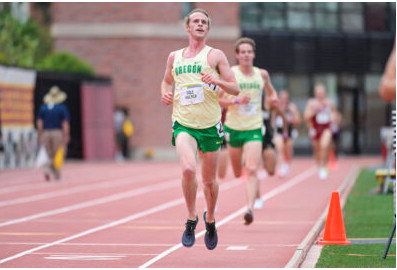
by Let’s Run
Login to leave a comment
Oregon’s Cole Hocker goes pro, he has signed with Nike
University of Oregon sophomore no more, as Cole Hocker announced on his Instagram on Monday that he has signed a professional contract with Nike.
The former University of Oregon Duck follows in the footsteps of other former American Oregon Ducks Matt Centrowitz, Galen Rupp and Andrew Wheating to go professional before finishing university.

Hocker has had a phenomenal season, winning the U.S. Olympic Trials as a 20-year-old and placing sixth in the 1,500m at the Tokyo Olympics, where he ran a personal best time of 3:31.40.
He is also a three-time NCAA champion on the track in one season, winning the mile and 3,000m indoors, and the 1,500m outdoors.
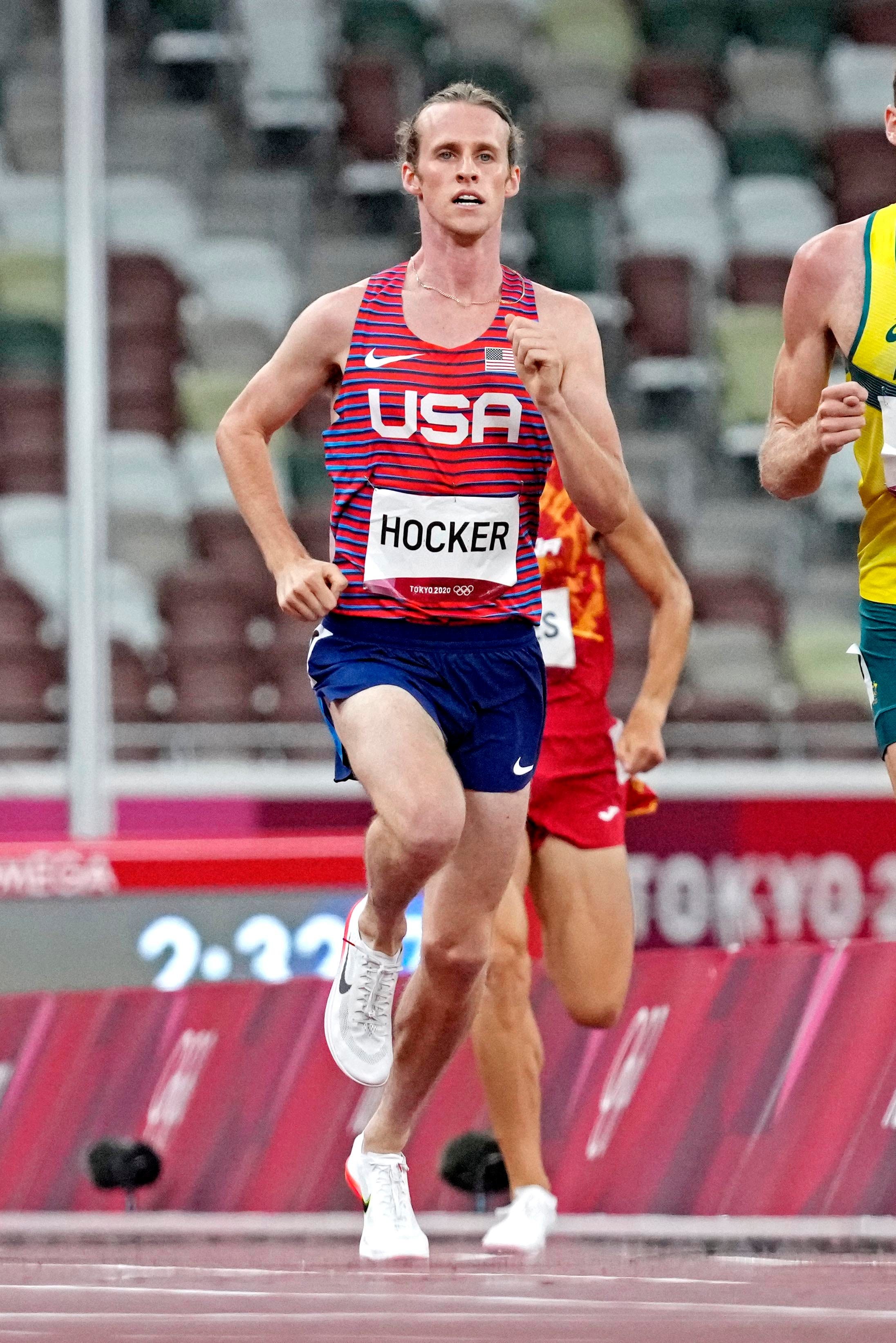
If Hocker chose to return to Oregon, he had three years of eligibility remaining for cross country and outdoor track. He was redshirted (held from competition) in 2019 due to the pandemic, saving him a season of eligibility.
It has not been announced which club Hocker will be training with or if he will continue training with the University of Oregon team.
by Marley Dickinson
Login to leave a comment
The wild and crazy men’s1500m at Tokyo Olympics
In heat one Belgium’s Ismael Debjani won to be fastest overall in 3:36.00 with a 53.4 last lap, just ahead of world champion Timothy Cheruiyot (3:36.01), Oliver Hoare (3:36.09), US trials winner Cole Hocker (3:36.16), Abdelatif Sadiki (3:36.23) and Michal Rozmys (3:36.28) who qualified automatically.
Rozmys had been six tenths of a second behind Kerr as he hit the straight but ran a 12.9 last 100m to the Scot’s 13.5 to catch him on the line, meaning the British champion missed out on automatic qualification by one hundredth of a second as he struggled in the closing stages.
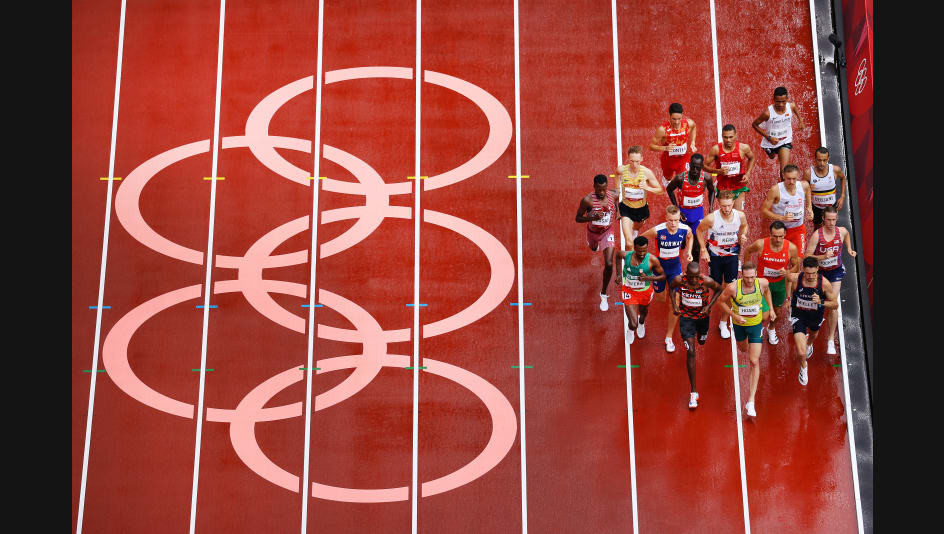
Kerr said: “I was really frustrated with my positioning and there was some shoving and I made a hard move at 500m to go. Then, at 200m to go, I felt I was going to pay for this in the home stretch. I was just trying to stay focused and push all the way, but it just wasn’t a good run for me. I am fit and ready and I have had no problems. There are just no excuses for that. I just raced it badly.”
Kerr must have been relieved as heat two was run at nowhere near the same pace. The field ambled through 400m in 62.4 and 800m in 2:02.9, only really coming to life on the last lap as Kenyan Abel Kipsang covered it in 52.8 to win in 3:40.68.
Second was defending champion Matt Centrowitz (3:41.12), just ahead of Wightman (3:41.18) who ran his last 400m in 53.2 and 200m in 26.3. Also qualifying easily were Azeddine Habz (3:41.24), Samuel Zeleke (3:41.63) and Charles Grethen (3:41.92).
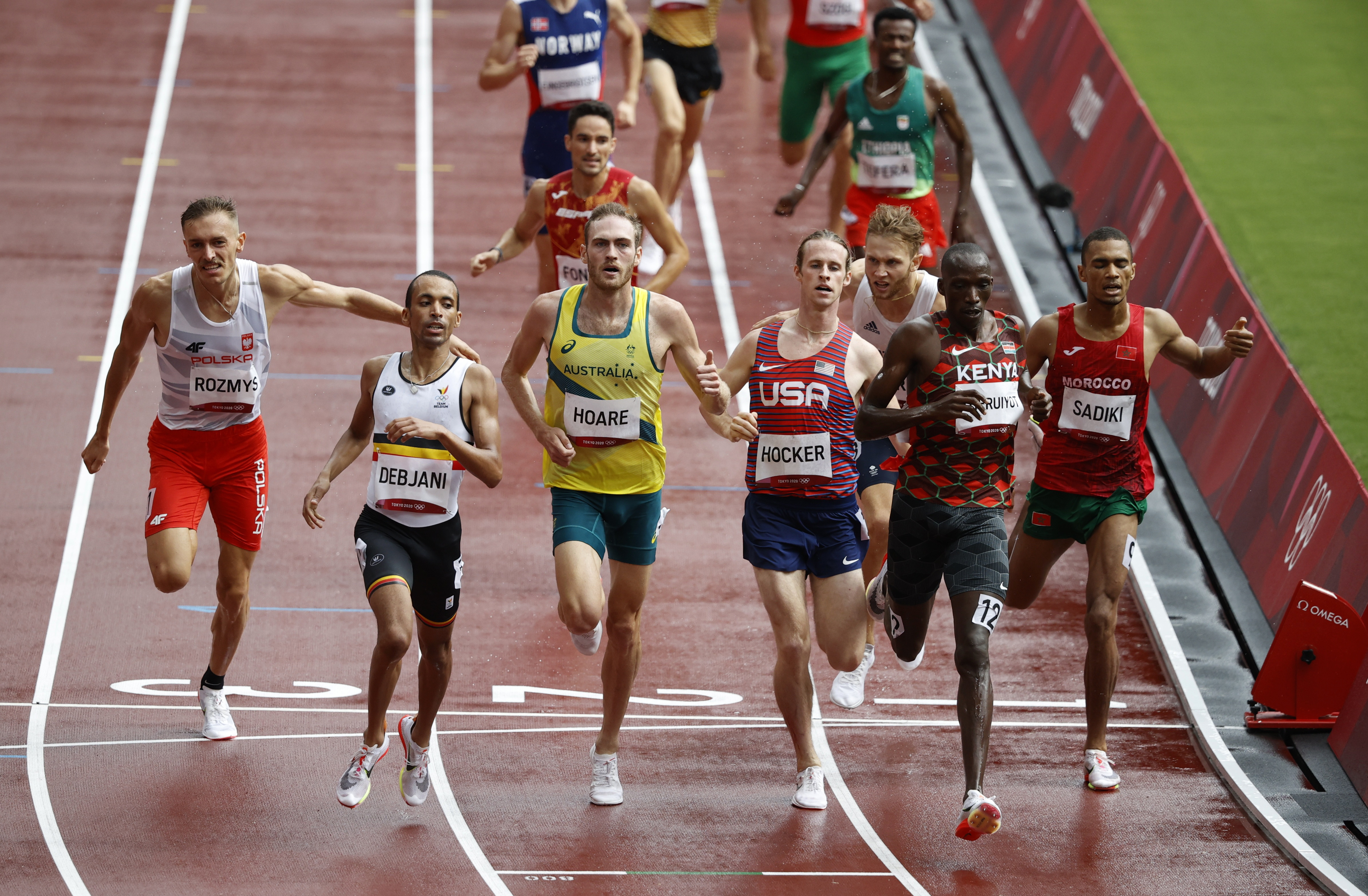
Marcin Lewandowski fell on the last lap and he jogged home but was added to the qualifiers by the judges after the event.
Wightman said: “It’s the most nerve-racking round, isn’t it? You’re worried you’re going to be embarrassed. I’m glad I managed to stay on my feet and get through. I had a smooth enough ride. I think I got a spike wound, had a few pushes but there was the fall which I’m glad I didn’t even notice until the end.
“The heats are the worst, because you’ve come all this way and no-one wants to get knocked out in the heat or expects to get knocked out in the heat, so you just want to get past and know how you are running to get through to the semi-final.”
The third heat was faster but, with six fastest loser spots, it did mean there would have to be 12 quicker than 3:36.29 for Kerr to exit and, in the end, there were only two.
The first lap was a slow 61.7 before Stewart McSweyn kicked on. The Australian completed the second lap in a lively 56.9 and the third in a top class 55.1, with only Heyward still in contact as the pair went through 1200m in 2:53.7 and 2:53.9, holding a big gap over the pack led by Robert Farken in 2:55.1.
Heyward passed McSweyn in the straight and won clearly in 3:36.14, having eased around his last lap in 55.9 and covered his last 1200m inside 2:50. Ethiopia’s Tedesse Lemi, who had been 12th at the bell, ran a 53.9 last lap to finish second in 3:36.26 and he had covered his last 1200m in 2:48.9.
McSweyn (3:36.39), Jakob Ingebrigtsen (an anonymous 3:36.49), Farken (3:36.71) and Adel Mechaal (3:36.74) completed the automatic qualifiers.
Double Olympic medallist Nick Willis (3:36.88), Andrew Coscoran (3:37.11), Ayanleh Souleiman (3:37.25) and Kenyan trials winner Charles Simotwo (3:37.26) qualified by time as they joined Kerr and Ignacio Fontes (3:36.95) as fastest losers.
Soufiane El Bakkali, who won the 3000m steeplechase title the previous day, was in contention until 200m to go but pulled out.
Heyward said: “I don’t think it could have gone much better. Safely through, that’s the main thing. You have to have a few scenarios, you have to be versatile. It could be fast, could be slow, so you’ve got to be ready for that. I think I always give my best performances in championships and I hope that showed a glimpse of what I can do.
“You can’t take anything for granted at the Olympics, you’ve got to be prepared for anything, and I was prepared to run super hard today, so that was my mindset going in. Luckily because I didn’t have to run that hard it felt quite comfortable, so it was good.”
by Athletics Weekly
Login to leave a comment
Tokyo 2020 Olympic Games
Fifty-six years after having organized the Olympic Games, the Japanese capital will be hosting a Summer edition for the second time, originally scheduled from July 24 to August 9, 2020, the games were postponed due to coronavirus outbreak, the postponed Tokyo Olympics will be held from July 23 to August 8 in 2021, according to the International Olympic Committee decision. ...
more...Betsy Riley and NBC's Olympics Production Team Are to Thank for the Peaking Track Coverage
The network’s Olympics production team is peaking at the right time—thanks, in part, to Betsy Riley, its first female producer.
Track and field reporter Lewis Johnson is live on NBC during the third day of the Olympic Track Trials in Eugene, Oregon—and he’s perched on the steeplechase barrier in front of the water jump.
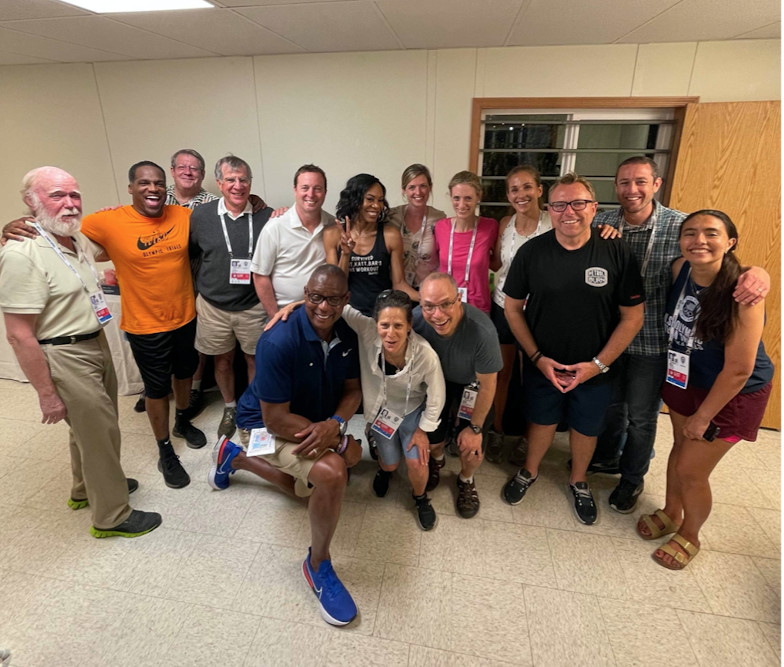
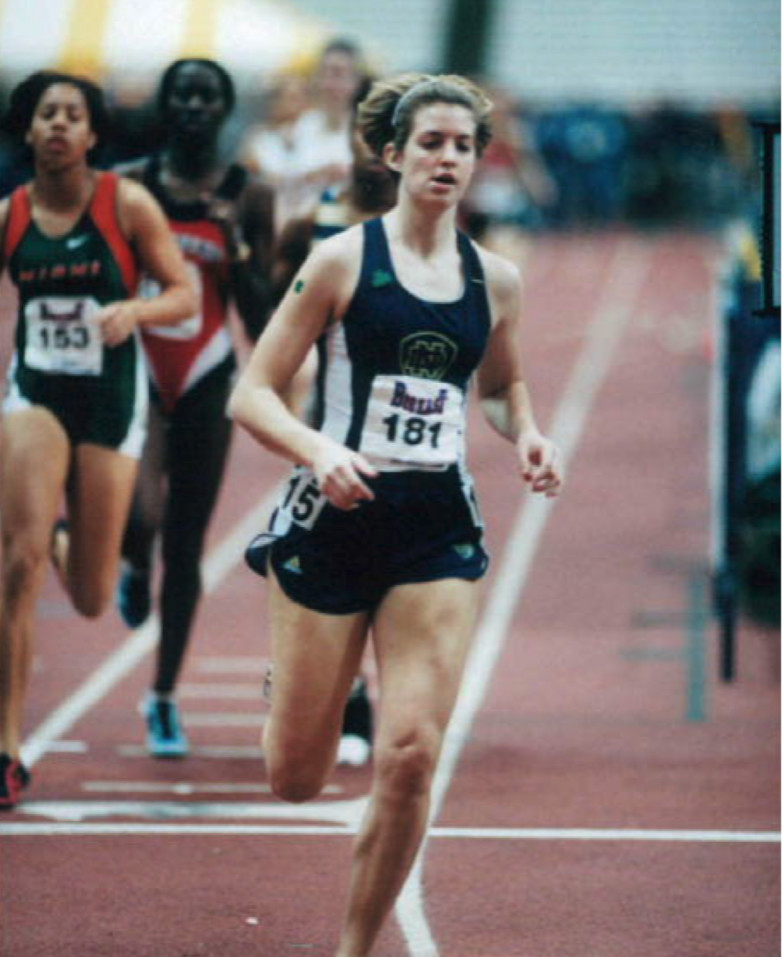
He explains the origins of the event, from the 1800s in England. Graphics flash on the screen, showing the specifics of the modern-day version of the steeplechase, 28 barriers over a 1.86-mile race. Johnson describes how the barriers don’t move as he tries, unsuccessfully, to hip check the one he was just sitting on.
Then the segment takes a whimsical turn. He walks around to the water side of the jump, kicks off a pair of green Nikes, and wades in. “Oh, that feels so good, Diff,” he says, talking to Leigh Diffey, the lead announcer at the Trials.
As Johnson gets to the deepest portion of the pit, the water is lapping at the bottom of his khaki shorts. He sits down at the edge. “Throw me a towel, man,” he says, before the broadcast cuts to the 17 women lined up at the start of the first heat of the women’s steeplechase.
It’s effective television: In one minute and 17 seconds, the segment has entertained and informed viewers—those who might not know the first thing about one of track’s quirkiest events as well as those who understand the basics of steeple but have never gotten close.
The idea for the segment? That came from the Trials producer, Betsy Riley.
Riley has implemented dozens of changes to NBC’s track broadcasts. Some are obvious improvements, like bringing on two-time Olympian Kara Goucher as a commentator, or using double boxes to keep a camera focused on track action during commercials. Others are behind-the-scenes, out of sight of viewers, but which contribute to better coverage.
The result is that long-suffering track fans, who for decades from their recliners have made a secondary sport of complaining about the way track is aired, suddenly find themselves with little to carp about. In fact, anecdotally at least, they’re happy to tune in, whether it’s on their TVs or phones or tablets, and watch running and field events.
That’s largely because Riley is one of them, a true believer and competitor with a lifelong love of track and field.
A pair of firsts
Riley will make TV history this month when she becomes the first woman to produce track and field at an Olympics for NBC. Network brass plan their coverage of the summer Games around swimming, gymnastics, and track—these three disciplines are the “tentpoles” that anchor the coverage—and in fact, Riley is the first woman to produce any of the sports for NBC at the Games.
“We’re so proud of her,” said Molly Solomon, who is the executive producer for the summer Games, also a first for a woman at NBC. “The fact that she’s producing an ‘A’ venue, track and field, at the Olympics, one of the big three. It’s a huge accomplishment.”
But Riley brushes this aside. While other people are making a big deal out of it, she is not, deflecting attention to the great role models she’s had at NBC, including Solomon, and the team of experts she has around her.
A pair of firsts
Riley will make TV history this month when she becomes the first woman to produce track and field at an Olympics for NBC. Network brass plan their coverage of the summer Games around swimming, gymnastics, and track—these three disciplines are the “tentpoles” that anchor the coverage—and in fact, Riley is the first woman to produce any of the sports for NBC at the Games.
“We’re so proud of her,” said Molly Solomon, who is the executive producer for the summer Games, also a first for a woman at NBC. “The fact that she’s producing an ‘A’ venue, track and field, at the Olympics, one of the big three. It’s a huge accomplishment.”
But Riley brushes this aside. While other people are making a big deal out of it, she is not, deflecting attention to the great role models she’s had at NBC, including Solomon, and the team of experts she has around her.
From there, she raised her hand for anything, filling any role, on coverage of surfing, golf, horse racing, college football, college basketball. And always the Olympics and Olympic sports. These days, she’s also Michele Tafoya’s sideline producer on Sunday Night Football.
Amid the long hours that TV requires, Riley met her husband and got married, and they have two children, ages 4 and 1 1/2. In a year when talk of mothers and motherhood has dominated track and field, Riley has her own story to rival them all.
It was 2017, she was 35 weeks pregnant, and she had just finished producing the Prefontaine Classic, a Diamond League track meet in Eugene. On her flight home to Baltimore, somewhere over the Midwest, her water broke. When the plane landed, she took a cab straight to the hospital, and met her husband there. A few hours later, they welcomed a son—who had jumped the gun by more than a month.
Infinite possibilities
Track and field is among the most complex sports to broadcast, and Riley strives to replicate for viewers at home an experience that would be similar to what happens when spectators are watching live, in the stadium. They can choose to watch running on the track or look to the infield for one or more field events happening simultaneously. How do you get that same sense of the action on screen?
On June 26, the penultimate day of Trials competition, Riley sits in the cramped NBC production truck, staring at 30 different screens displaying various camera angles. On her headset she hears the voices of seven on-air commentators. Riley has field events producer Scott Karpen a few feet to her left and director Charlie Dammeyer inches to her right, so close you could barely hold a discus between them. A countdown until the live show begins. Four minutes. Two minutes.
Into her headset, Riley says in a low voice, “Have a great one, everyone.”
From there, Riley is making constant decisions for the next two hours from an infinite combination of elements: which replays to show, when to air a graphic, when to go to a field events package on the women’s hammer throw that happened earlier in the evening, how much time to devote to Sydney McLaughlin walking toward the track while leaving Diffey enough time to voice the element.
Riley, Dammeyer, and Karpen trust one another completely, which makes Riley’s job easier as she decides which family members and coaches to show, when to go to live interviews with happy athletes who just made the Olympic team (and what to do when one lets an expletive slip, as Elle Purrier St. Pierre did after winning the 1500 meters). Karpen describes the role of producer as “the ultimate multitasking job.”
Her background helped make Riley great, observers say, because she grew up in sports television, filling every position, from the entry level production associate calling graphics to working in the videotape area to being in charge of the tape area. She’s been in the front of the truck as the associate director who assists the director and producer in timing.
“If you do those jobs, when you are promoted to producer, you understand what everyone is doing,” Solomon said. “You understand what they need from their leader. You can synthesize all of it. It’s an amazing skill, but you can have six voices in your headset and hear the right ones at the right time. It’s orchestrated chaos.”
A different person might be ruffled by the pressure, but Riley’s steady demeanor is one of her hallmarks.
“I always admire her measured style in the heat of battle,” Solomon said. “She’s very calm, cool, and collected, but she knows what she wants, and she’s direct. That’s what makes great producers—to have a clear head in the middle of the chaos and be able to communicate to the team and lead the team.”
Riley says her faith in the people around her makes it easy. “Our team is incredible,” she said. “It doesn’t happen without every single person contributing, sharing ideas and then pulling in the same direction when we’re on air. In any successful broadcast, you have great teamwork.”
But she has trouble explaining what is going on in her brain during broadcasts, synthesizing all the camera angles and voices, making scores of journalistic decisions every minute. All she can say is that she’s constantly evaluating: What’s the most important right now?
Building team chemistry
None of it happens by accident. Every live broadcast is the result of months of brainstorming, testing, planning, and coaching.
“People at home see the ultimate product,” Karpen explains. “They don’t see the months and years and hours of thought and time she’s put into this. Nothing happens overnight. It’s because Betsy was somewhere in the world thinking, ‘How can we get better?’ And pushing people to think about this. It’s not show up and let’s make TV. This is hours and years to get to that one moment.”
Riley is known for listening at meetings, soliciting input from anyone who wants to contribute, giving serious consideration to all ideas.
“One thing I absolutely respect about her is that nothing is a bad idea,” Dammeyer said. “Ideas come from everywhere. She’s asking everyone, ‘What do you think?’ Everyone has a seat at the table, from Ato [Boldon] to Leigh to the graphics production assistant. Everybody’s voice counts.”
When Goucher first started doing on-air commentary for NBC this spring, Riley gave her extra coaching sessions, telling her what she was doing well and what she needed to improve. On the live broadcast, Riley is in Goucher’s ear.
Goucher remembers watching Abbey Cooper pull away in the early laps of the first round of the women’s 5,000 meters, trying to get the Olympic standard on her own in the Eugene heat. “I was like, ‘This is crazy.’ Betsy was in my ear. ‘Why is this hard? Tell the audience why this is hard.’ She gives me little cues.”
Goucher has been one of the revelations of the track season—a hit with viewers for the passion she brings and the insights she shares, gleaned from her own career as an athlete. But nothing motivates her as much as her producer’s live coaching. “If I do something that she likes, she says, ‘Well done.’ She’ll give you a little feedback as you’re going, which I find super helpful.”
Which isn’t to say that it’s always roses. Boldon has been working NBC broadcasts for 14 years. In 2019, around the time of the Prefontaine Classic, he and the other commentators and members of the production team were summoned to a meeting.
“You know how when a team is playing really badly and you have a players-only meeting?” he said. “Right. We had one of those. The chemistry wasn’t right, the flow wasn’t right. It was watching a team of really good players play badly because they can’t play with each other.”
In Boldon’s telling, Riley led the meeting and didn’t mince words with her assessment of what needed to improve. The message? “Swimming and gymnastics get the baton and we have to bring it home for NBC,” Boldon said. “Everyone in that room was as serious as a heart attack. She came with receipts. She came with video—she had put together a whole package. ‘Look at this. What’s wrong with this? Can we do better here?’”
It was a turning point. “I think the broadcast we did from the Eugene Trials was the best Trials broadcast I’ve ever been a part of,” he said.
A network’s core values
NBC coverage—no matter who the producer is—focuses on two things, according to Riley. First, getting the sport right. And second, storytelling.
“Sometimes people think of storytelling as a soft human interest story, and that’s possible, but it’s also storytelling about the race itself and the athletic event itself,” Riley said. “Storytelling is part of everything we do at the Olympics.”
Donavan Brazier in a feature about fly fishing before the men’s 800 final? That’s storytelling. Lewis Johnson wading into the water jump pit? Also storytelling. But most important is the race itself. Replays that show Dalilah Muhammad getting out to a fast start in the women’s 400-meter hurdles, or Cole Hocker’s kick to win the men’s 1500 meters are, at their core, about storytelling.
The goal of every sports broadcast is to make the viewer care about who they’re watching. Riley understands this, and she’s not afraid to push the envelope with technology to help viewers better understand track and field.
During the Trials, fans of the distance races rejoiced at coverage that continued through commercials with double boxes. It’s a feature that’s been around for five years, Riley said, but its use is expected now.
“Sponsors are noticing that it’s nice to have action, it’s nice to have people sticking around for those commercials,” she said. “Early on there was definitely an effort to showcase the value of it. Now that we’re five years on, people know that’s expected and what track fans really want.”
Riley has been experimenting with other forms of technology—miles per hour graphics and live leaderboards that show how many meters behind athletes are from the leader. The point, always, is to give the viewer at home deeper understanding.
Heading to Tokyo
On the NBC broadcast in primetime, Riley and her team will make sure track and field is accessible for those who tune into the sport only once every four years. Boldon says Riley has pushed him not to rely on statistics and times. Instead, she’ll be in his ear during broadcasts, urging him along to find a different way to tell stories. “Make me care,” she’ll say. “Make me care.”
But changing technology allows viewers to customize what they see. If hardcore triple jump fans want to watch every minute of triple jump or discus from Tokyo, and not just a highlights package, that’s possible with the cable channels and digital streams.
And that means as the broadcast team heads for Tokyo, they’ve got hours and hours of work ahead of them. For 10 straight days, July 30 to August 8, Riley and the team will be at it, documenting the performances and the emotions they inspire.
“For the TV dorks like we are, our team relishes the opportunity to do lots of TV and cover lots of competition,” Riley said. “That’s really fun stuff.”
by Runner’s World
Login to leave a comment
130 athletes named on the team to represent the United States at the Tokyo Olympic Games
World outdoor record-holders Sydney McLaughlin, Ryan Crouser and Keni Harrison are among the 130 athletes named on the team to represent the United States at the Tokyo Olympic Games.
The squad includes 13 medalists from the 2016 Games in Rio and six defending world champions from Doha. Experienced headliners include five-time Olympians Allyson Felix in the 400m and Abdi Abdirahman in the marathon, while the youngest athlete on the team is 17-year-old Erriyon Knighton, who twice broke the world U20 200m record last month at the US Olympic Trials.
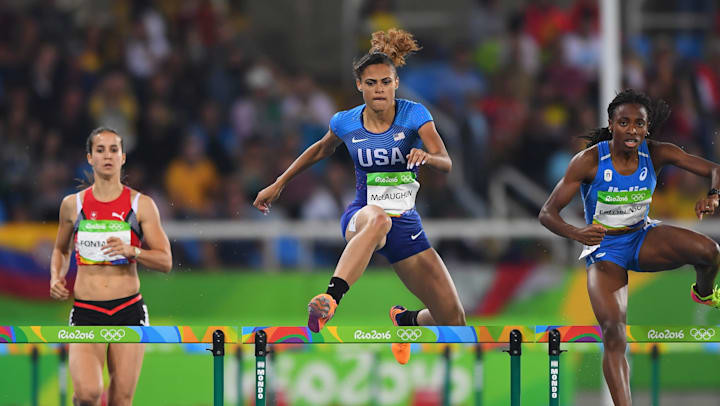
JuVaughn Harrison won both the long jump and high jump at the Trials in Eugene and he will be among the athletes contesting two events in Tokyo as he has been selected for both disciplines.
Other athletes announced on the team include world indoor 60m hurdles record-holder Grant Holloway, who was just 0.01 shy of breaking Aries Merritt’s world 110m hurdles record of 12.80 in Eugene, plus former world 400m hurdles record-holder Dalilah Muhammad, the second-fastest ever 200m sprinter Gabby Thomas and multiple global long jump gold medalist Brittney Reese.

USA team for Tokyo
WOMEN
100m: Teahna Daniels, Javianne Oliver, Jenna Prandini
200m: Anavia Battle, Jenna Prandini, Gabby Thomas
400m: Allyson Felix, Quanera Hayes, Wadeline Jonathas
800m: Athing Mu, Raevyn Rogers, Ajee' Wilson
1500m: Heather MacLean, Cory McGee, Elle Purrier
5000m: Elise Cranny, Rachel Schneider, Karissa Schweizer
10,000m: Alicia Monson, Karissa Schweizer, Emily Sisson
Marathon: Sally Kipyego, Molly Seidel, Aliphine Tuliamuk
3000m steeplechase: Emma Coburn, Val Constien, Courtney Frerichs
100m hurdles: Christina Clemons, Gabbi Cunningham, Keni Harrison
400m hurdles: Anna Cockrell, Sydney McLaughlin, Dalilah Muhammad
20km race walk: Robyn Stevens
High jump: Tynita Butts-Townsend, Vashti Cunningham, Rachel McCoy
Pole vault: Morgann LeLeux, Katie Nageotte, Sandi Morris
Long jump: Quanesha Burks, Tara Davis, Brittney Reese
Triple jump: Tori Franklin, Jasmine Moore, Keturah Orji
Shot put: Adelaide Aquilla, Jessica Ramsey, Raven Saunders
Discus: Valarie Allman, Kelsey Card, Rachel Dincoff
Hammer: Brooke Andersen, Gwen Berry, DeAnna Price
Javelin: Ariana Ince, Maggie Malone, Kara Winger
Heptathlon: Erica Bougard, Annie Kunz, Kendell Williams
4x100m: English Gardner, Aleia Hobbs, Gabby Thomas (plus others selected in individual events)
4x400m: Kendall Ellis, Lynna Irby, Kaylin Whitney (plus others selected in individual events)
MEN
100m: Ronnie Baker, Trayvon Bromell, Fred Kerley
200m: Kenny Bednarek, Erriyon Knighton, Noah Lyles
400m: Michael Cherry, Michael Norman, Randolph Ross
800m: Bryce Hoppel, Isaiah Jewett, Clayton Murphy
1500m: Matthew Centrowitz, Cole Hocker, Yared Nuguse
5000m: Paul Chelimo, Grant Fisher, Woody Kincaid
10,000m: Grant Fisher, Woody Kincaid, Joe Klecker
Marathon: Abdi Abdirahman, Jake Riley, Galen Rupp
3000m steeplechase: Hillary Bor, Mason Ferlic, Benard Keter
110m hurdles: Devon Allen, Grant Holloway, Daniel Roberts
400m hurdles: Rai Benjamin, David Kendziera, Kenny Selmon
20km race walk: Nick Christie
High jump: JuVaughn Harrison, Shelby McEwen, Darryl Sullivan
Pole vault: Sam Kendricks, KC Lightfoot, Chris Nilsen
Long jump: Marquis Dendy, JuVaughn Harrison, Steffin McCarter
Triple jump: Chris Benard, Will Claye, Donald Scott
Shot put: Ryan Crouser, Joe Kovacs, Payton Otterdahl
Discus: Mason Finley, Reggie Jagers, Sam Mattis
Hammer: Daniel Haugh, Rudy Winkler, Alex Young
Javelin: Michael Shuey, Curtis Thompson
Decathlon: Steven Bastien, Garrett Scantling, Zach Ziemek
4x100m: Kenny Bednarek, Cravon Gillespie, Micah Williams (plus others selected in individual events)
4x400m: Elija Godwin, Vernon Norwood, Trevor Stewart (plus others selected in individual events)
MIXED
4x400m: Shae Anderson, Bryce Deadmon, Wil London, Taylor Manson (plus others selected in individual events).
by World Athletics
Login to leave a comment
Tokyo 2020 Olympic Games
Fifty-six years after having organized the Olympic Games, the Japanese capital will be hosting a Summer edition for the second time, originally scheduled from July 24 to August 9, 2020, the games were postponed due to coronavirus outbreak, the postponed Tokyo Olympics will be held from July 23 to August 8 in 2021, according to the International Olympic Committee decision. ...
more...McLaughlin smashes world 400m hurdles record in Eugene with 51.90 and other highlights
In a culture saturated by so many other sports, those in the USA fret about who can be the face of athletics.
Who can be featured on television news? Who can be a crossover figure like gymnast Simone Biles? Who can be a Carl Lewis or a Jackie Joyner-Kersee?
As the 10-day US Olympic Trials closed on Sunday night (27) in Eugene, Oregon, there was a deep reservoir of young candidates – none more so than Sydney McLaughlin. The 21-year-old became the first woman to break the 52-second barrier in the 400m hurdles.
Record temperatures approaching 44C delayed the programme by five hours, but there was no delaying the inevitable: McLaughlin was going to break the world record, and she did so with her time of 51.90.
“I definitely saw it coming,” said Dalilah Muhammad, the world and Olympic champion. “She looked so good in the rounds.”
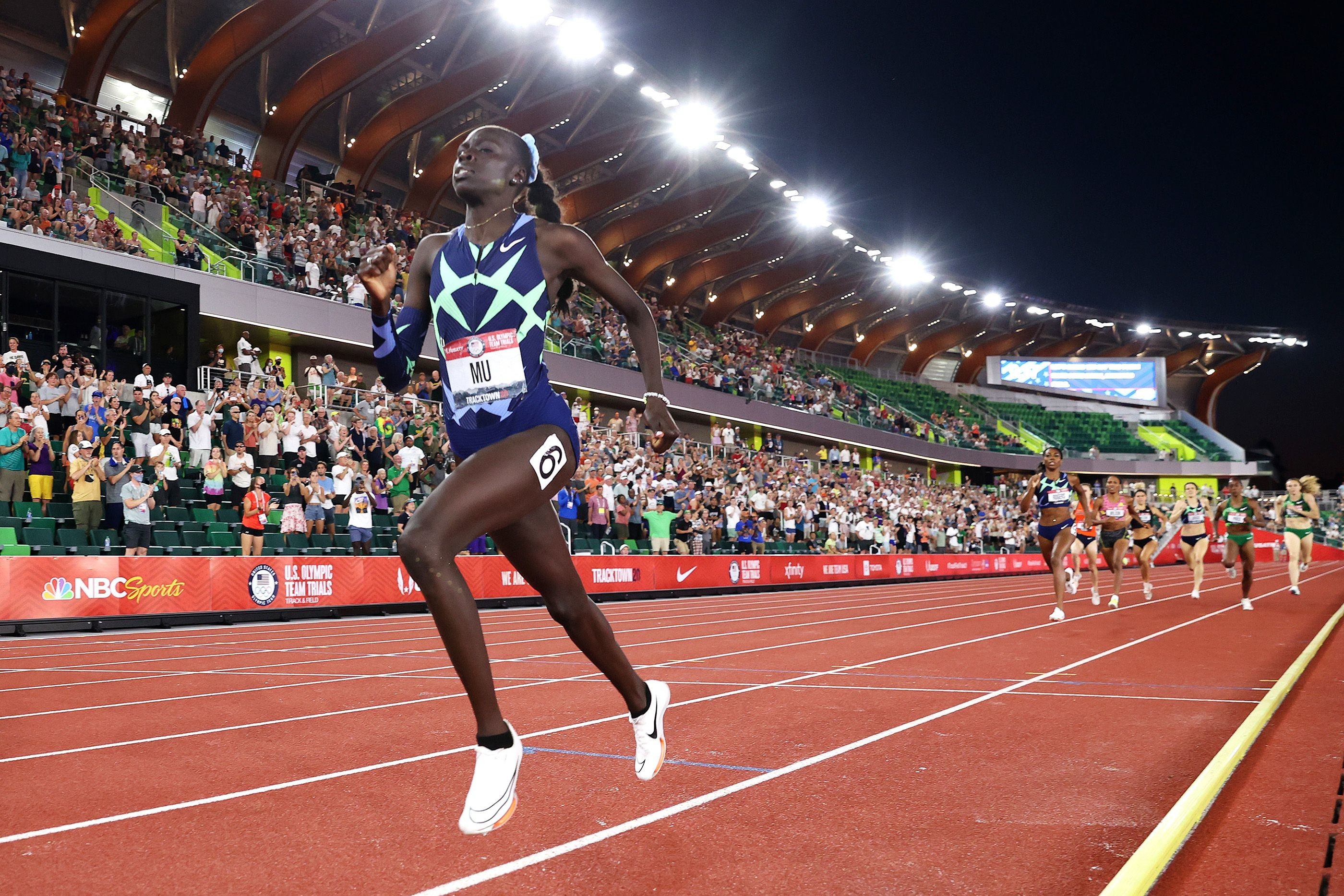
McLaughlin’s time broke the record of 52.16 set by Muhammad at the World Athletics Championships Doha 2019. McLaughlin, second in that race in 52.23, pulled away from Muhammad over the final two hurdles in Eugene.
Even with 2020 lost to the pandemic, the world record has been broken three times in 23 months – twice by Muhammad, once by McLaughlin.
That was the highlight of another historic day of young record-breakers. The trials ended with 11 world-leading marks, five by men and six by women.
Athing Mu, 19, set a trials record in the 800m; Cole Hocker, 20, became the youngest men’s 1500m champion in 110 years; JuVaughn Harrison, 22, became the first to make the US team in the high jump and long jump since Jim Thorpe in 1912; Noah Lyles, 23, ran a world-leading 200m, and Erriyon Knighton, 17, again lowered the world U20 record in the 200m.
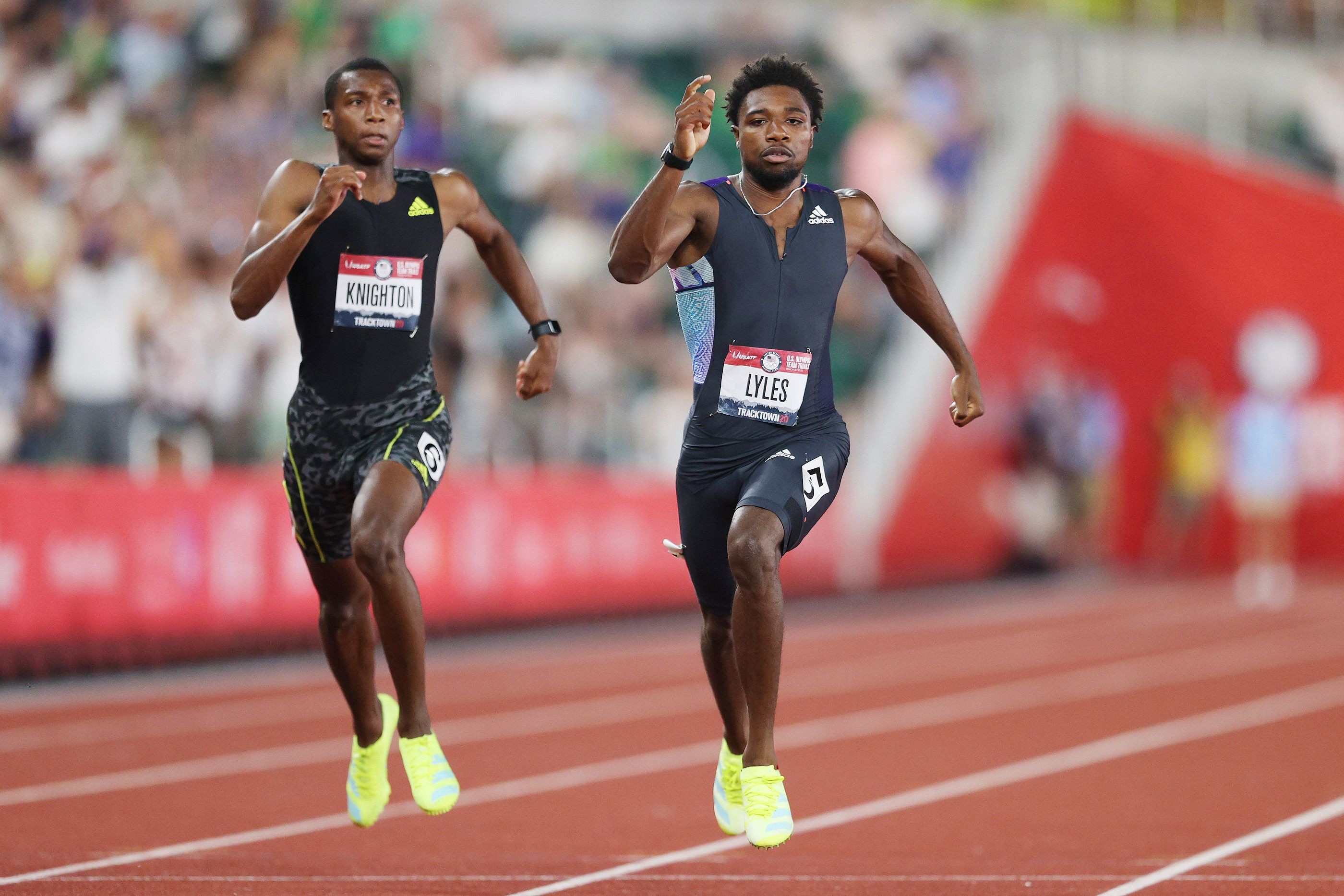
McLaughlin has been projected as the sport’s face in the United States since she made an Olympic team at age 16. After one college season at Kentucky, she turned professional.
“I was growing into my own person,” she said. “My faith is the biggest change. Trusting God and knowing He will carry me through.”
Her record-setting might not be over. Not only could McLaughlin lower her world record at the Tokyo Olympics, she should be named to the 4x400m relay team that could set one – though that mark (3:15.17) is arguably a much bigger ask.
McLaughlin trains in Los Angeles under Bobby Kersee, who also coached Joyner-Kersee.
“Bobby knows how to put things together when the time comes,” McLaughlin said.
Muhammad, who over the past 12 months has had to contend with injuries and a bout of Covid-19, finished second in 52.42, the third-fastest time of her career. NCAA champion Anna Cockrell took the third spot in 53.70, nearly a full second faster than her previous PB, in beating Shamier Little (53.85). Olympic bronze medallist Ashley Spencer stumbled over an early hurdle and finished seventh.
Likely to join McLaughlin in that 4x400m team is Mu, considering earlier this month she set a collegiate record of 49.57 – faster than the winning mark at the USA Trials.
Mu ran a world-leading 1:56.07 to win the 800m, breaking her own North American U20 record. World silver medallist Raevyn Rogers was second in a PB of 1:57.66 and US record-holder Ajee Wilson third in 1:58.39. Not until late did Wilson overtake Michaela Meyer, who was fourth in 1:58.55.
Mu sat in the pack for the first lap, passing through 200m in 27.54 and 400m in a swift 57.53. She then made her move on the second lap, positioning herself at the front with 200 metres to go. She kicked hard as she came off the final bend and, having covered the final lap in 58.54, crossed the line almost two seconds ahead of her nearest opponent.
In the men's 1500m, Hocker was in sixth place with about 150 metres left but used a closing rush to overtake Olympic champion Matthew Centrowitz, 3:35.28 to 3:35.34.
Yared Nuguse, 22, was third in 3:36.19, overtaking the most recent national champion, Craig Engels, who is also this year’s fastest US man (3:33.64).
Hocker put a finger to his lips past the finish as if to shush critics. An “in-the-moment thing”, he said.
“Last year I wasn’t at this level. I was nowhere near this level,” he said. “This whole year, I felt like I was proving myself to the world, but also proving my talent to myself. There’s a lot of negative talk out there, and I wanted to silence everyone.”
Hocker has not met the 3:35 Olympic standard but has a world ranking that looks sufficient to secure his spot on the US team.
He is the youngest US Olympian in the men’s 1500m since Marty Liquori, then 19, in 1968. And he is the youngest national champion in the men’s 1500 or mile since 1911, when Abel Kiviat won a few days after turning 19.
Hocker has run 23 races since 29 January. Thirteen were PBs. Of the 10 others, eight were prelims and one an NCAA indoor title.
“I’m impressed that he’s been able to do that since January and is showing no signs of letting up,” said Centrowitz.
Harrison won the high jump at 2.33m, beating Darryl Sullivan on countback. Olympic medallist Erik Kynard was fourth.
The delay allowed Harrison more rest for the long jump, in which he jumped a PB of 8.47m, completing the best ever one-day jumps double.
“It just gave my legs more time to recover and gave me a chance to eat something,” Harrison said. “I was ready to go earlier, even though they said it was too hot.”
Marquis Dendy, the 2016 world indoor champion, was second at 8.38m and Steffin McCarter third with 8.26m. Olympic champion Jeff Henderson was sixth with 8.08m, meaning he won’t defend his title in Tokyo.
In a competition that showcased newcomers, it was appropriate that the last athlete to secure an Olympic berth was Knighton. He is the youngest man on the US team since Jim Ryun in 1964.
World champion Lyles won the 200m in a world-leading 19.74, followed by Kenny Bednarek, 19.78, and Knighton, 19.84. Knighton broke his own world U20 record of 19.88 from Saturday’s semifinals. He set a world U18 record of 20.04 in Friday’s first round, then twice broke that.
Lyles was fourth in the 200m at the 2016 trials as an 18-year-old.
“Ever since then, the mind-set of being an Olympian has been on my mind,” said Lyles. “Having the pause on 2020 has probably been my hardest yet. I don’t think anyone can prepare you for the lion you have to slay at the Olympic Trials.”
In the heptathlon, the year’s top three scores were posted by Annie Kunz (6703), Kendall Williams (6683) and Erica Bougard (6667). Kunz, whose previous best was 6153, did not have the Olympic standard until this week.
Kunz broke or was close to her PBs in all seven disciplines. She started with a marginally wind-assisted 12.95 in the 100m hurdles and followed it with 1.81m in the high jump, an outdoor PB. She then threw 15.73m in the shot put, which moved her into the lead overall – a position she maintained after clocking a PB of 23.71 in the 200m to end the first day at the top of the leader board.
She started the second day with a huge PB of 6.50m in the long jump, but briefly relinquished her lead after the javelin (45.06m). Kendell Williams, who ended the first day in third place, was having a strong second day with marks of 6.73m in the long jump and 47.41m in the javelin. It meant Williams went into the final event with a two-point lead over Kunz.
But Kunz ensured she stayed ahead of Williams in the 800m, eventually clocking 2:15.24 to retake the lead with a score of 6703, moving to fifth on the US all-time list. Williams, who finished second with a PB of 6683, is now sixth on that list.
Taliyah Brooks, in fourth place through five events, had to withdraw because of the heat.
“I have grown immensely since 2019,” said Kunz, who finished 13th at the 2019 World Championships. “It feels like the sky’s the limit now.”
The men’s 5000m, held in the morning to escape the worst of the heat, was won by Olympic silver medallist Paul Chelimo. He gradually veered from the rail to inside of lane four to force out Bowerman Track Club’s Grant Fisher and Woody Kincaid.
Chelimo was first in 13:26.82, followed by Fisher (13:27.01) and Kincaid (13:27.13). Their respective closing laps were 52.83, 52.99 and 52.74. Cooper Teare was fourth in 13:28.08 off a 53.97 last lap.
Fisher and Kincaid became the first pair to finish in the top three of 5000m and 10,000m at the same US Trials. Qualifying in both had been done previously, but never two at the same trials.
by World Athletics
Login to leave a comment
What to Watch For in the U.S.A. Track & Field Olympic Trials
For months, they have trained in relative isolation. They have triple jumped in empty stadiums and chased qualifying standards on high school tracks. You may have heard this before, but the pandemic created challenges for American track and field athletes.
For those who managed to push through the long delay, a meet five years in the making has finally arrived: The U.S. Olympic track and field trials are set to start on Friday afternoon at the University of Oregon’s Hayward Field, a freshly renovated stadium that — barring something else unforeseen — will also host the world championships next year.
But first come the trials. As athletes from across the country bid to compete at the Tokyo Games this summer, here is a look at what to watch over the coming days:
What’s the schedule?
Glad you asked. It is a long meet — 10 days, with two rest days built in the middle — running from Friday through June 27. There are 40 events in all (20 for the women, 20 for the men), with preliminary rounds for most of them. On Friday, for example, there are preliminary rounds in events ranging from the women’s discus to the men’s 800 meters. There are also two finals scheduled for the first day, in the men’s shot put and the men’s 10,000. On Sunday, eight more champions will be crowned, including in the men’s 100. (More on that later.)
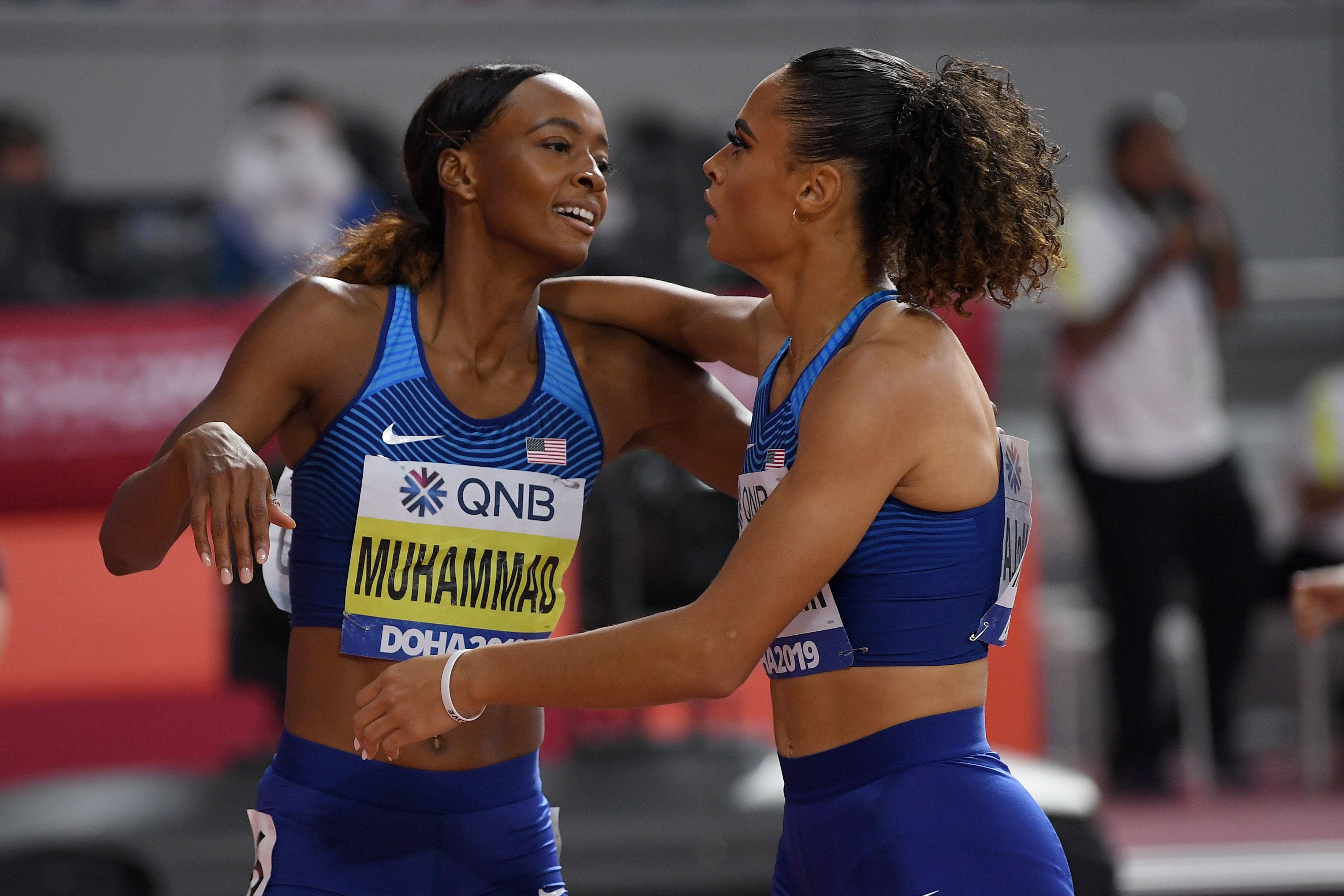
So who gets to go to the Olympics?
The top three finishers in each event qualify, provided they have reached the Olympic standard. If not, they have until July 1 to attain it.
Who are some of the most compelling athletes to watch?
Any list like this has to start with Allyson Felix, the nine-time Olympic medalist who is aiming to compete in her fifth and final Olympic Games. A onetime prodigy who is entered in the 200 and 400 meters, Felix, 35, long ago secured her place as one of the sport’s most revered and respected figures. She has advocated for gender equality since giving birth to her first child in 2018.
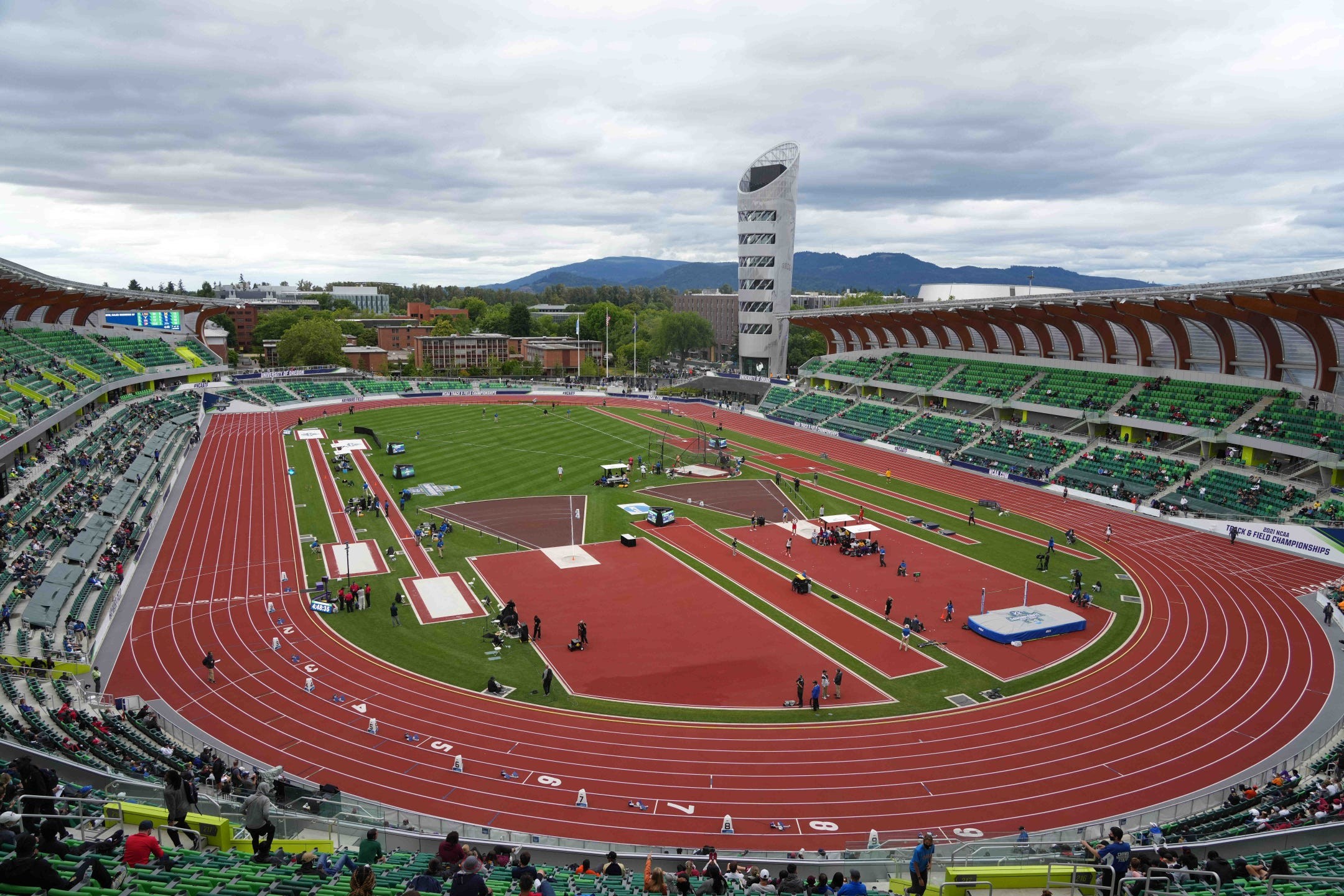
Felix’s retirement will leave a void among the American women, and Sha’Carri Richardsonseems prepared to help fill it. In April, she ran the sixth-fastest 100 in history. Richardson, just 21, is unapologetically brash while consistently coming through with fast times and big performances. She is easy to spot, too: Just look for her colorful hair.
In the women’s 1,500 meters, Elle Purrier St. Pierre is the favorite after a string of convincing victories this season. She grew up on a dairy farm in Vermont, where she would train by running to the Quebec border and back. Her sponsors include Cabot Cheese.
Donavan Brazier is the American record-holder and reigning world champion in the men’s 800. He seems determined after failing to qualify for the Olympics in 2016.
And Sam Kendricks, who has won back-to-back world men’s pole vault championships, is the heavy favorite in Oregon. His toughest competition figures to be in Tokyo, where Mondo Duplantis, who grew up in Louisianabut competes for Sweden, will be waiting. Duplantis, 21, already owns the world record but is seeking his first Olympic gold.
How about a few must-see events?
No, we didn’t forget about Noah Lyles, the world champion in the men’s 200 meters. Lyles wants to double in the 100 and 200 meters in Tokyo, and his 100-meter form has been coming along slowly. He will face a loaded 100-meter field in Eugene, Ore., headlined by the likes of Trayvon Bromell, who has run the fastest time in the world this year, and Justin Gatlin, the five-time Olympic medalist who has twice been suspended for doping. Americans have the six fastest 100-meter times in the world this year — and Lyles is not among them.
The field in the men’s 1,500 is also competitive. Matthew Centrowitz, the 2016 Olympic champion, was injured last year and benefited from the postponement. Craig Engels is the 2019 national champion, but he is equally renowned for his mullet. There is also a group of up-and-comers headlined by Cole Hocker, fresh off an N.C.A.A. title at Oregon, and Hobbs Kessler, the fastest high school miler ever.
The most anticipated showdown, though, could materialize in the women’s 400-meter hurdles. At the 2019 world championships, Dalilah Muhammad, 31, had to break her own world record to outrun Sydney McLaughlin, one of the sport’s rising stars. Muhammad, the Olympic champion in Rio, has been working in recent weeks to return to form after injuring her hamstring. McLaughlin, 21, spent much of the spring fine-tuning her speed and technique while competing in the 100-meter hurdles. If both athletes are healthy, their final — held on the final day of the meet — should be a highlight.
Who’s missing?
The trials got a harsh dose of reality this week when Shelby Houlihan, the American record-holder in the women’s 1,500 meters, was suspended from competing for four years after she had tested positive for an anabolic steroid. Houlihan has maintained her innocence, claiming she ate tainted pork from a food truck. For about eight hours Thursday, it seemed that Houlihan might still be able to run while she appealed the ban, but ultimately the U.S. Olympic & Paralympic Committee stepped in and said that she could not participate in the trials.
Speaking of suspensions, that deep field in the men’s 100 meters is missing an important name: Christian Coleman, who won the 2019 world championship under a cloud of suspicion, and was subsequently suspended for missing a series of drug tests.
Also absent will be Christian Taylor, the two-time Olympic champion in the men’s triple jump. Taylor ruptured his Achilles’ tendon at a meet last month and underwent surgery. He has vowed to make a comeback in time for next year’s world championships.
On the bright side, several American runners will not be at the trials — but only because they have already punched their tickets for Tokyo. We are referring, of course, to the marathoners, whose trials were staged all the way back in the prepandemic era, in February 2020. Galen Rupp, Jacob Riley and the seemingly ageless Abdi Abdirahman, 44,qualified for the men, while Aliphine Tuliamuk, Molly Seidel and Sally Kipyegomade the women’s team. (Rupp, a two-time Olympic medalist, is expected to compete in the 10,000 on Friday, though he told OregonLive.com last month that he would treat the race as a rigorous training run and appears to have no intention of running the track event in Tokyo.)
Is it on television?
NBC and NBCSN will provide live daily coverage of the meet.
by Scott Cacciola (NY Times)
Login to leave a comment
The lights are back on at Hayward Field, but Cole Hocker steals the spotlight
There weren’t any extra bells or whistles for the grand opening of Hayward Field Friday night, no pageantry or fireworks for the debut of Oregon’s new $200 million facility.
But there was track and field, and after nearly three years of no home meets, that was more than enough.
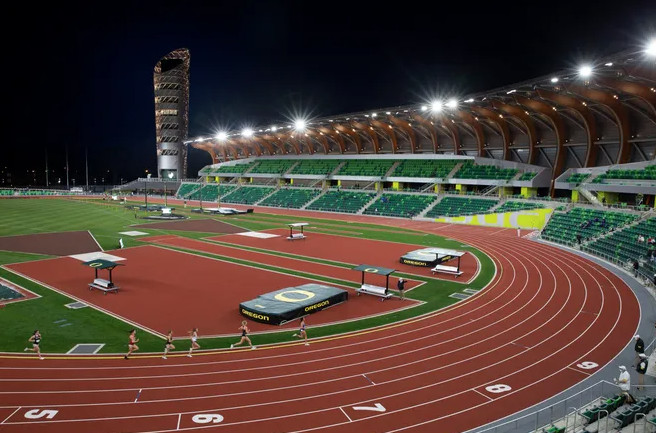
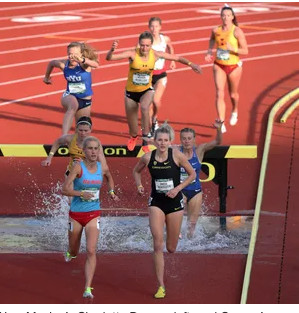
“This has been a long time coming for us here and our program,” Oregon coach Robert Johnson said after Day 1 of the multi-team Hayward Premiere, the Ducks’ first meet since June of 2018. “It’s been a surreal moment today. … Thankful, blessed, happy. I woke up this morning excited and giddy and couldn’t wait to shoot off the gun.”
Oregon picked up four wins and had several impressive performances, though none stood out more than Cole Hocker’s late surge to win the men’s 1,500-meter Invitational in the first home meet of his Oregon career.
The sophomore from Indiana, who captivated the running community with his national titles in the mile and 3,000 meters at the NCAA Indoor Track & Field Championship meet in March, looked sharp as ever Friday, winning in 3 minutes, 38.99 seconds.
“It was definitely different and even though it wasn’t a full stadium, there was something different about the energy especially with other teams being in there and in the mix,” Hocker said. “They definitely put on a good race, too. It was fun.”
It was also close, as Hocker went into the home straight with challengers right on his heels. But one last burst of speed gave him all the separation he’d need to get the win.
“Yeah I’m really happy with (the race),” he said. “I just went in with one goal to win and I executed that. I’m really happy about it because of where we are in training and completely training through this race and not really prepping specifically for this. I’m happy with the result.”
Talem Franco of BYU was second in 3:39.79 and Iowa State’s Festus Lagat was third in 3:39.93. Oregon’s Reed Brown was fifth in 3:40.90.
Cooper Teare was entered in the race but didn’t run. The Oregon senior, who set the collegiate record in the indoor mile in February, did pace the men’s 10,000 Invitational through the first 4K. He’s also entered in the 800 Saturday.
A sparse crowd of family and close Oregon associates were sprinkled throughout the stadium, as were members of all the participating teams.
It wasn’t loud, but for an opening night in the era of COVID-19 restrictions, it was still special.
“The feeling was unreal,” said Oregon senior hammer thrower Austin Tharp, a Sheldon High graduate who has a childhood worth of memories competing at the previous Hayward Field. “Just walking in with all the officials and other competitors, it felt like Hayward Magic was back. I’m from Eugene and my last home meet was the Oregon Twilight in 2018 so it was really nice to have family watching me compete at Hayward again for the first time in a few years.”
Tharp finished third Friday night, throwing a PR 195-feet.
For the trivia books, senior distance runner Jack Yearian was the Ducks’ first winner in the new stadium, as he ran a 40-second PR with a time of 14:1122 in the men’s open 5,000 race.
Tori Sloan was Oregon’s first field event winner, as the junior set a big PR with a mark of 19-5 1/4. Her previous best was 17-11 1/2.
Aneta Konieczek made her long-awaited outdoor debut for the Ducks with a second-place finish in the women’s steeplechase in a PR 9:59.42, making her the third-fastest performer in Oregon history and only the fourth Duck to run under 10 minutes.
“It was amazing to be out there today and have a pretty good opener,” Konieczek said. “I was just really excited, not only because it’s been awhile but also, it’s our track and I’d never raced at Hayward (Field) before. You could hear everyone and even with the smaller crowd, the magic was there.”
Konieczek transferred to Oregon in 2019 from Division II Western State in Colorado where she was a steeplechase all-American with a 10:01.02 PR. During the recently completed indoor season, Konieczek placed seventh in the mile at NCAA championship meet.
New Mexico senior Charlotte Prouse was the winner in a collegiate-leading 9:54.65. The two-time NCAA runner-up took the lead from Konieczek with two laps to go and slowly separated from the Oregon redshirt junior.
“After indoor nationals, there was some down time and I hadn’t really done any hurdle work coming into today but I thought everything felt pretty good," Konieczek said. "I didn’t really know what to expect especially in my first (steeplechase) race in three year but it helped to have Charlotte Prouse in the race so we could work together.”
Oregon’s Matt Wisner, a senior transfer from Duke, set a six-second PR of 3:42.95 in his victory in the men’s open 1,500.
Carmela Cardama Baez, the 2019 NCAA outdoor runner-up, finished third in women’s 10,000 Invitational in 32:57.01, nearly topping her PR of 32:55.50. Boise State’s Clare O’Brien won in 32:43.70, and Weber State’s Lexie Thompson was second in 32:49.62.
Oregon State’s Lindsay McShane and Sydney Guthrie-Baker went 1-2 in the women’s hammer. McShane won with a throw of 208-03 and Guthrie-Baker threw 195-07.
Login to leave a comment
Hayward Field’s Grand Reopening, And a Ton of NCAA Stars Racing
When the University of Oregon’s Hayward Field reopened on Friday with the Hayward Premiere meet, 1,028 days will had passed since it last hosted a track meet.
Back then, on June 9, 2018, the marathon world record was 2:02:57, the Nike Oregon Project still existed, Donald Trump had zero impeachments, and we were still 18 months away from learning the word “coronavirus.” It has been a minute.

With an estimated cost of $270 million, “new” Hayward is easily the most expensive track & field-specific facility ever built in the United States and immediately becomes the center of the American track & field universe: over the next 16 months, the stadium will host two NCAA championships, the US Olympic Trials, and the 2022 World Championships. Based on everything we’ve seen, it should be a fitting home (if you haven’t already, check out the Hayward Field website, which has tons of info and cool photos of the rebuild).
On Friday, track is finally back in Eugene. And it should be quite a meet. Some of the country’s top distance programs — BYU, Arkansas, Iowa State — are sending athletes to compete at the Hayward Premiere, and of course the host Ducks will be racing some stars of their own. Between Oregon’s Cole Hocker, BYU’s Courtney Wayment and Conner Mantz, and Iowa State’s Wesley Kiptoo and Edwin Kurgat, no less than five NCAA individual champions will get to test out the new track.
The Hayward Premiere is the first of four regular-season home meets at Hayward in 2021, followed by the West Coast Classic (April 17), Oregon Relays (April 23-24), and Oregon Twilight (May 7) before the stadium hosts NCAAs (June 9-12), the Olympic Trials (June 18-27), and Prefontaine Classic (August 21).
Meet details and preview below.
How does the new stadium look? And is it fast?To say we at LetsRun.com are excited about the new Hayward Field is an understatement. There was no better place in America to watch a track meet than the old stadium, and while we are firm believers that not every single big meet should be in Eugene, it was distinctly weird not having any meets there the past two years. The new stadium may lack the character of “historic” Hayward Field, but from the wooden roof beams to the Bowerman Tower, it already sports an iconic look. After sitting empty for months — outside of UO practices — it will be great to see Hayward Field doing what it was built for: hosting meets.
And the good news is that some fans and media will be there in person. Under Oregon’s current athletics guidelines, a limited number of family and guests of coaches and athletes are allowed at the meet. Obviously, it would have been nice to open up the new Hayward with a full house, but this is better than totally empty stands. And the fact that Oregon got permission from the state and county to host four regular-season meets with spectators is a step in the right direction toward an Olympic Trials with fans (how many will be allowed in June remains to be seen).
As for the second question — is the new track fast? — we assume the answer has to be yes if they spent $200+ million on it and we imagine we’ll find out this soon. While this will be the outdoor opener for the athletes, the story of Covid-19 and the super spike ear is that no one seems to wait to run fast anymore. People want to get fast marks up ASAP in case of a Covid-19 delay.
The weather looks decent (high of 61 in Eugene on Friday, 64 on Saturday, and no rain) and the fields are full of quality so it will be interesting to see what type of marks are put up.
And will the infamous headwind still blow on the backstraight?
by Let’s Run
Login to leave a comment
University of Oregon student Cooper Teare clocks 3:50.39 mile in Fayetteville
University of Oregon student Cooper Teare made a huge breakthrough on the first day of the Tyson Invitational in Fayetteville on Friday (12), smashing his outright mile PB with 3:50.39 to move into the world indoor all-time top 10.
There were huge PBs across the board as his teammates Cole Hocker (3:50.55) and Charlie Hunter (3:53.49) finished second and third.
In an all-Oregon line-up, Angus Folmi and Reed Brown set the early pace, going through 600m just inside 1:26 and 1000m in 2:24.3. Teare, Hocker and Hunter maintained that tempo for the final two laps with 21-year-old Teare kicking to victory in a collegiate record of 3:50.39. His time ranks him seventh on the world indoor all-time list, just behind fellow US athletes Bernard Lagat and Johnny Gregorek, but ahead of Olympic champion Matthew Centrowitz.
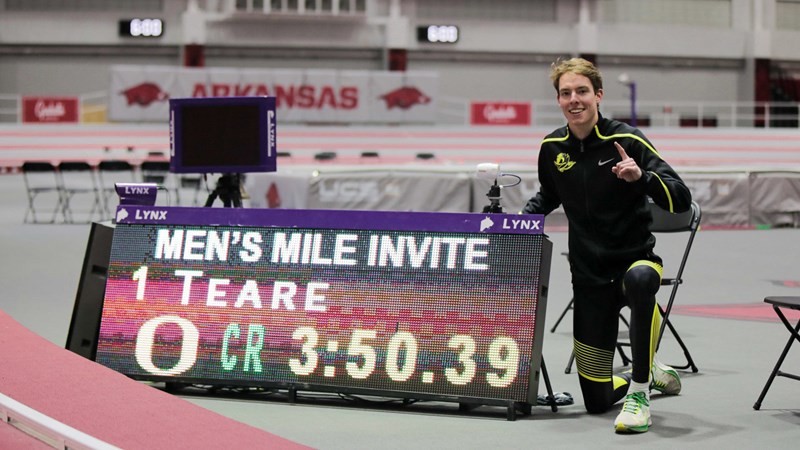
Hocker, aged just 19, crossed the line in 3:50.55 – the fastest indoor mile ever recorded by a teenager and good enough for eighth on the world indoor all-time list. Hunter’s 3:53.49, meanwhile, took a second off his own Australian indoor record, set just two weeks prior on the same track.
The en-route 1500m splits of 3:35.46, 3:35.63 and 3:36.94 respectively were also outright PBs for all three men.

Isaac Grimes produced another world-leading mark in Fayetteville. The 23-year-old long jumper went out to 8.04m in round two then improved to a lifetime best of 8.27m in round five. He went even farther in the final round, sailing out to 8.33m. He now ranks just outside the US indoor all-time top 10. JuVaughn Harrison was second with 8.09m.
Elsewhere in Fayetteville, Bryce Deadmon sped to an indoor 400m PB of 45.22, the third-fastest time in the world this year, to win comfortably from Champion Allison (45.99).
The sprint hurdles finals were swift, too, with teenager Grace Stark winning the women’s race in 7.96 from Pan-American Games silver medallist Chanel Brissett (7.98), while former world U20 record-holder Trey Cunningham ran 7.55 to win the men’s event.
Fast 400s were the highlight of the first day of the Tiger Paw Invitational in Clemson on Friday (12). 20-year-old Randolph Ross won the fastest heat in a PB of 45.21, finishing just ahead of Jacory Patterson (45.24) and Trevor Stewart (45.55). Trinidad and Tobago’s Dwight St Hillaire took the second heat in 45.64 with 400m hurdles specialist Kyron McMaster placing second in 45.92.
Jamaica’s 2015 world champion Danielle Williams won the 60m hurdles in 7.87, while Tavarius Wright was the men’s 60m flat winner in 6.57.
At the Texas Tech Shootout in Lubbock, world U20 silver medallist Twanisha Terry trimmed her 60m PB to 7.13, while Brendon Stewart won the men’s short sprint in 6.58. Teenager Bailey Lear set an outright PB of 51.94 to win the women’s 400m.
by World Athletics
Login to leave a comment





